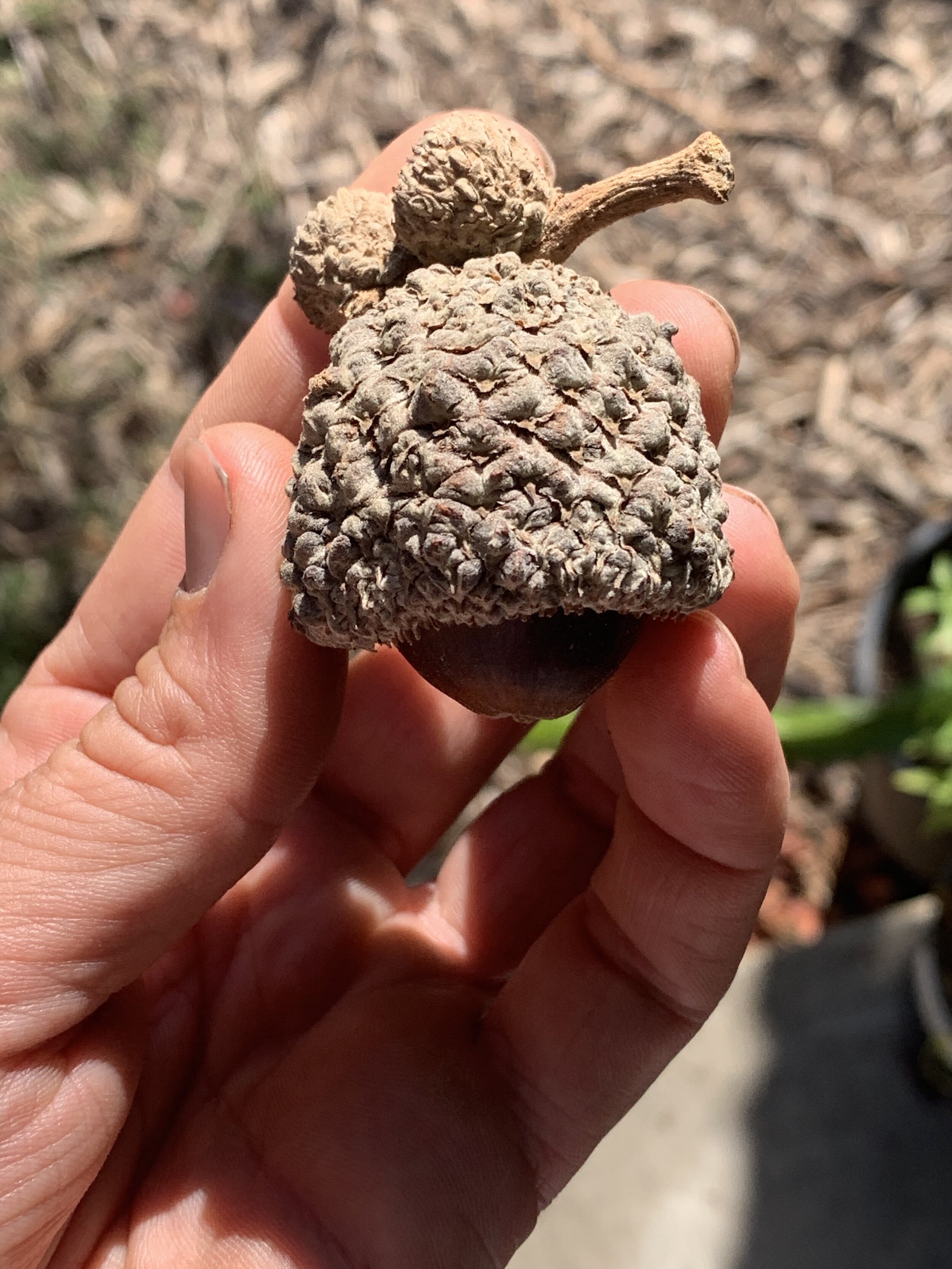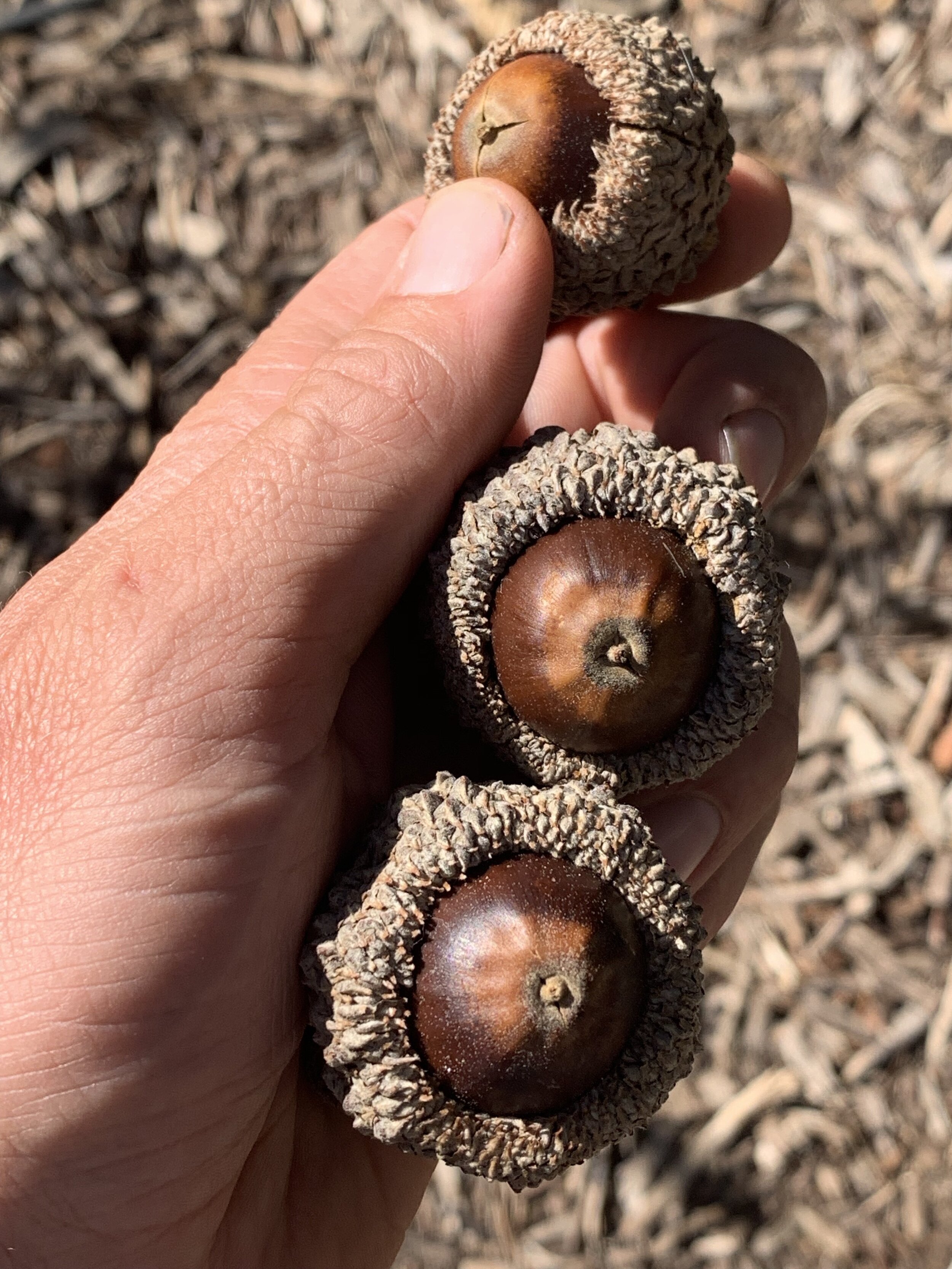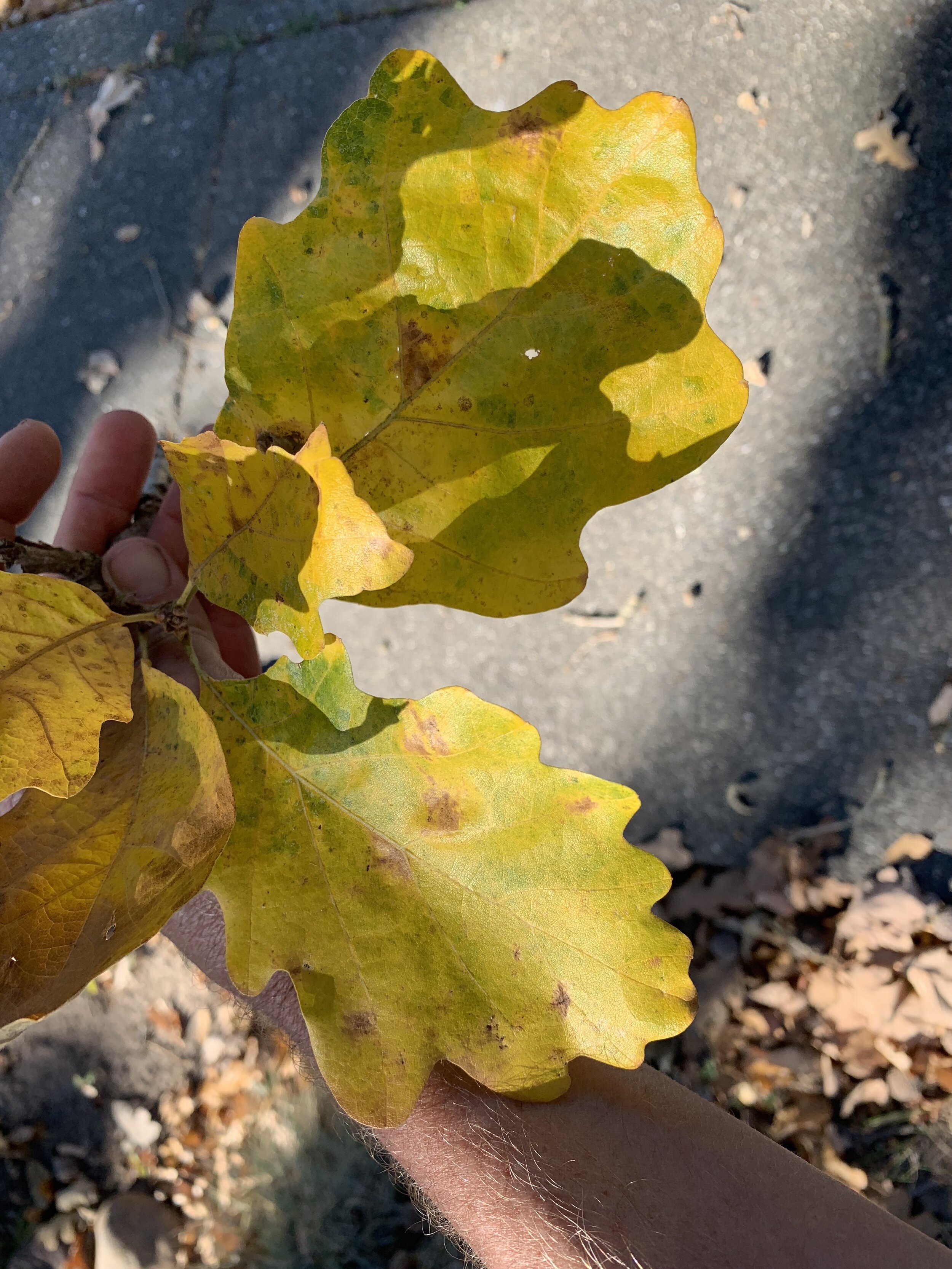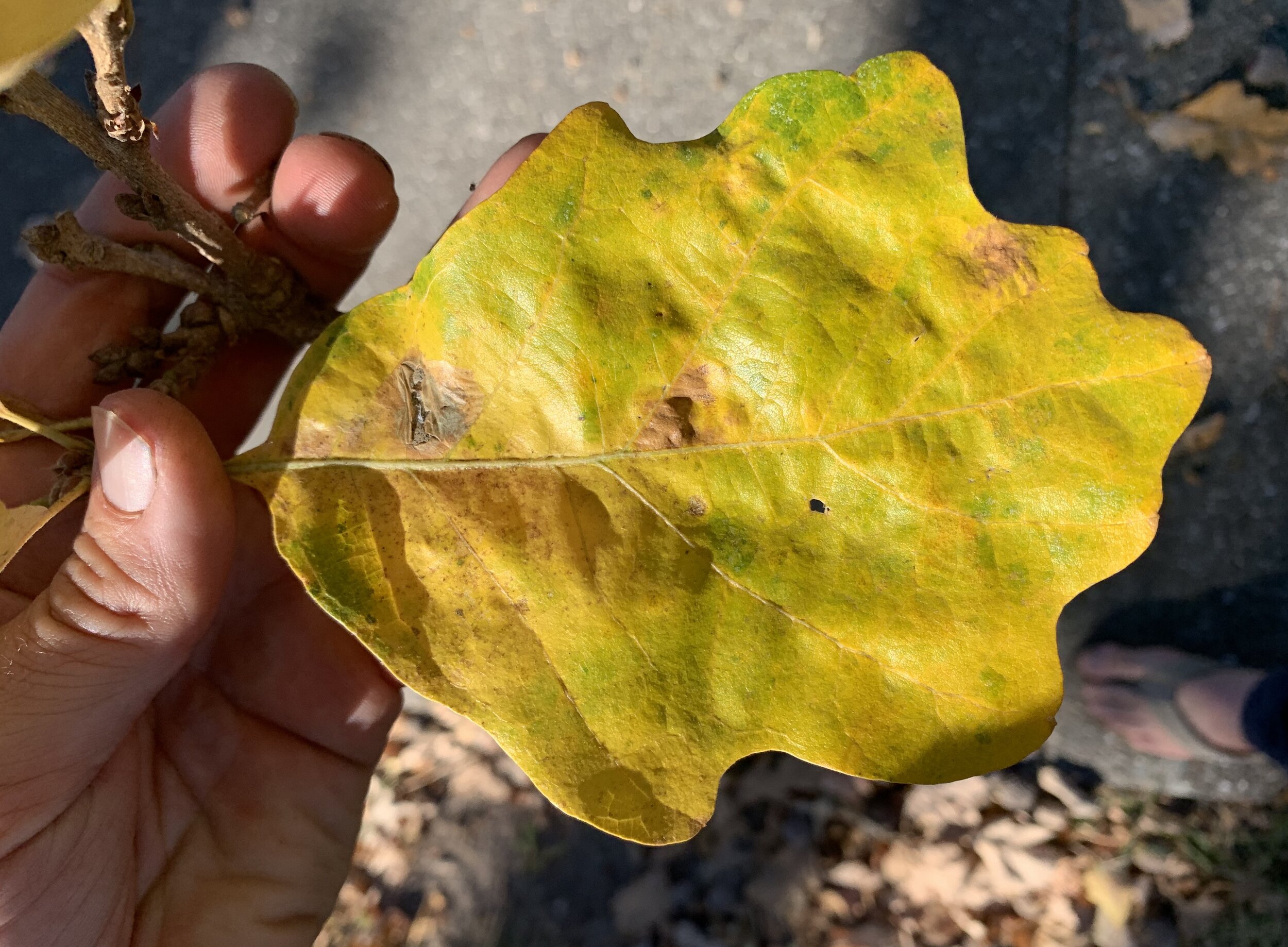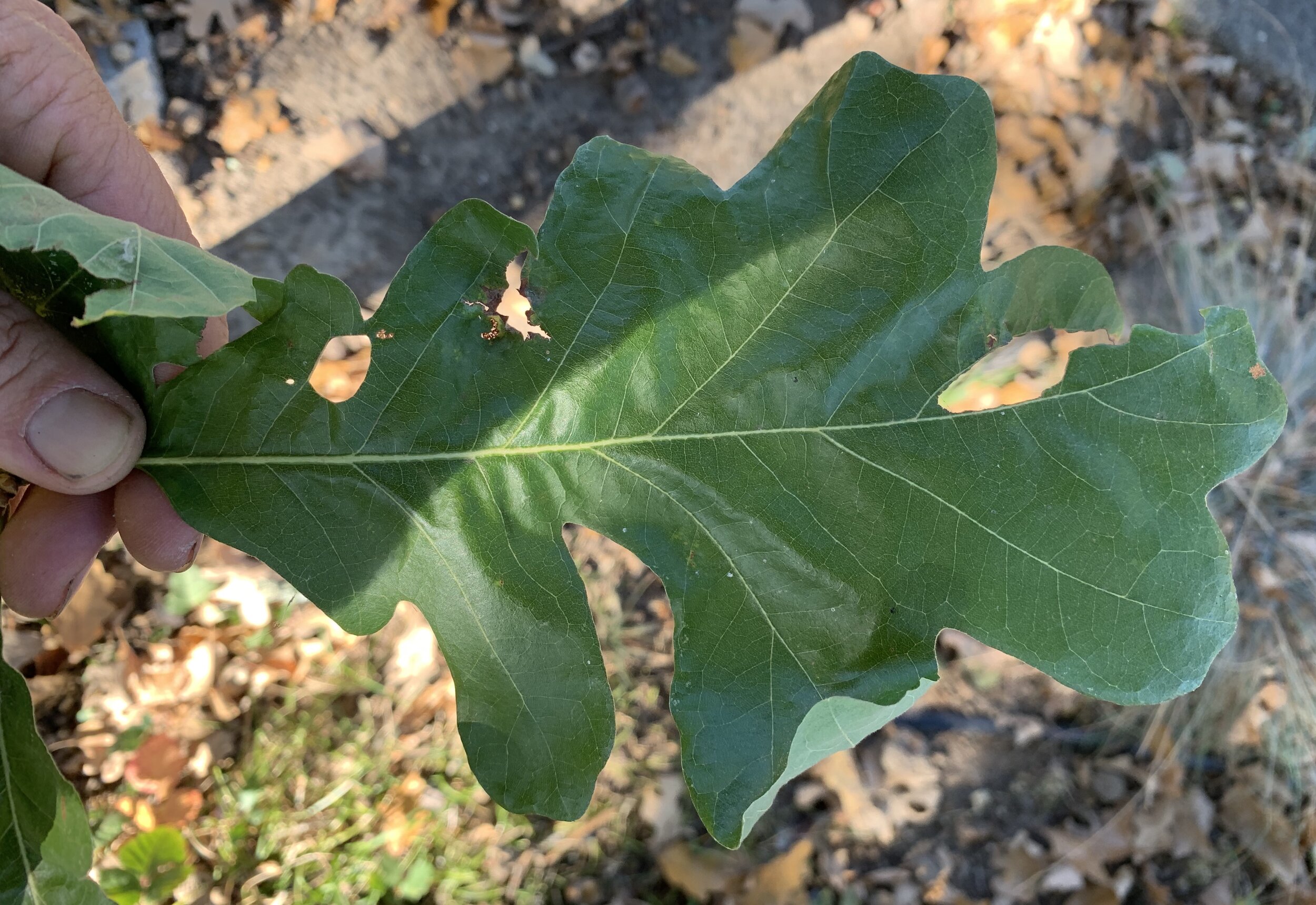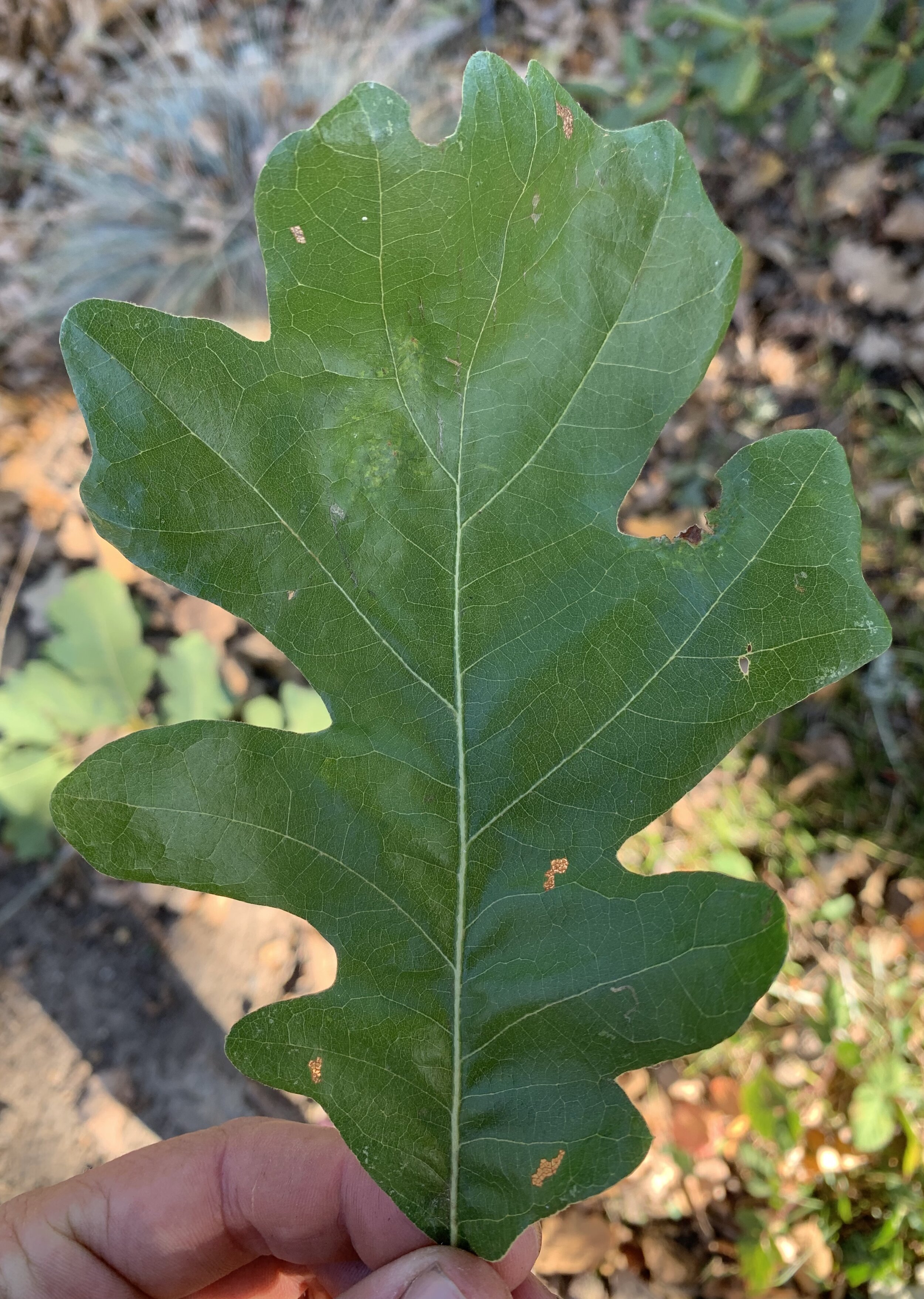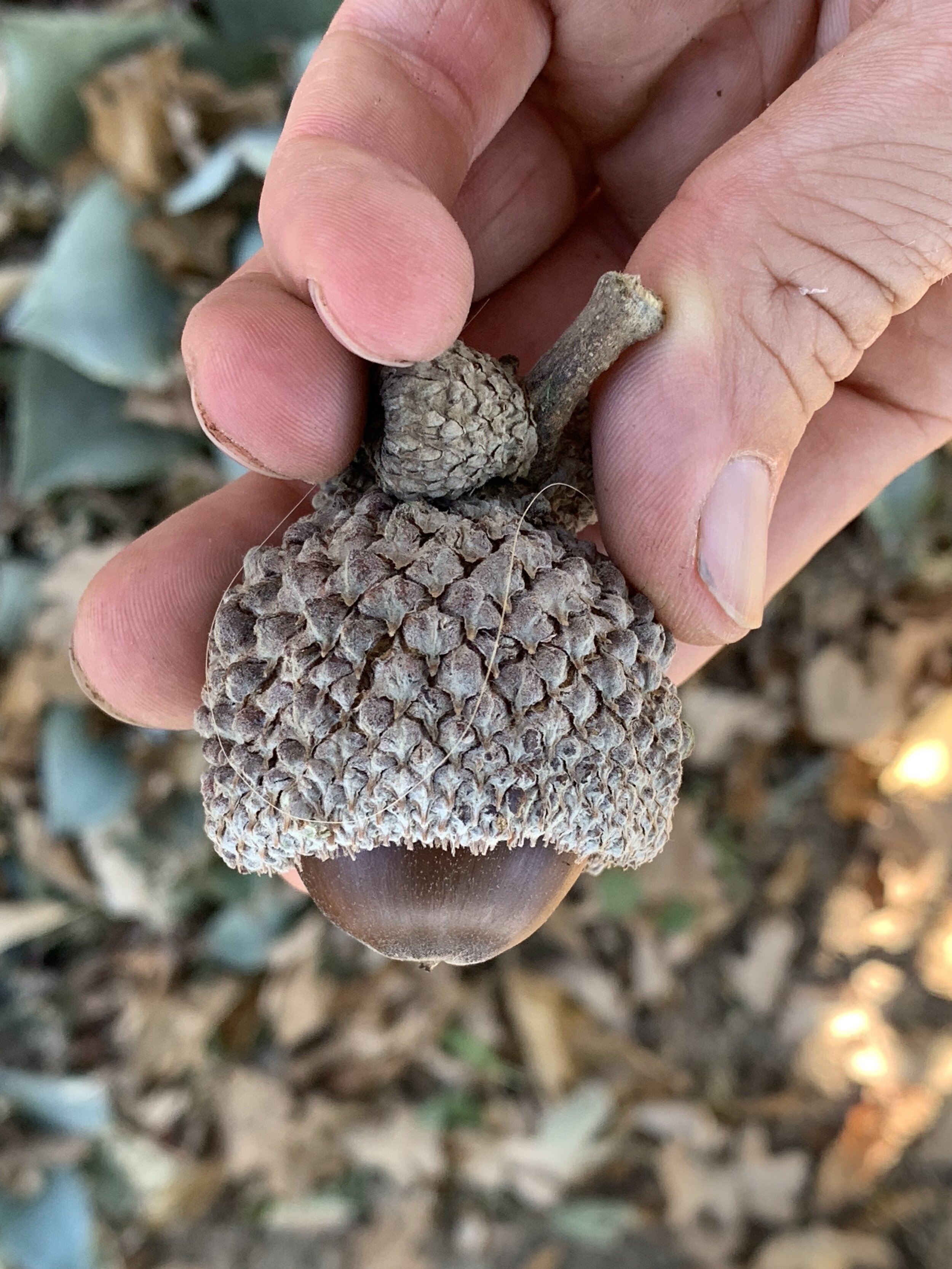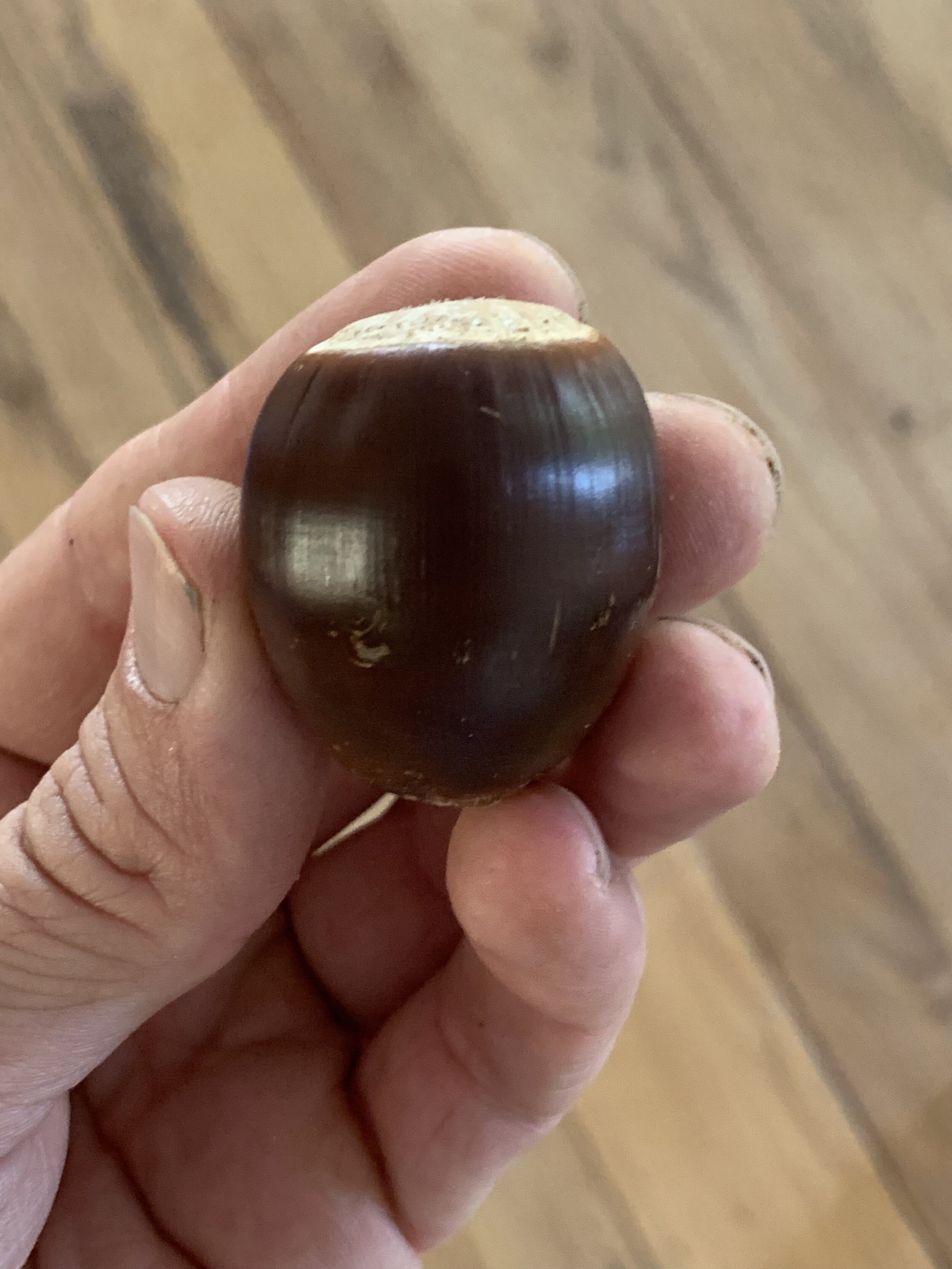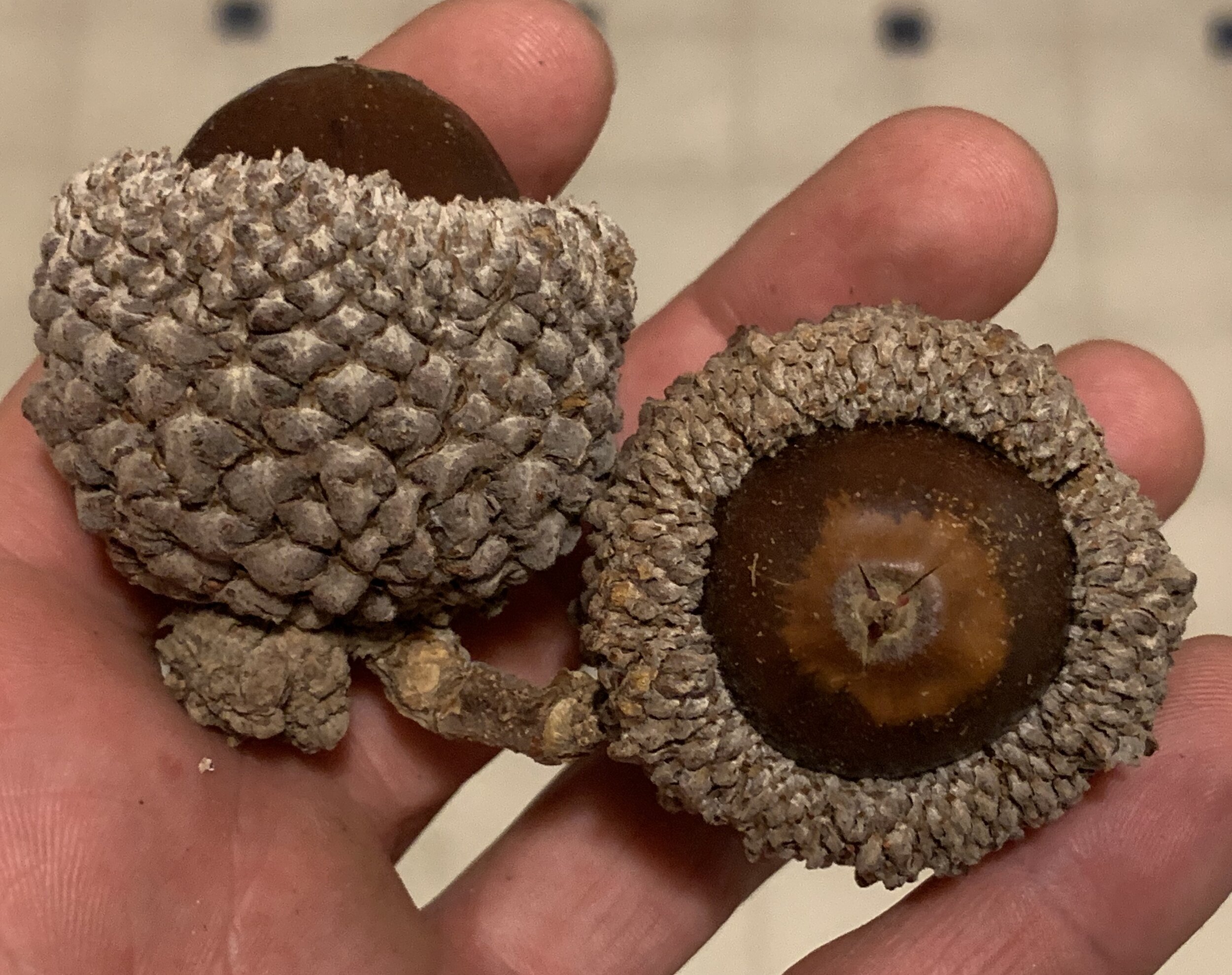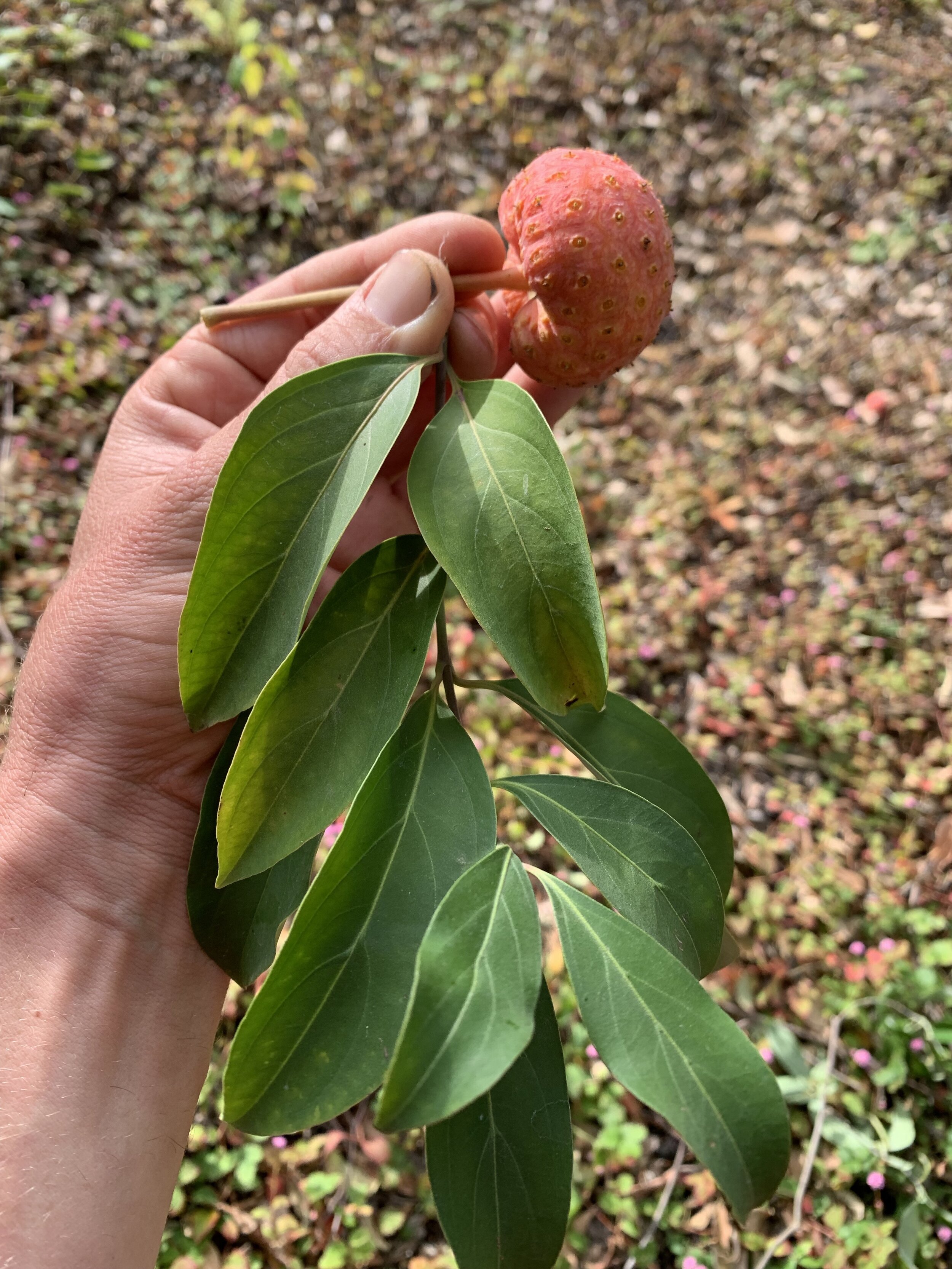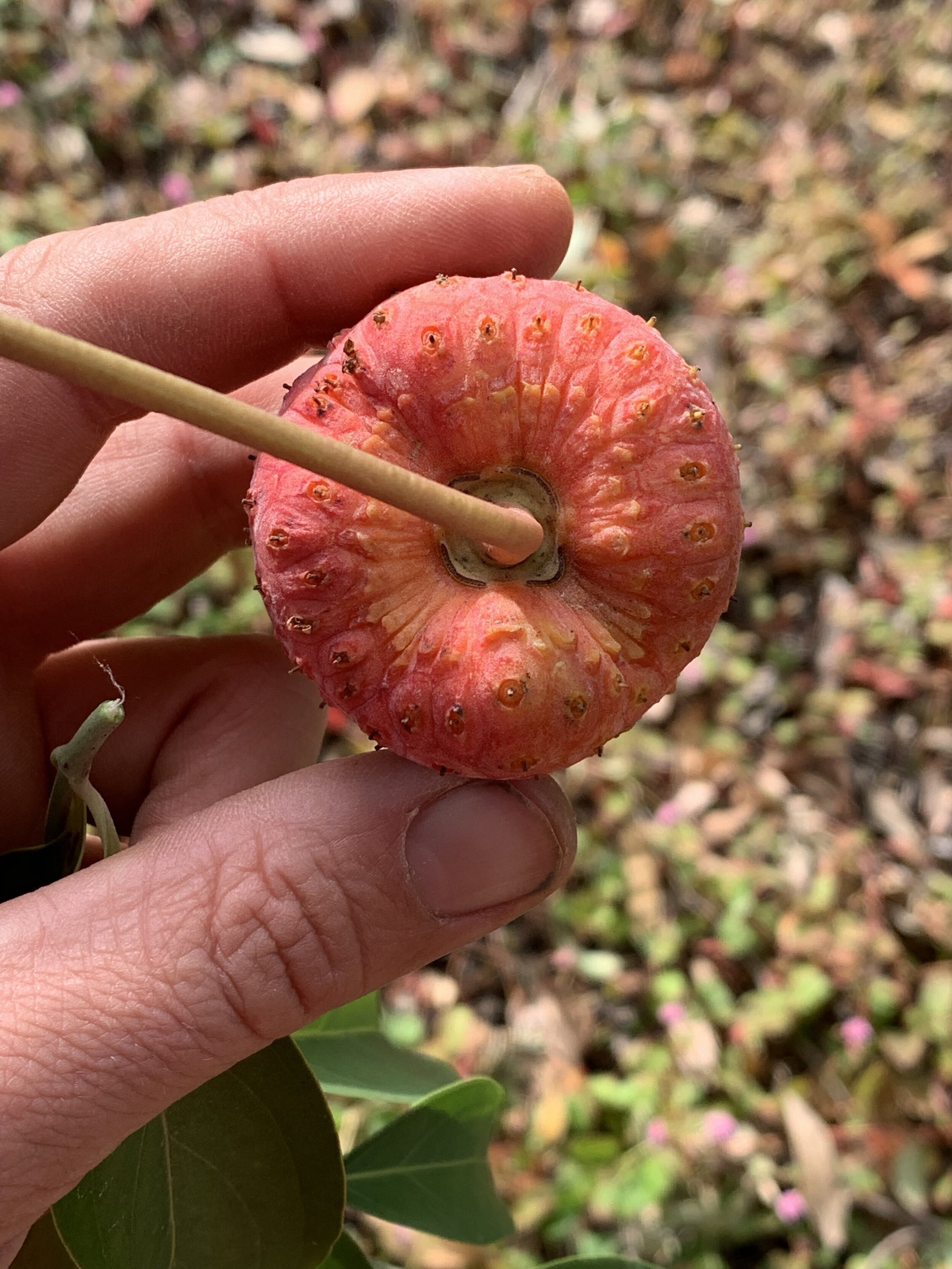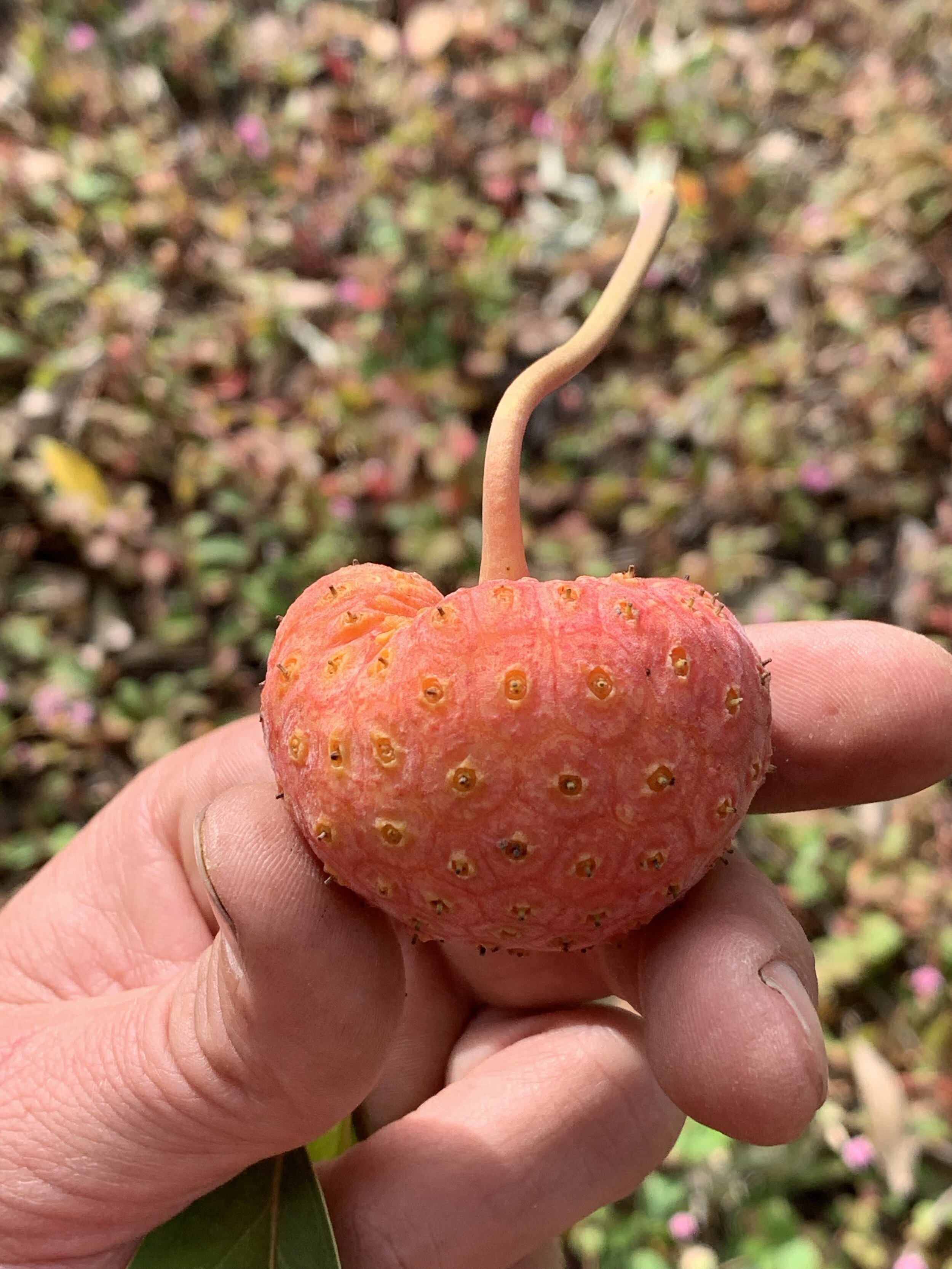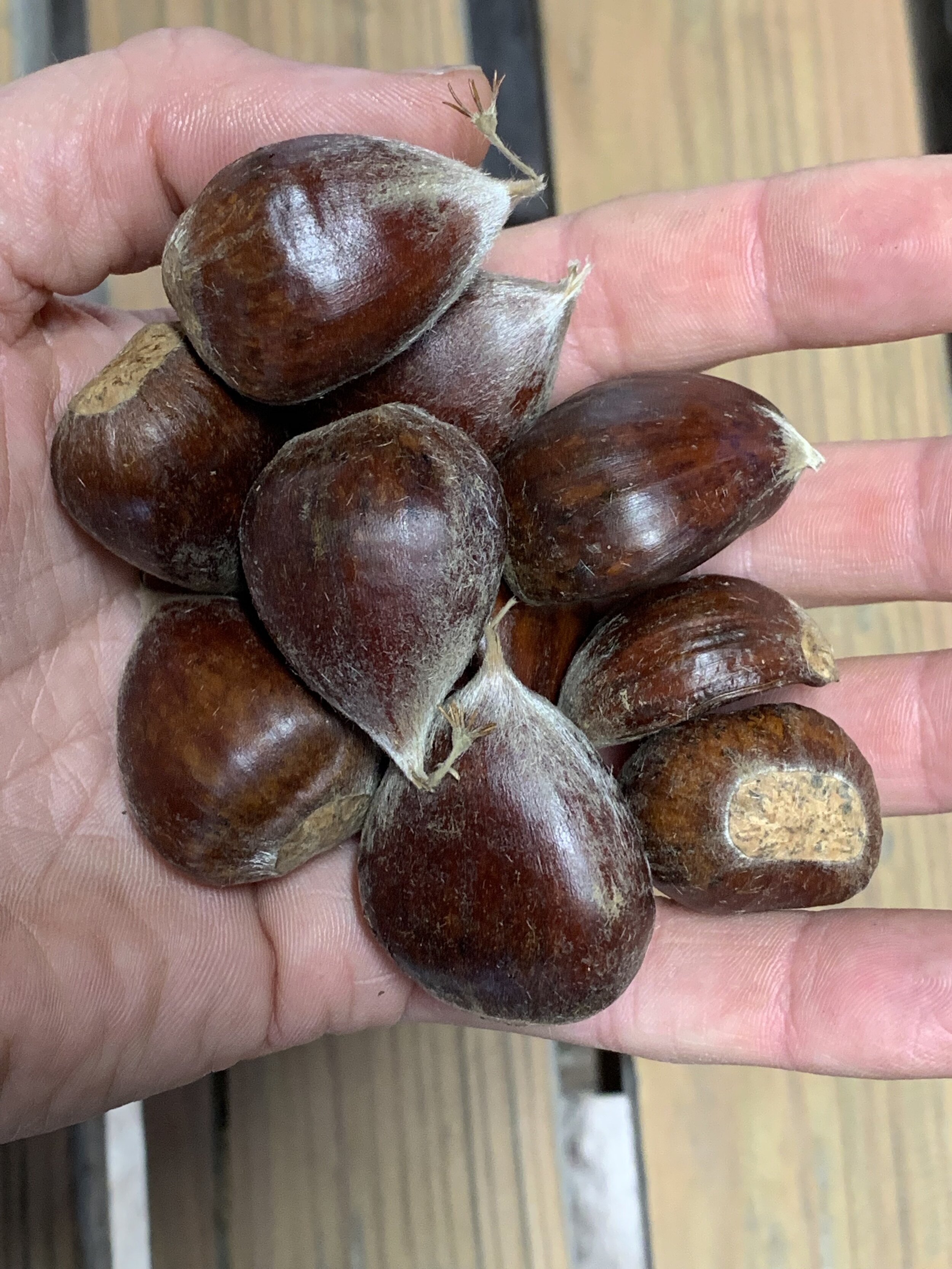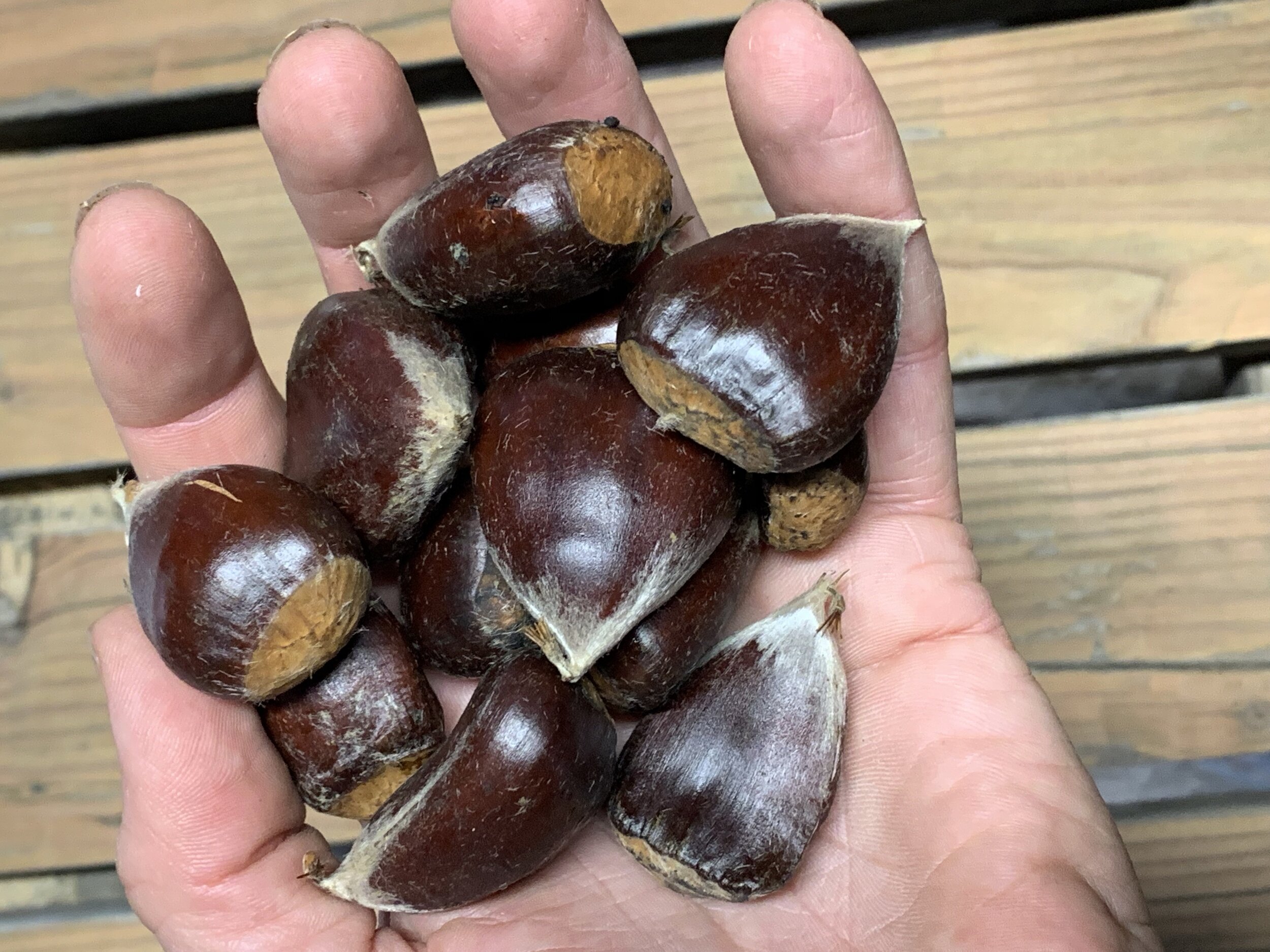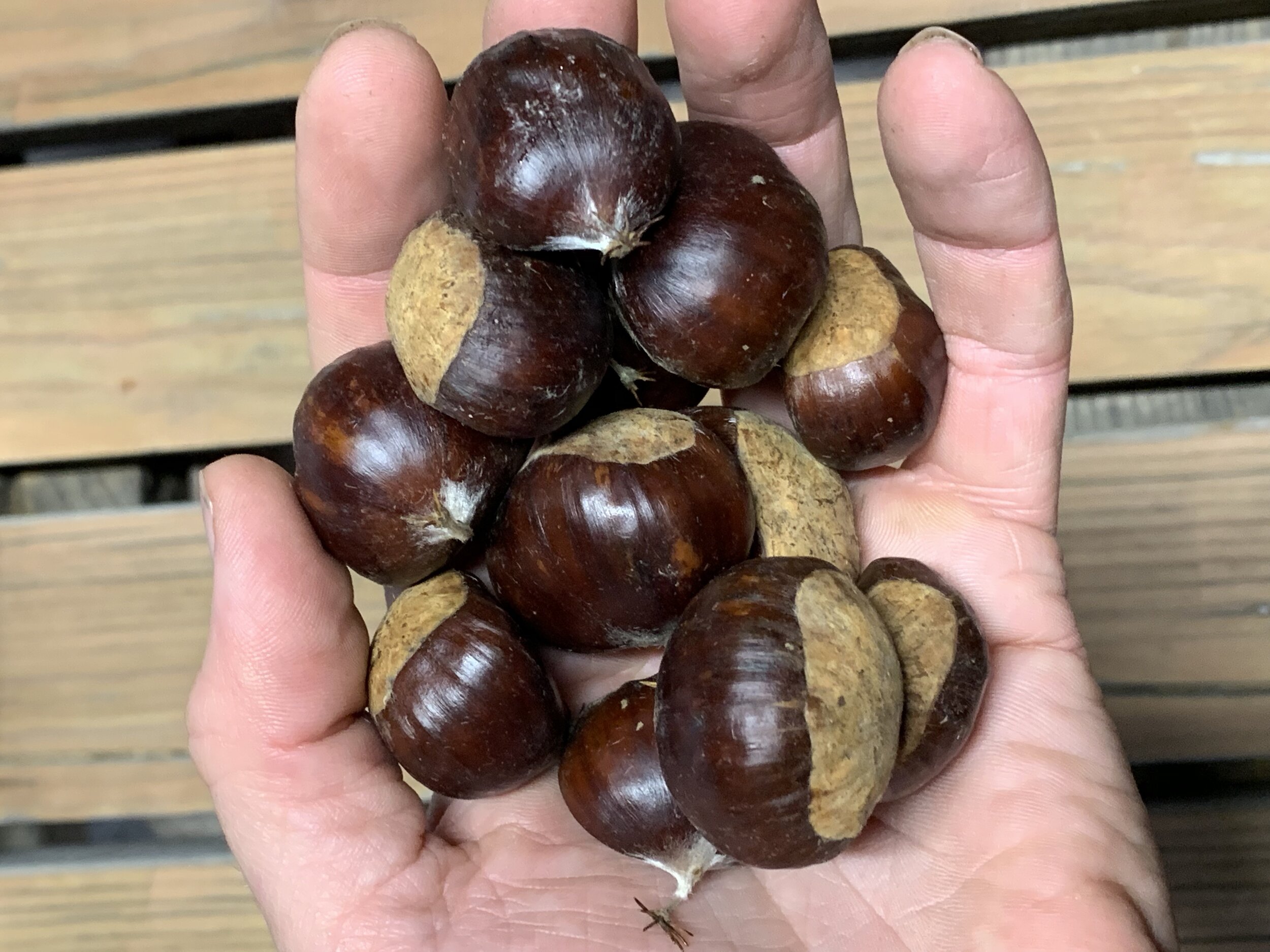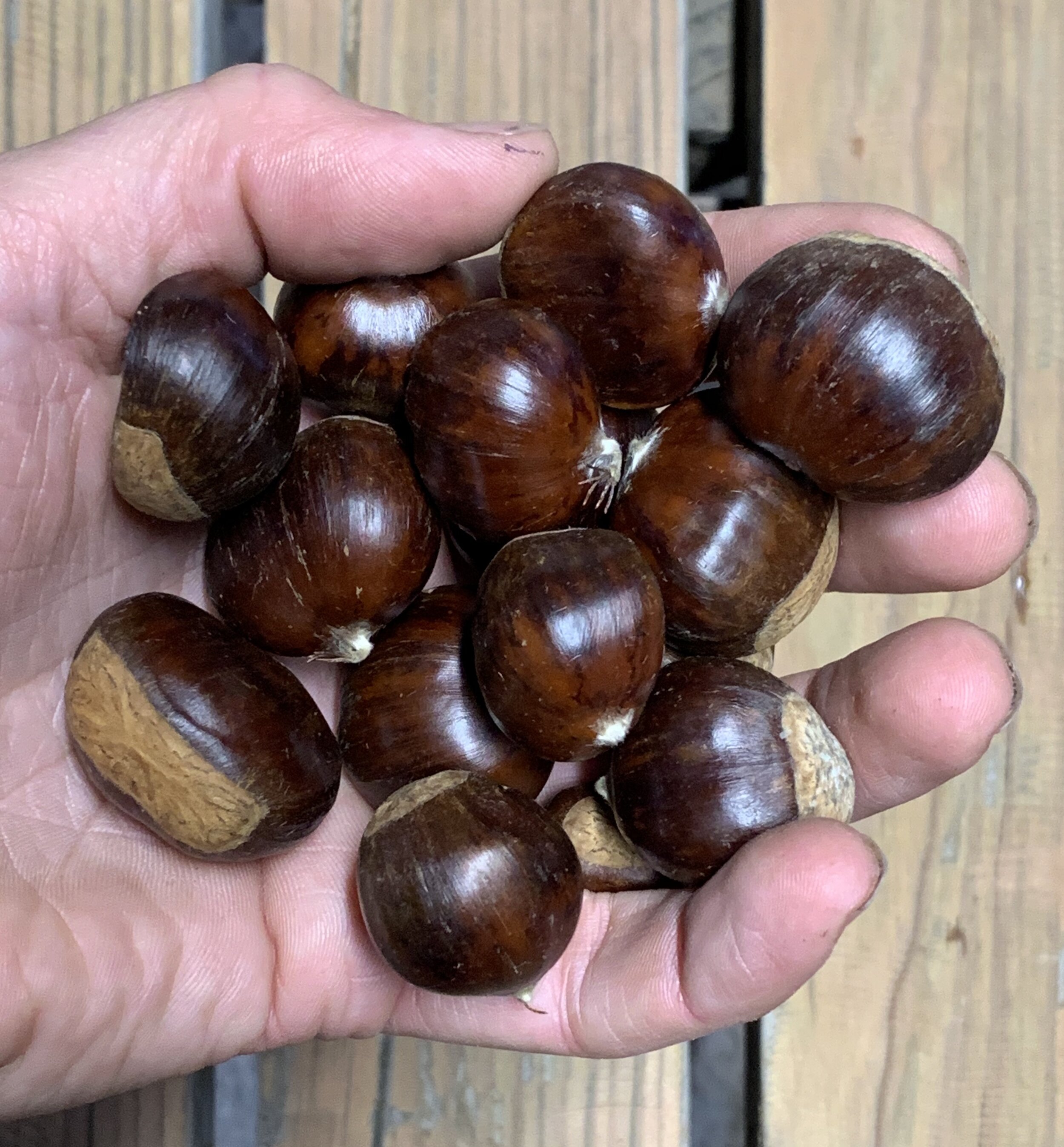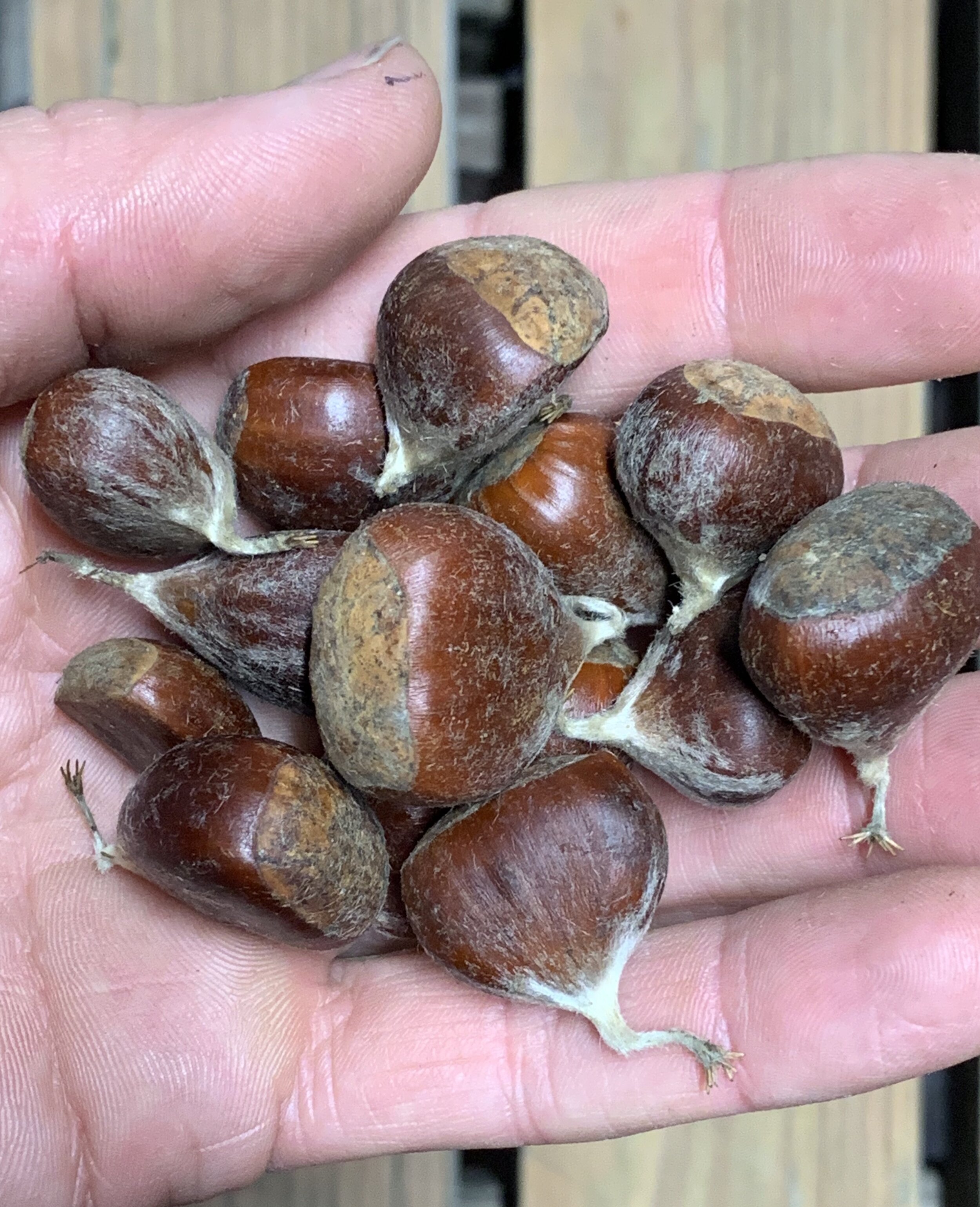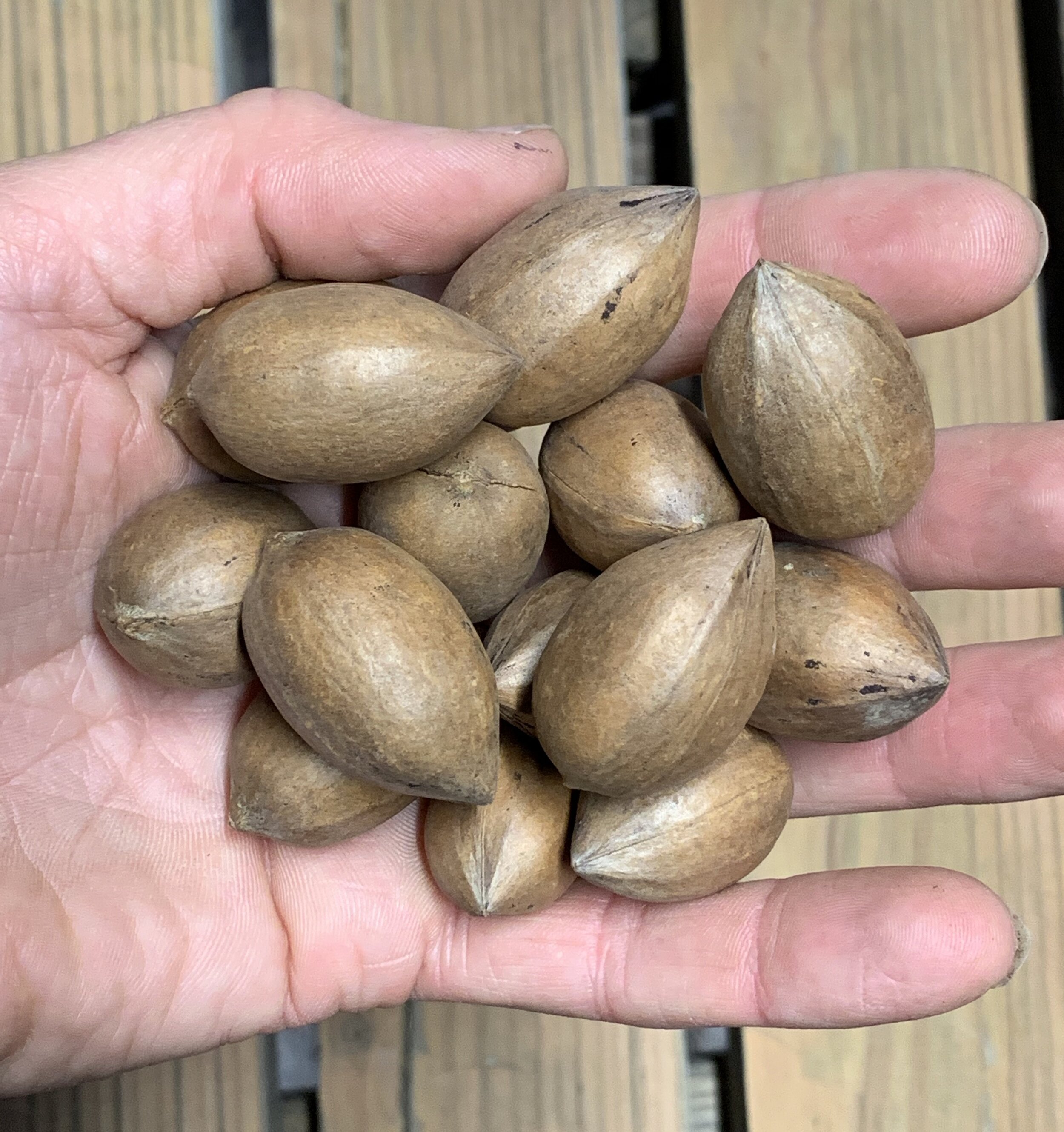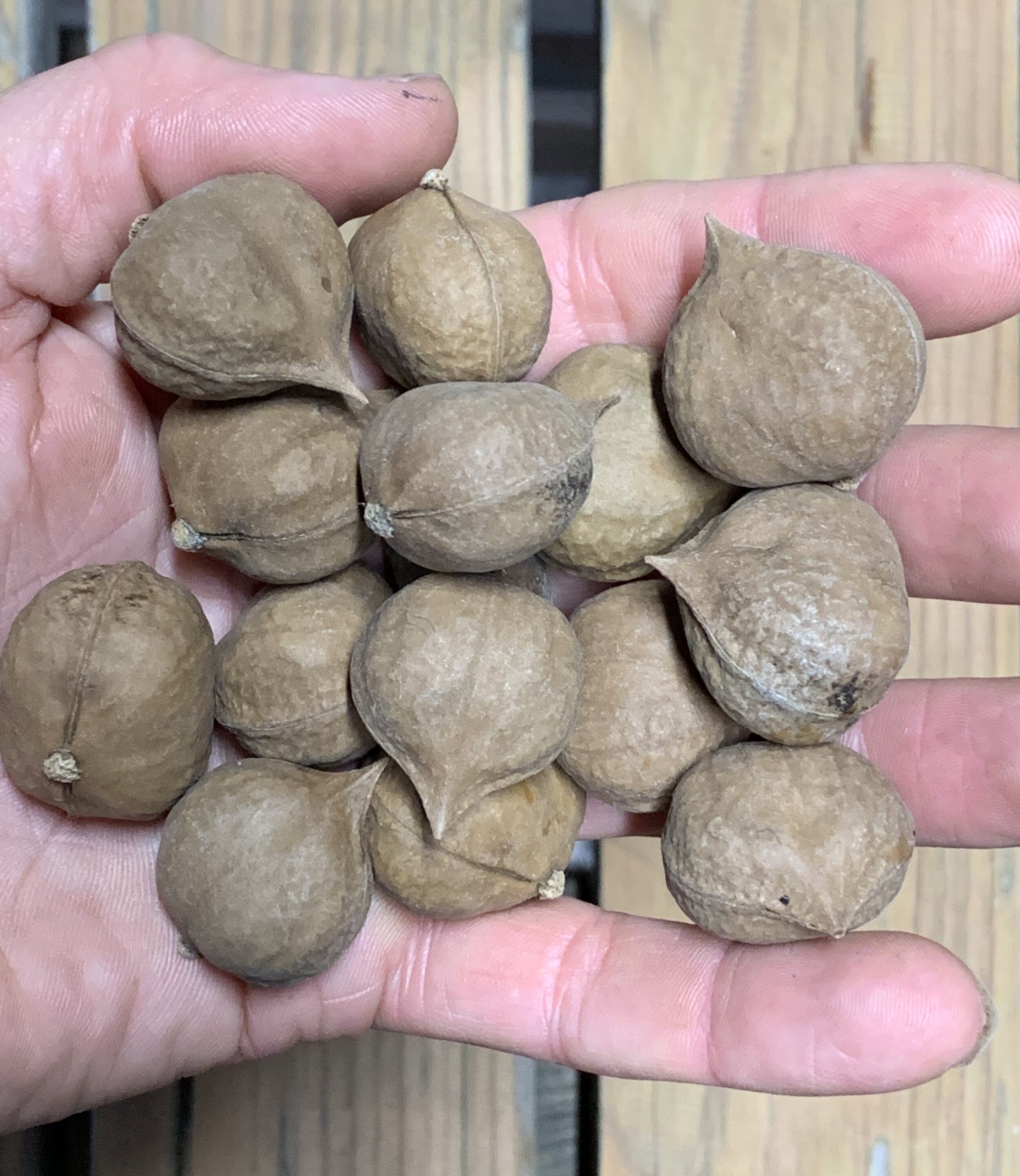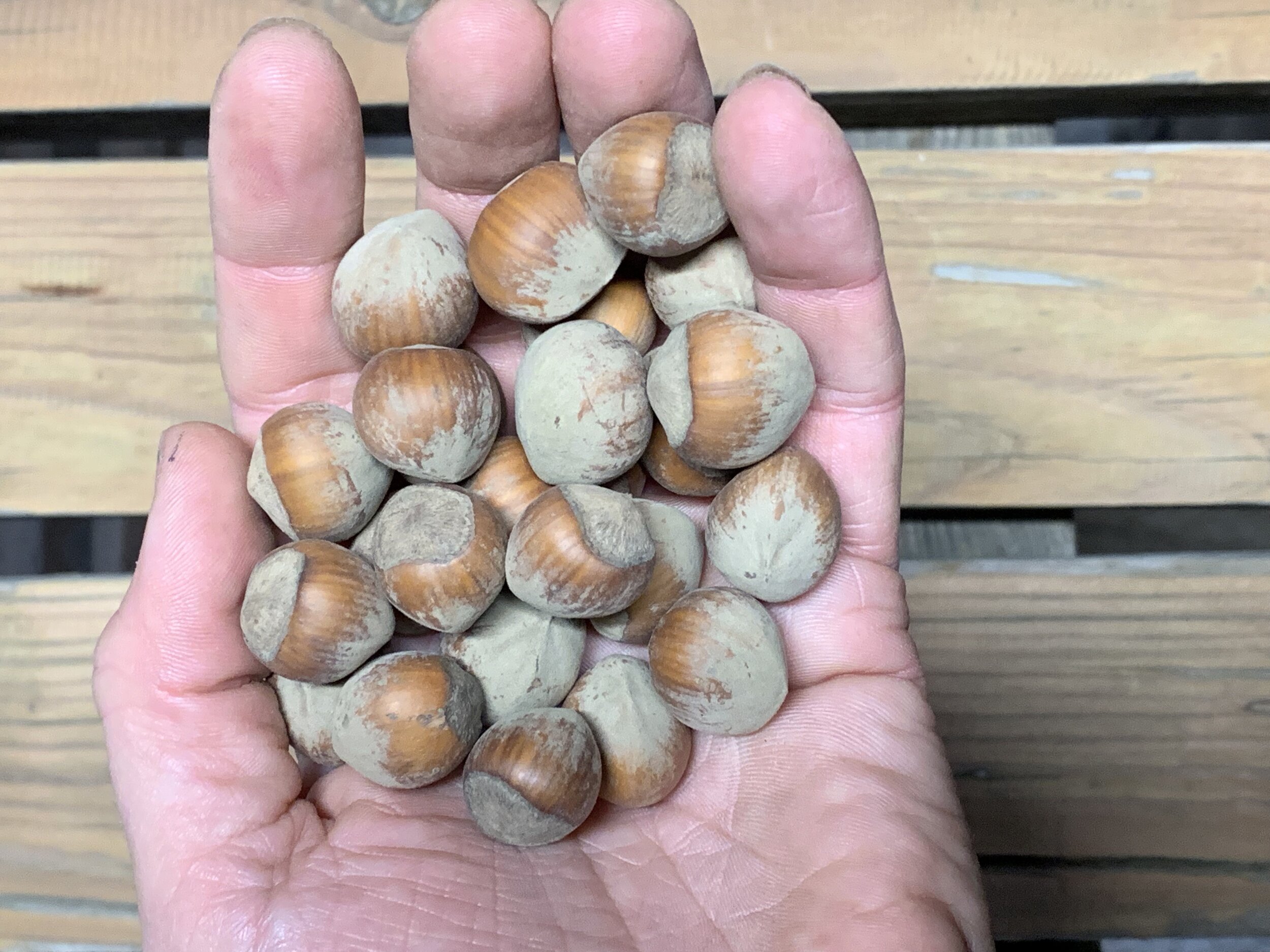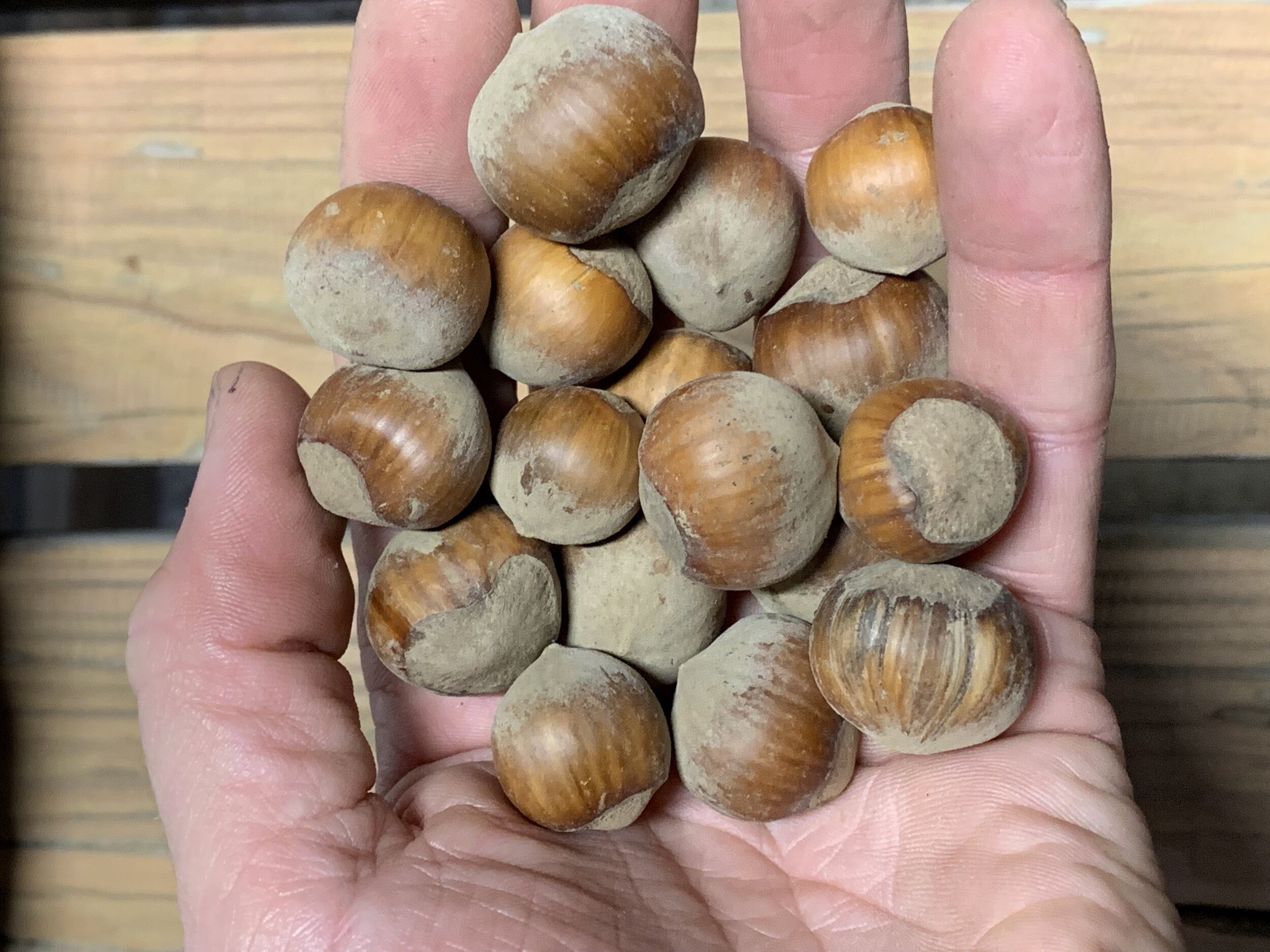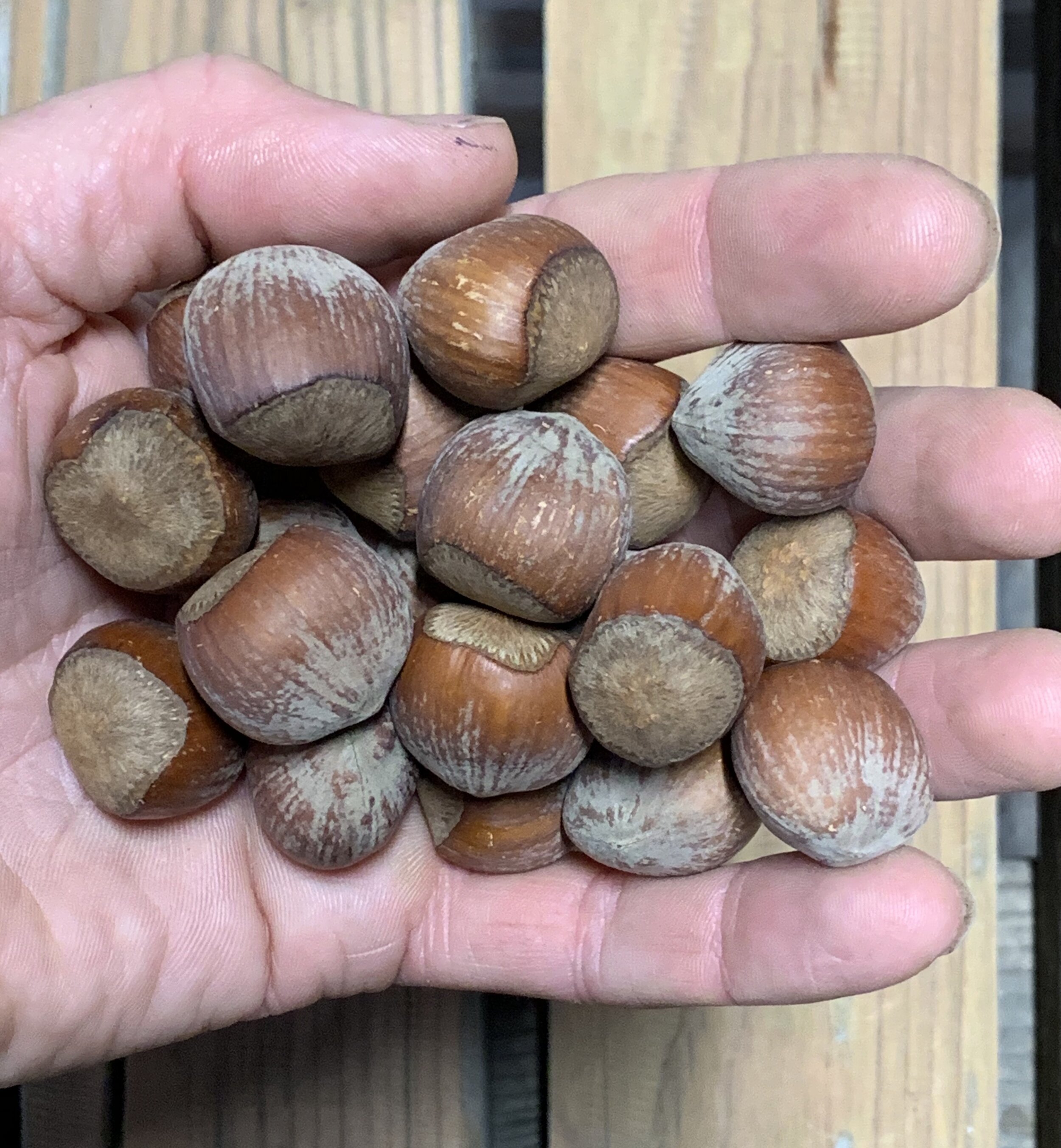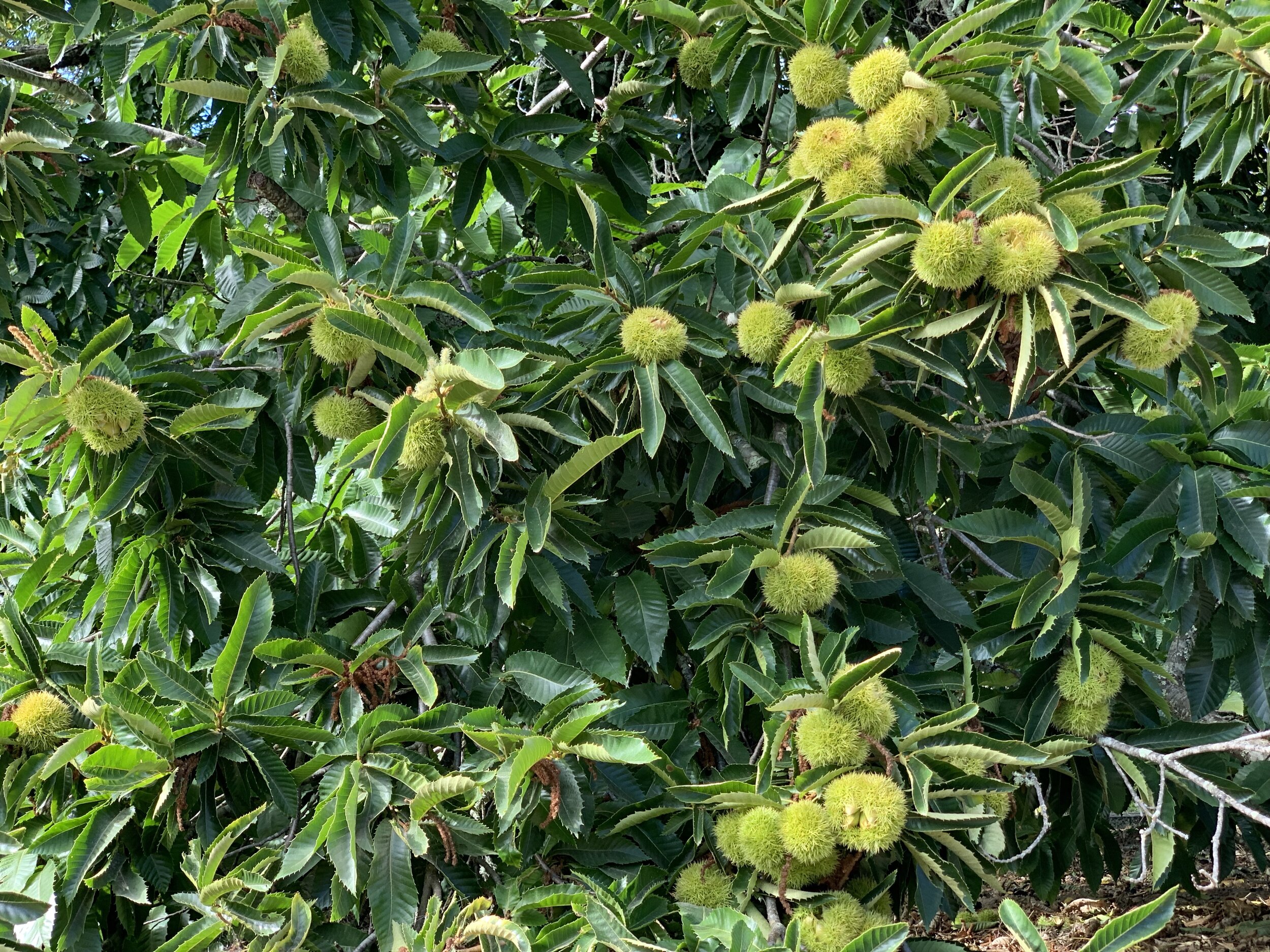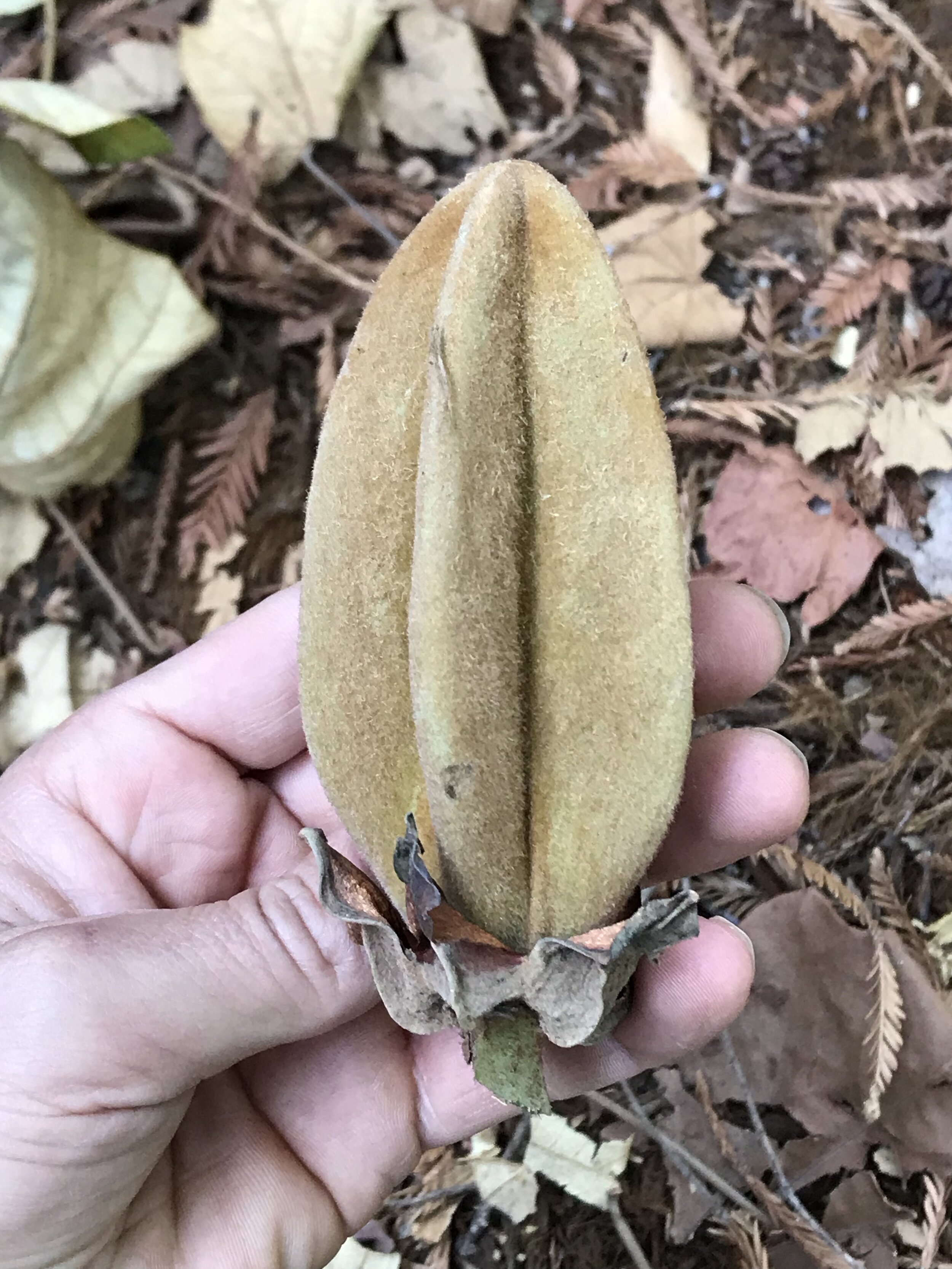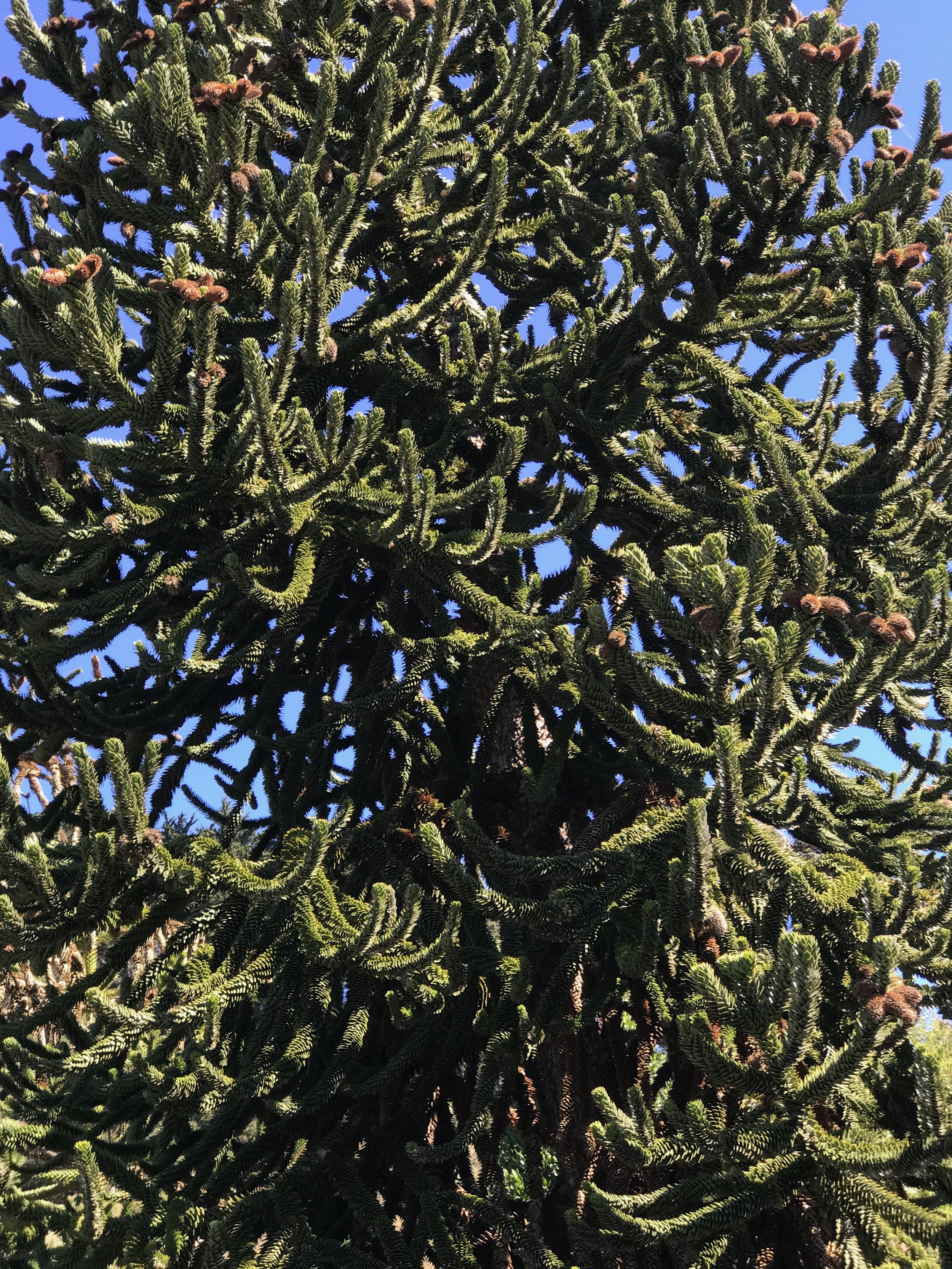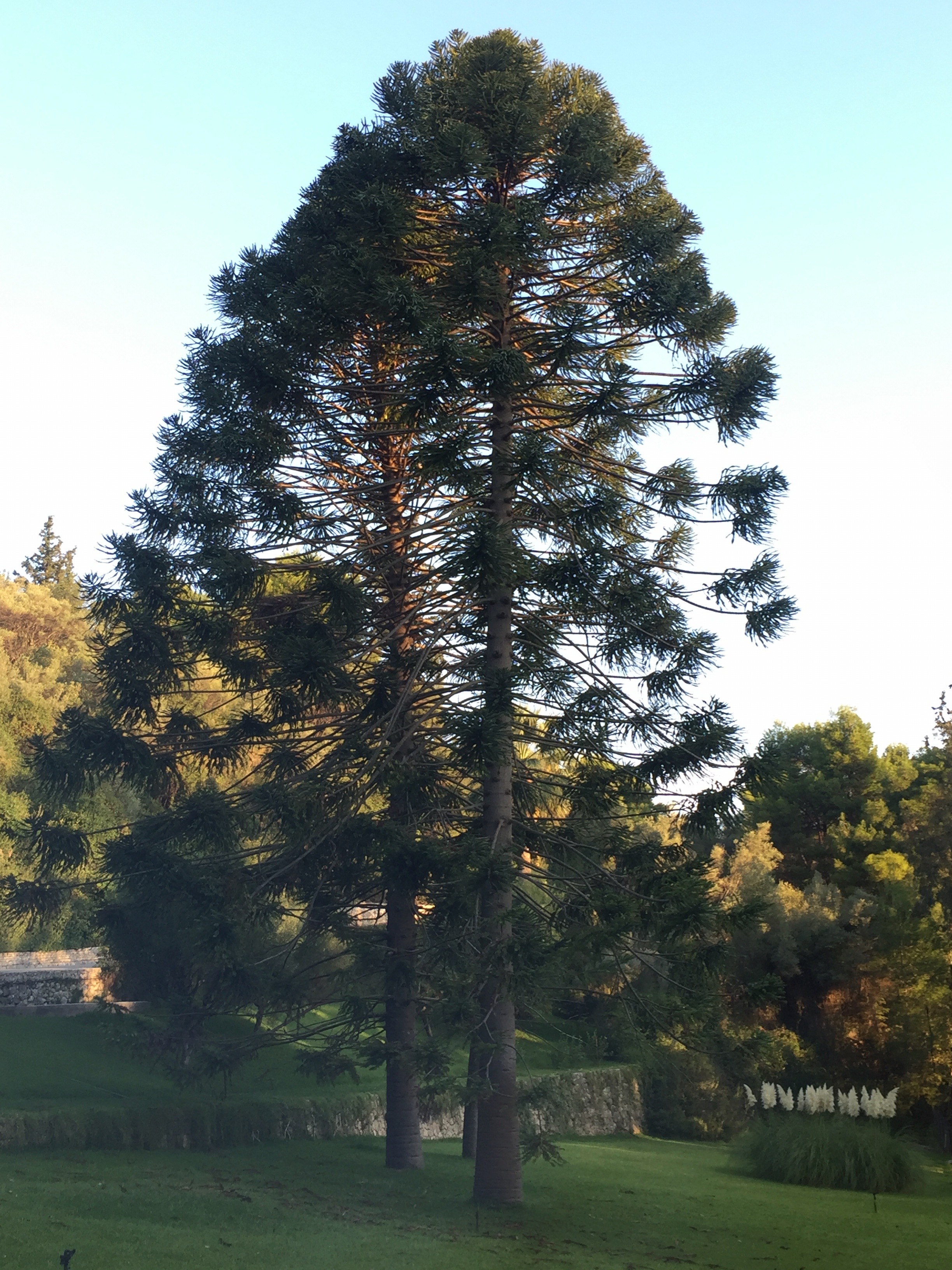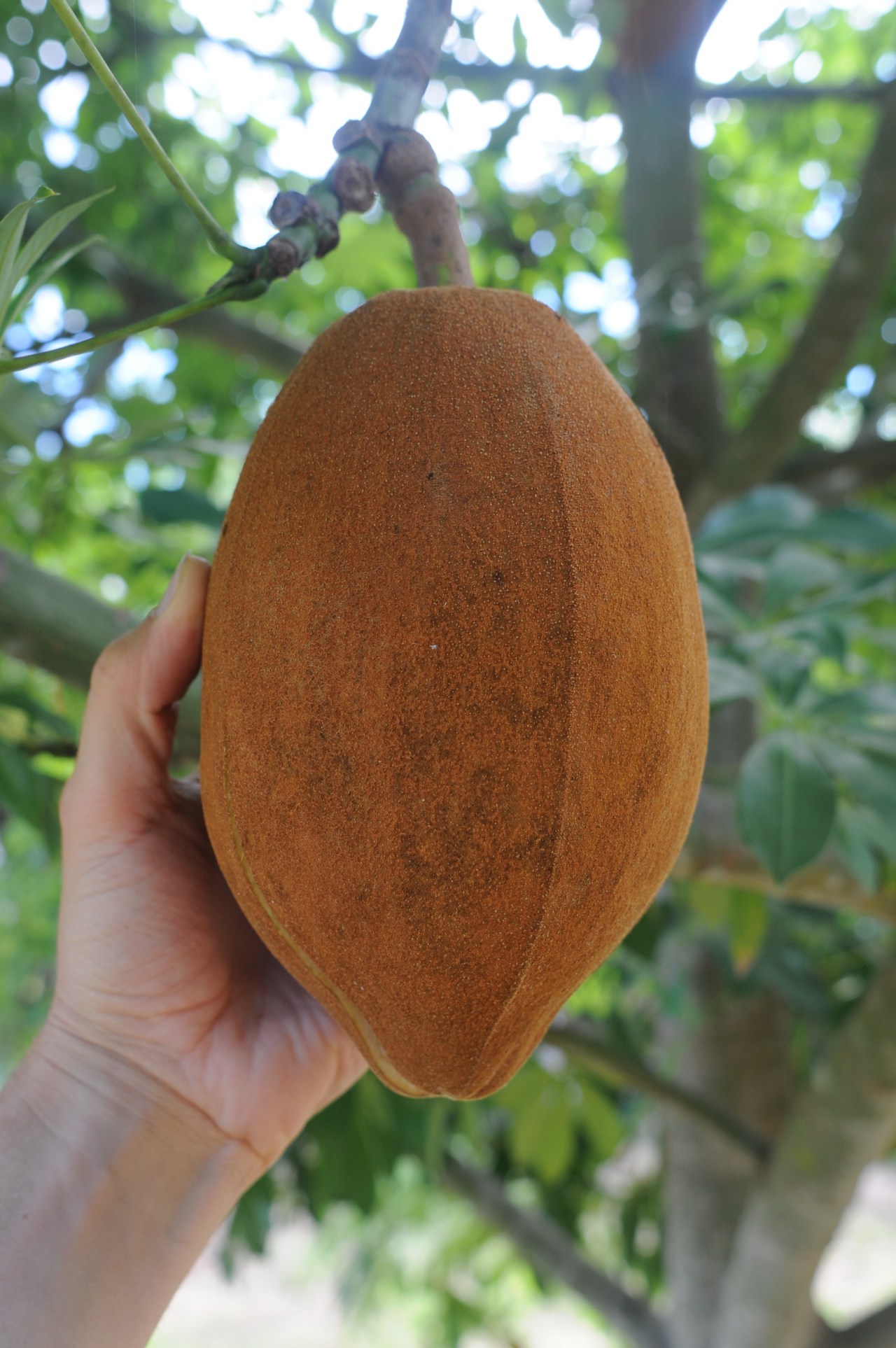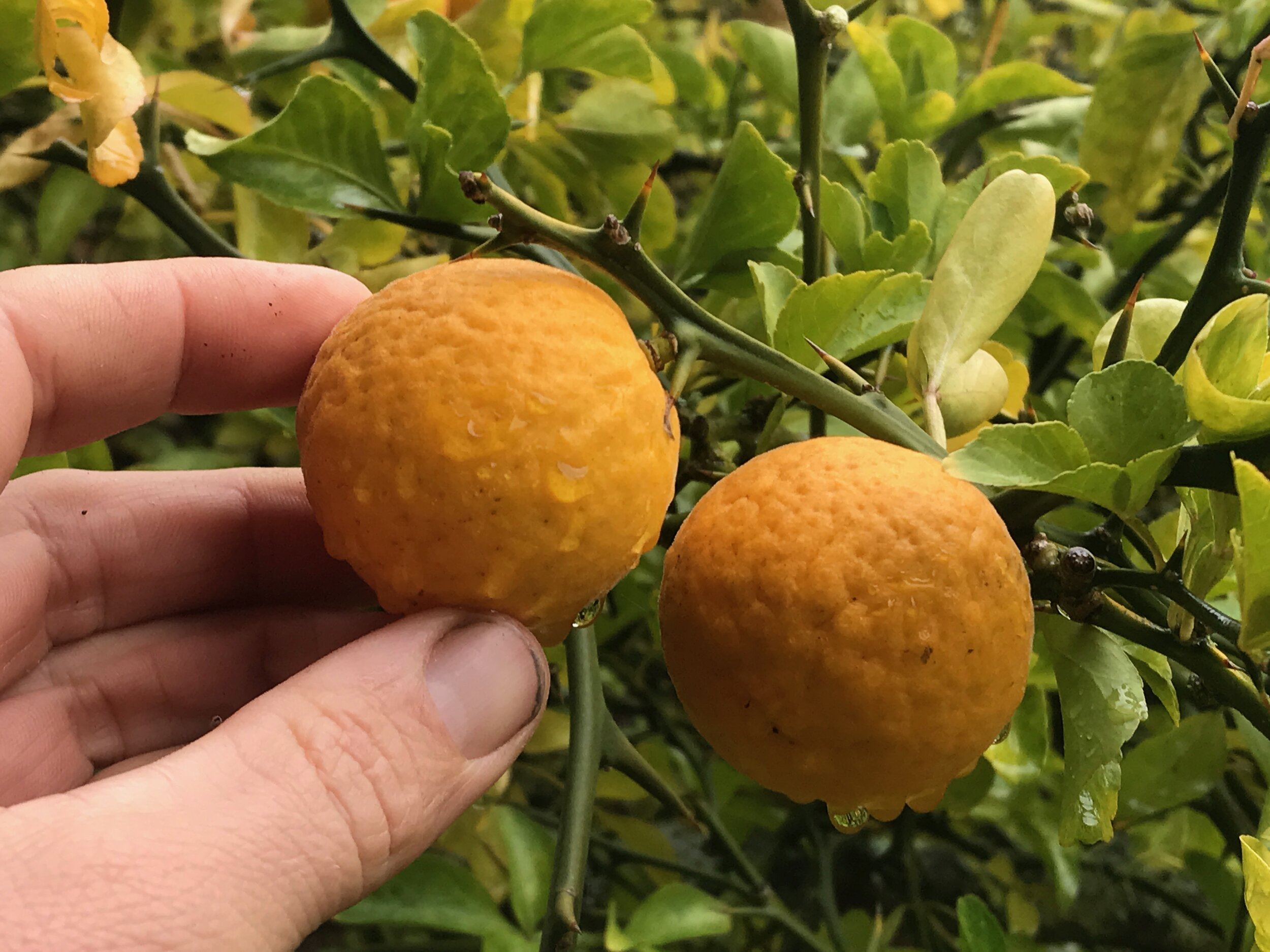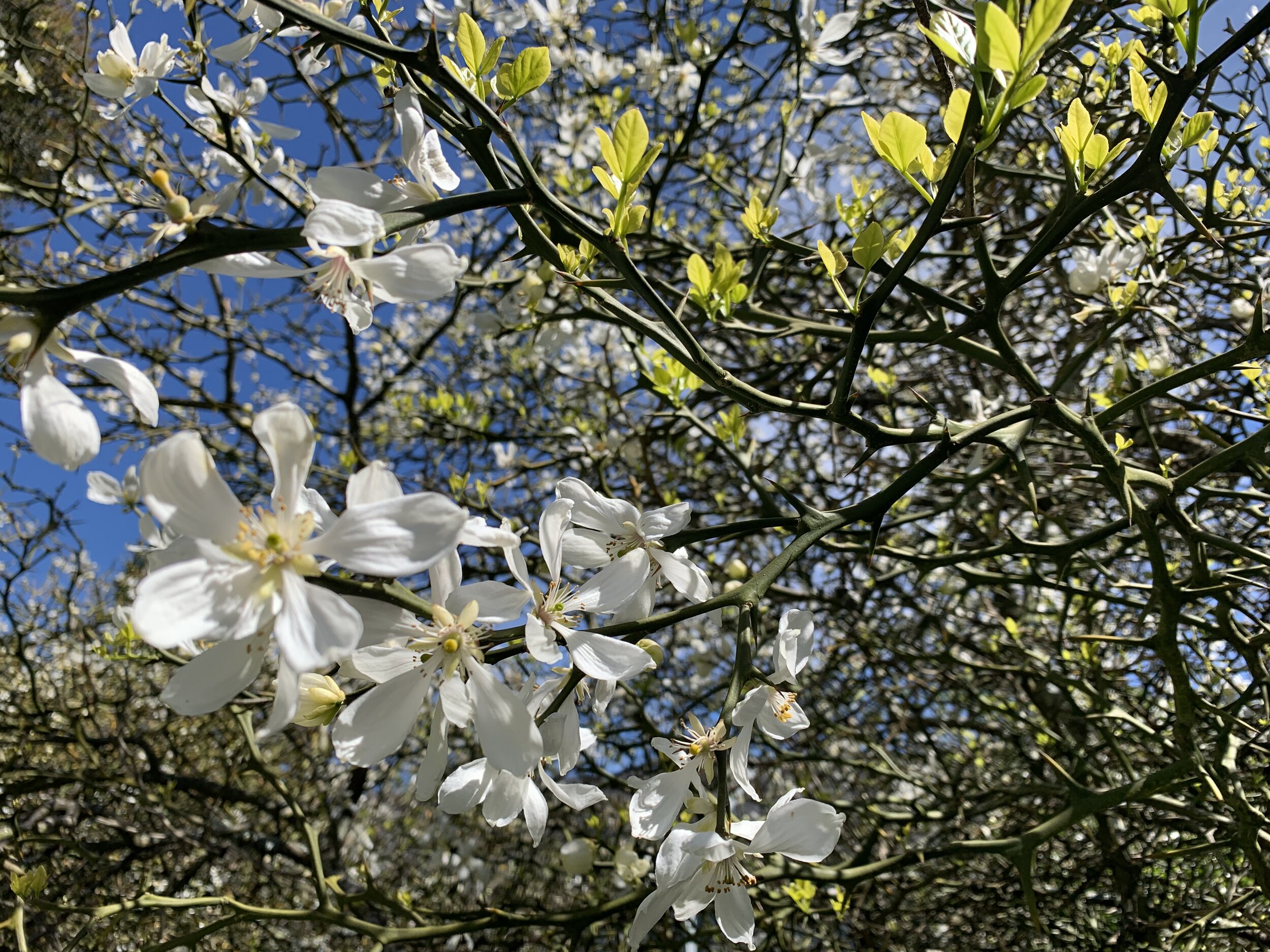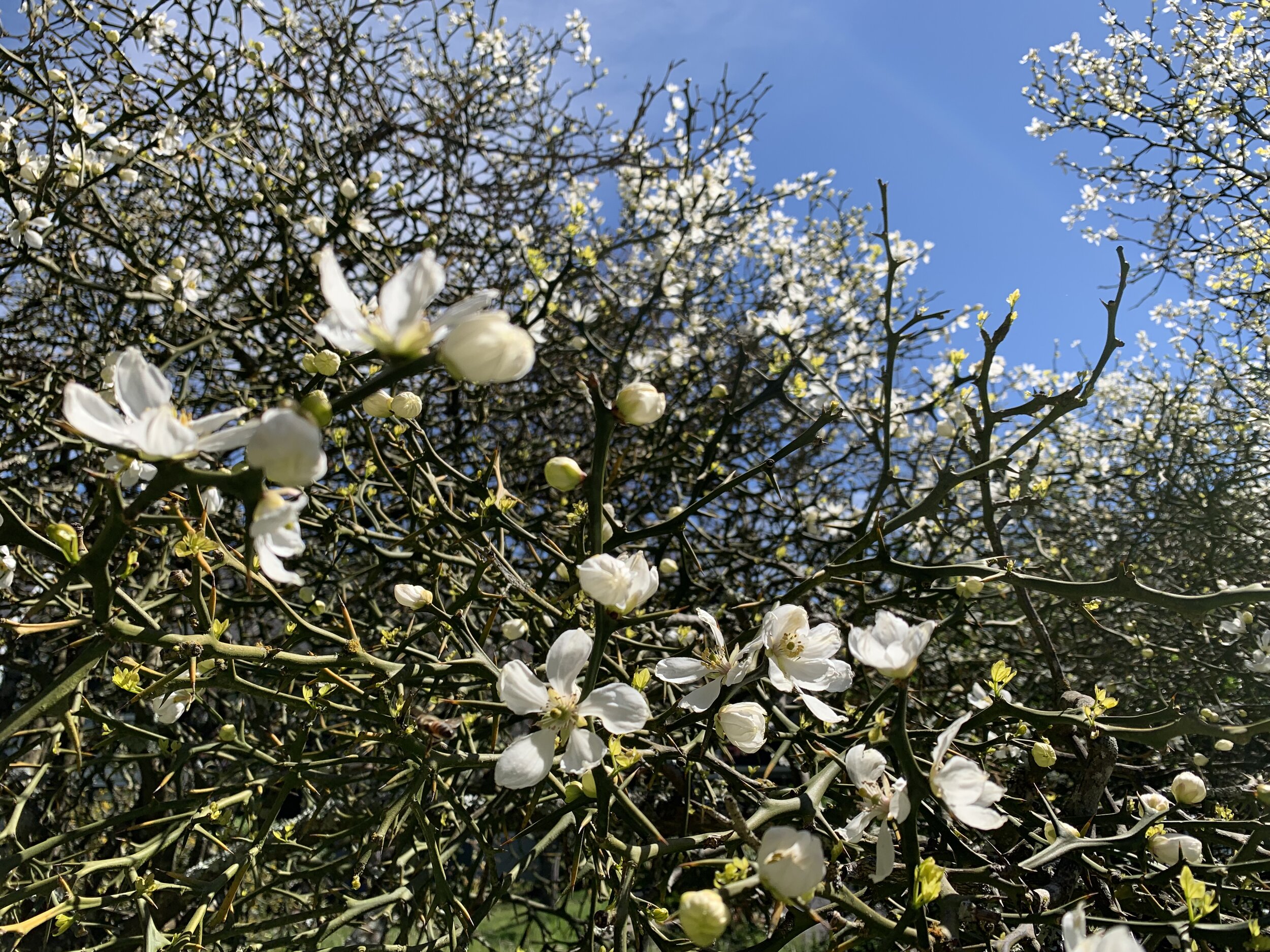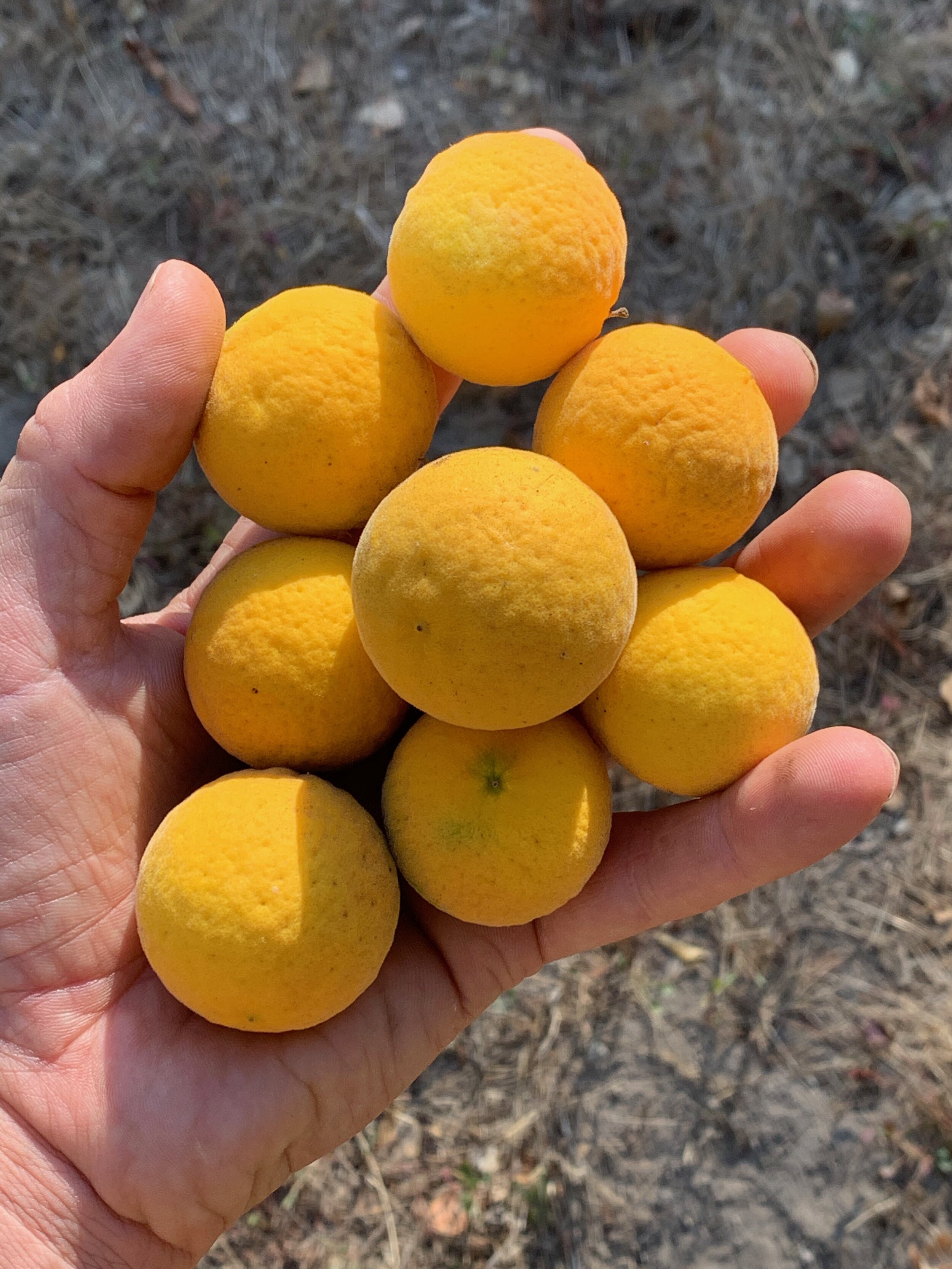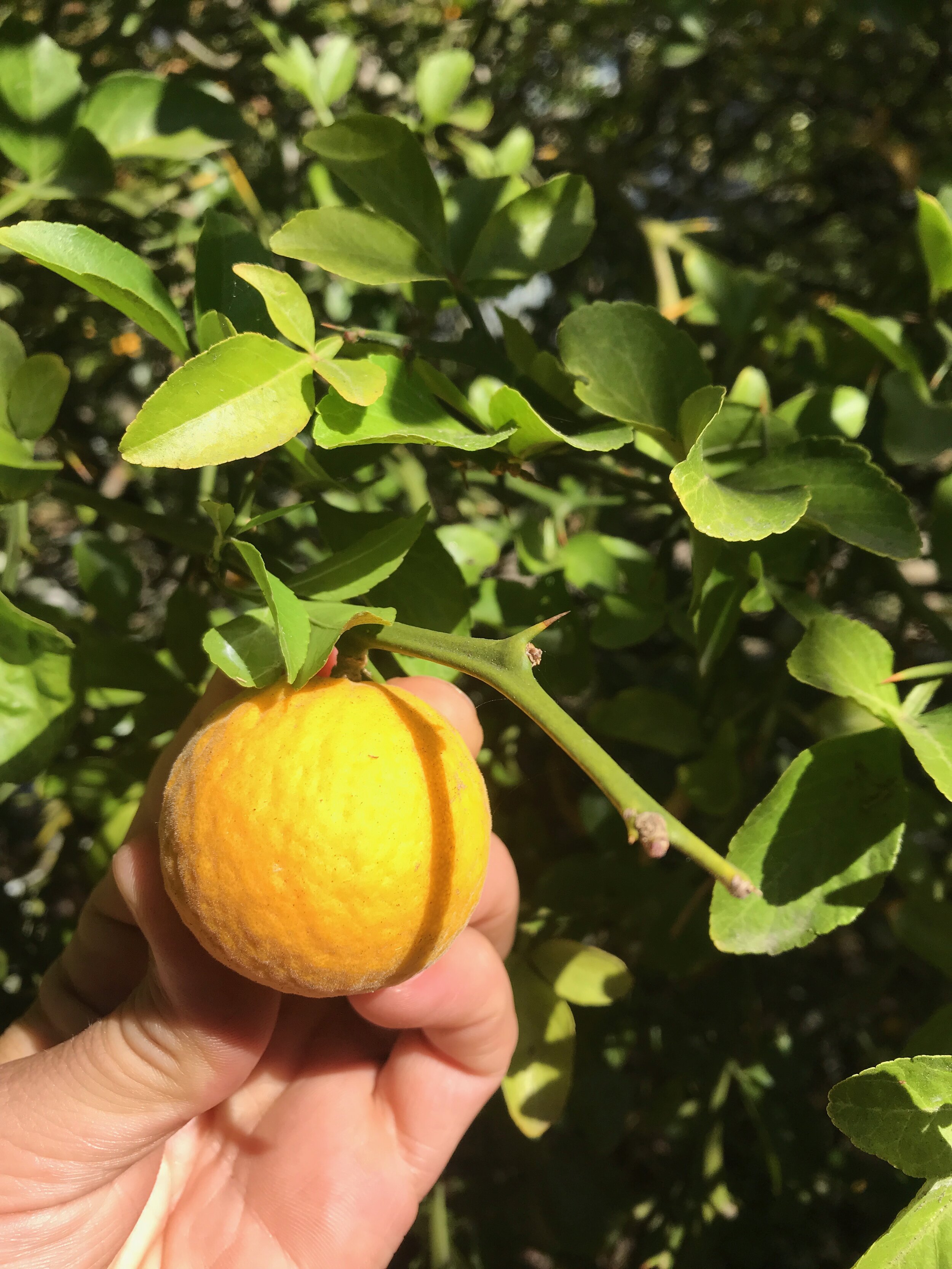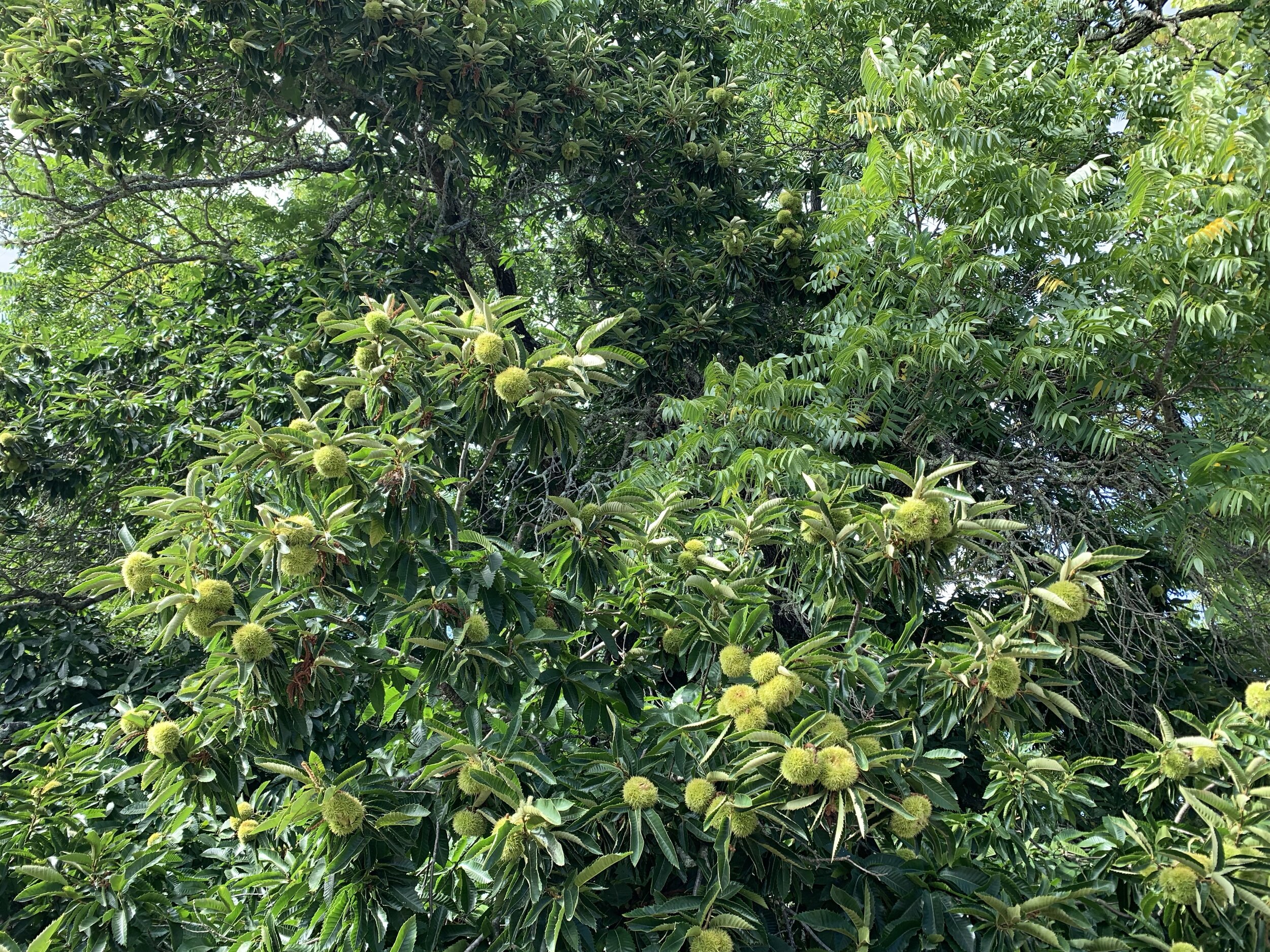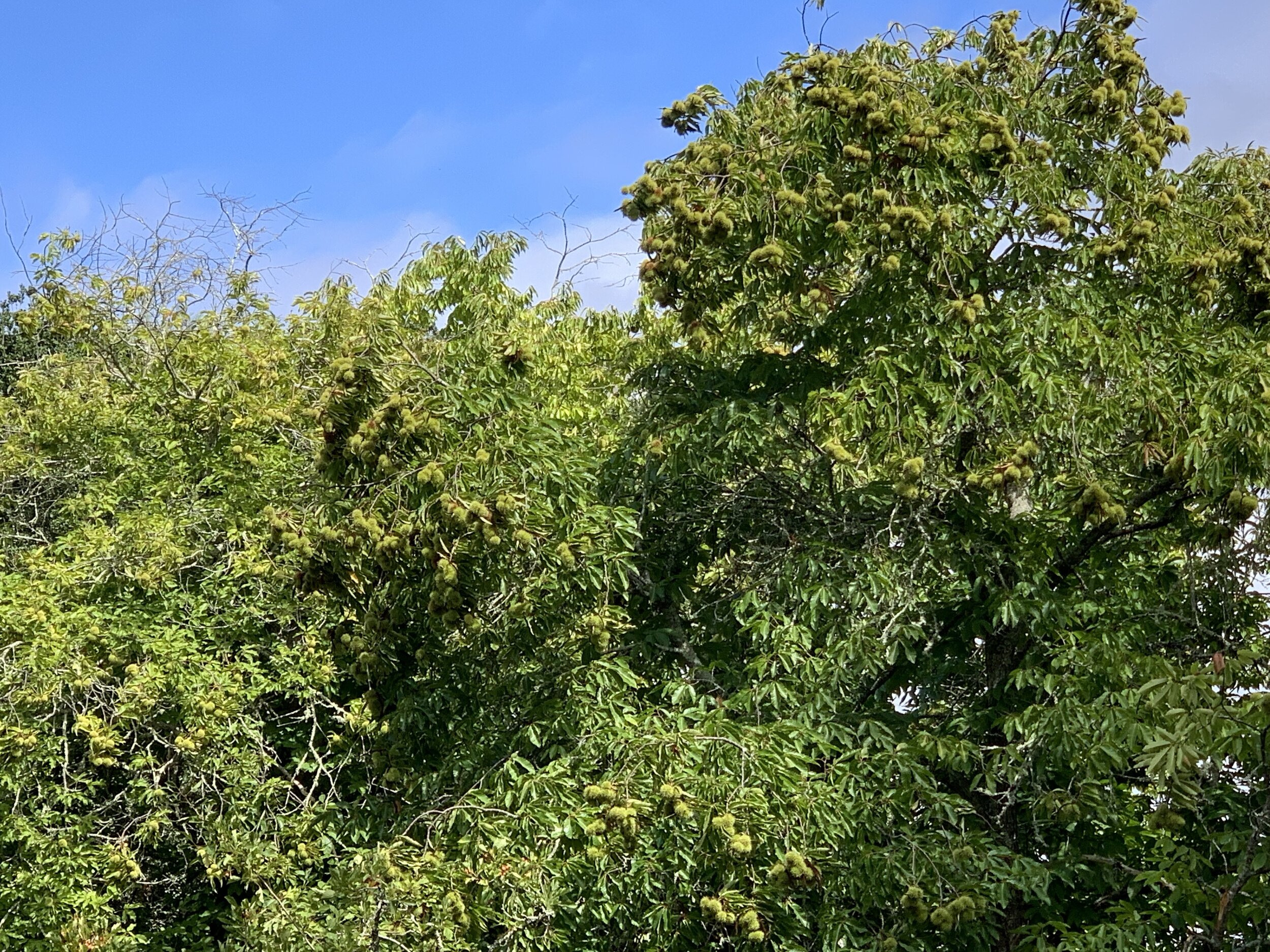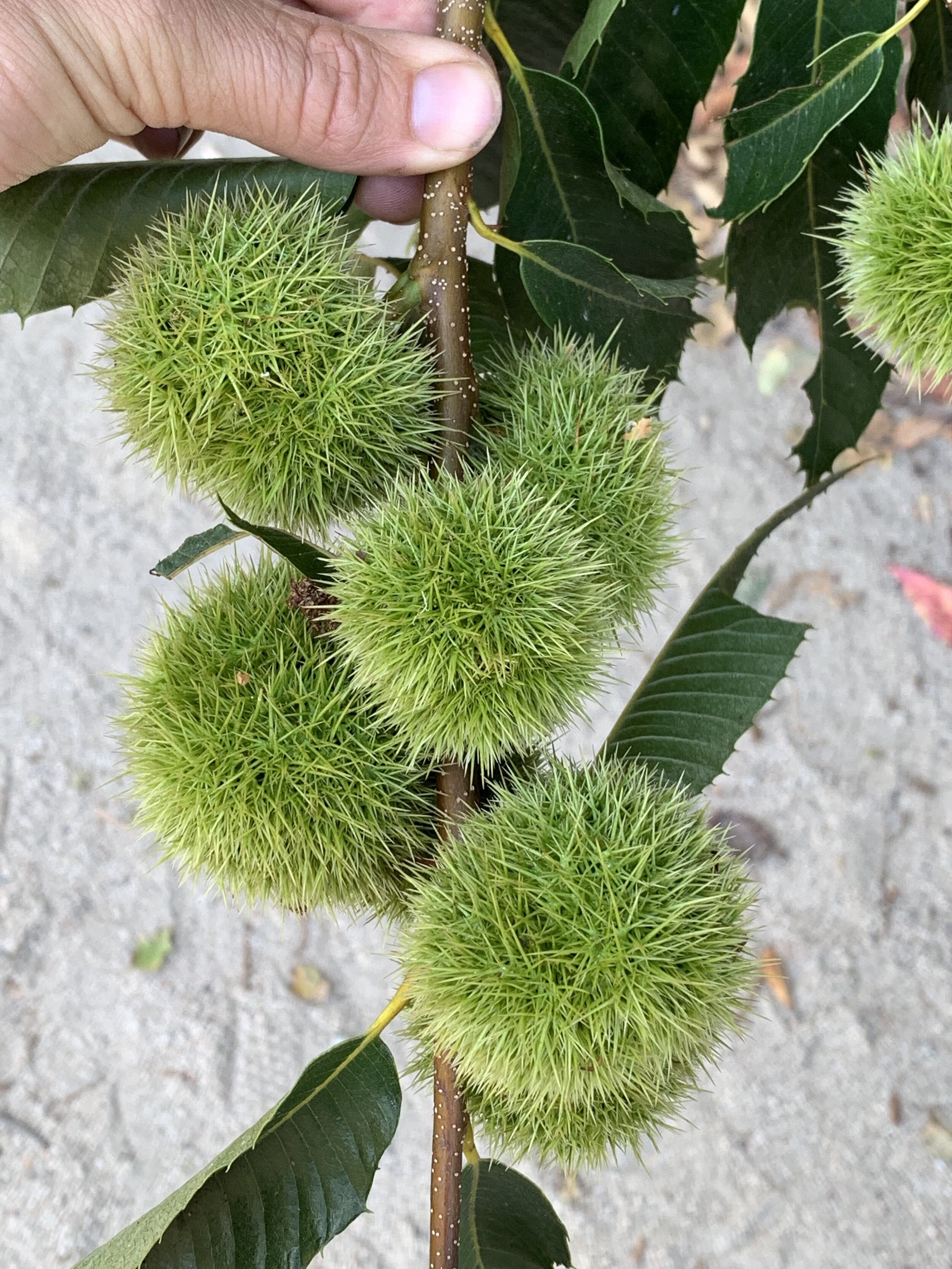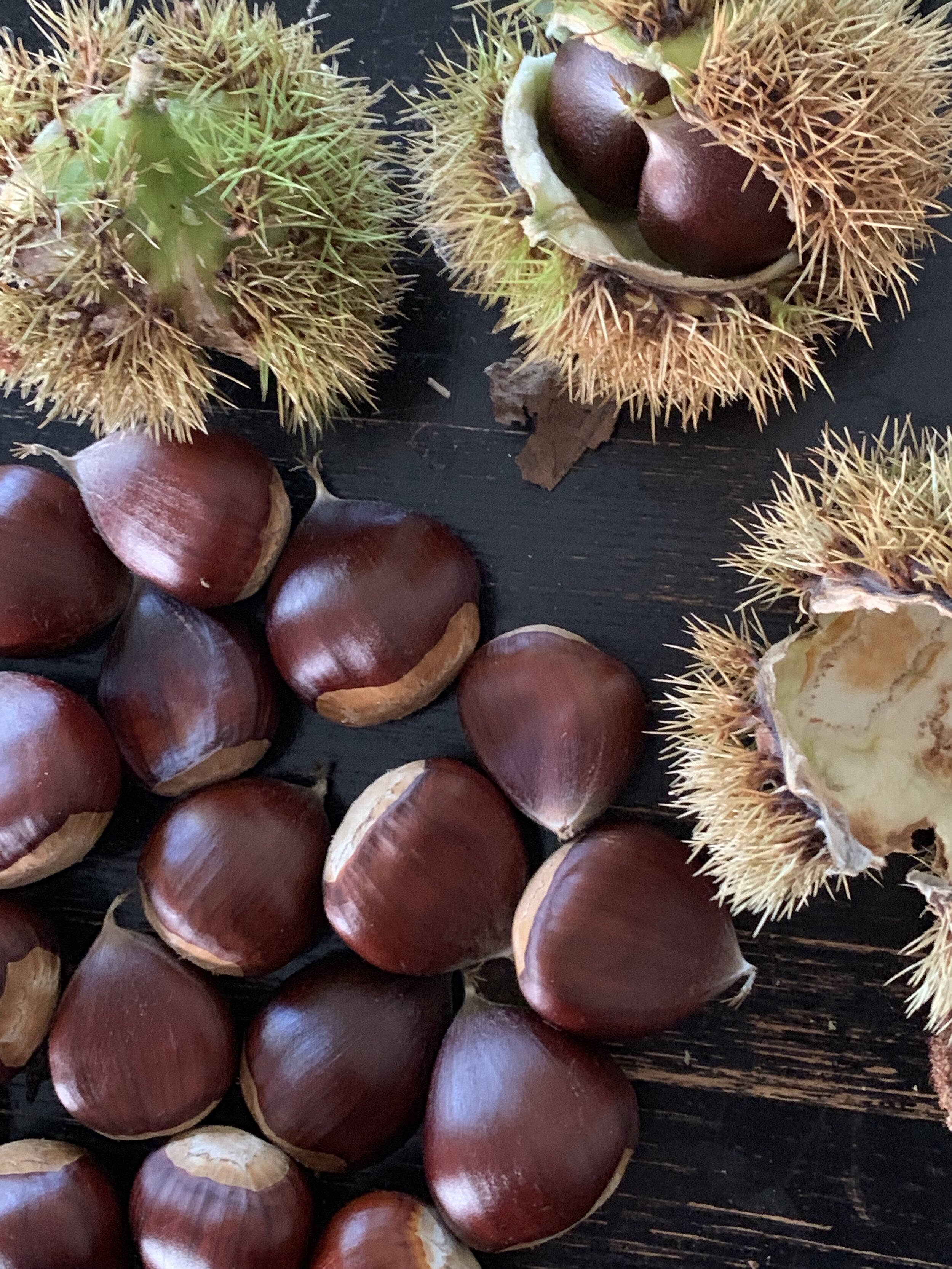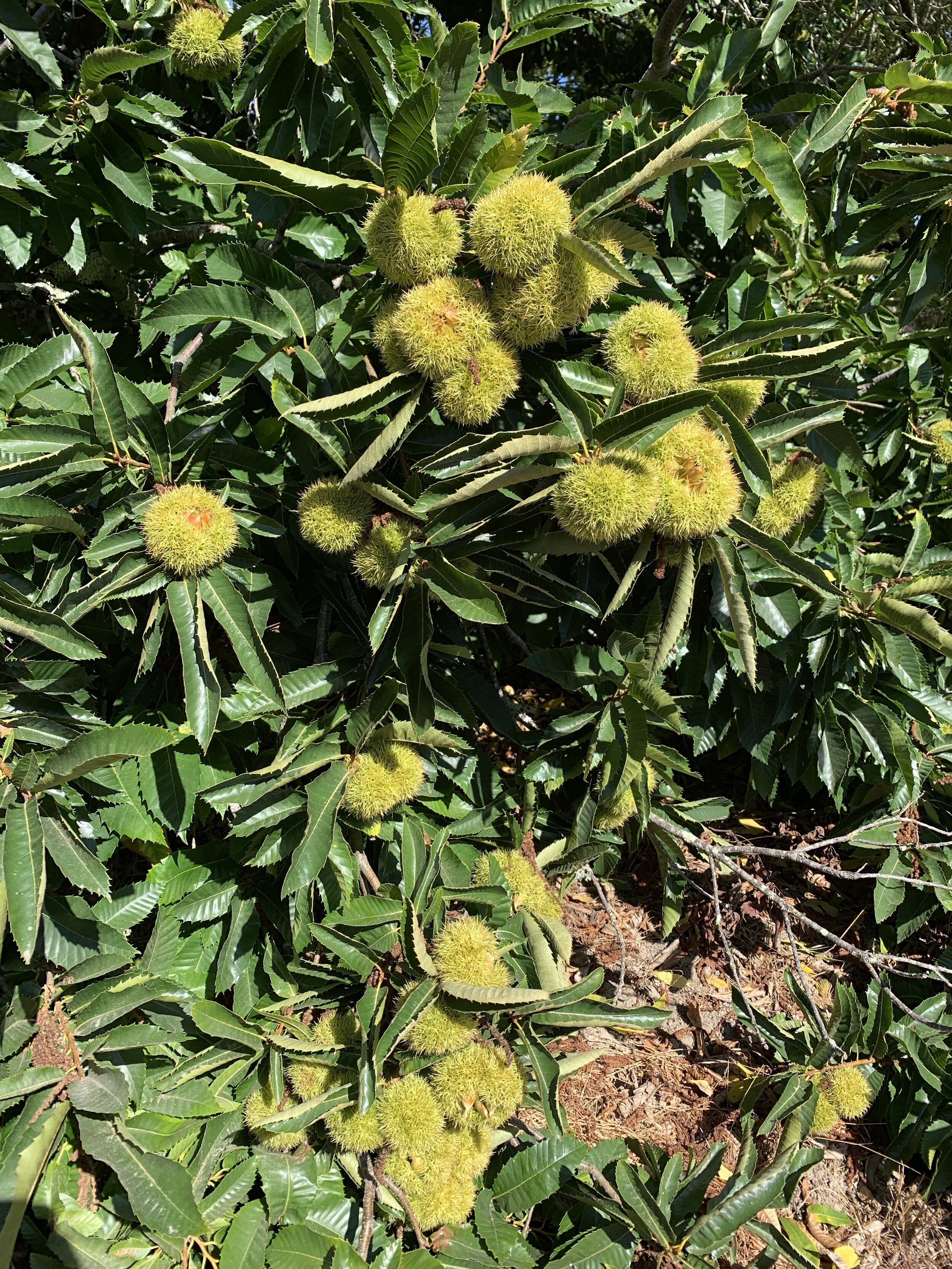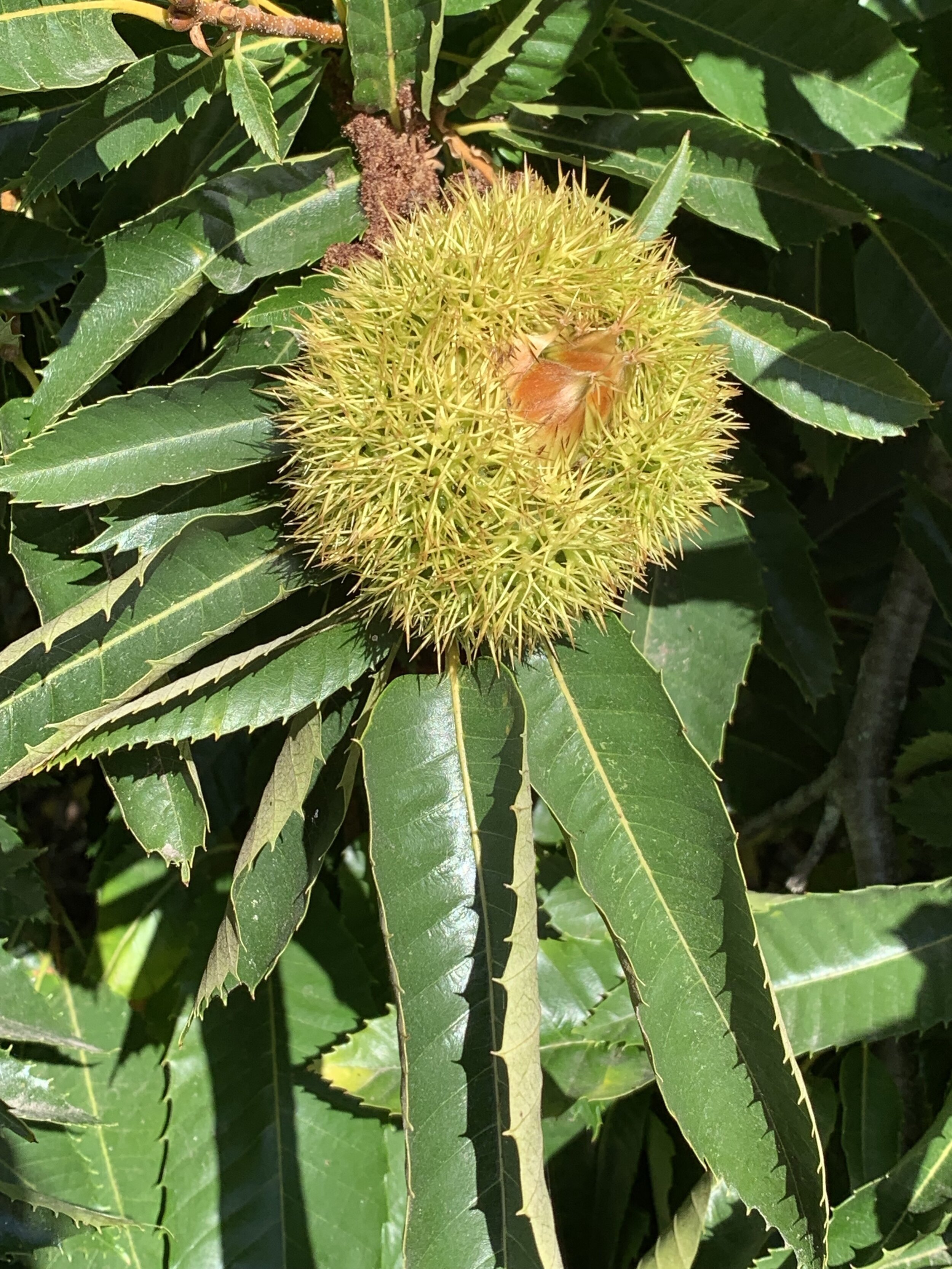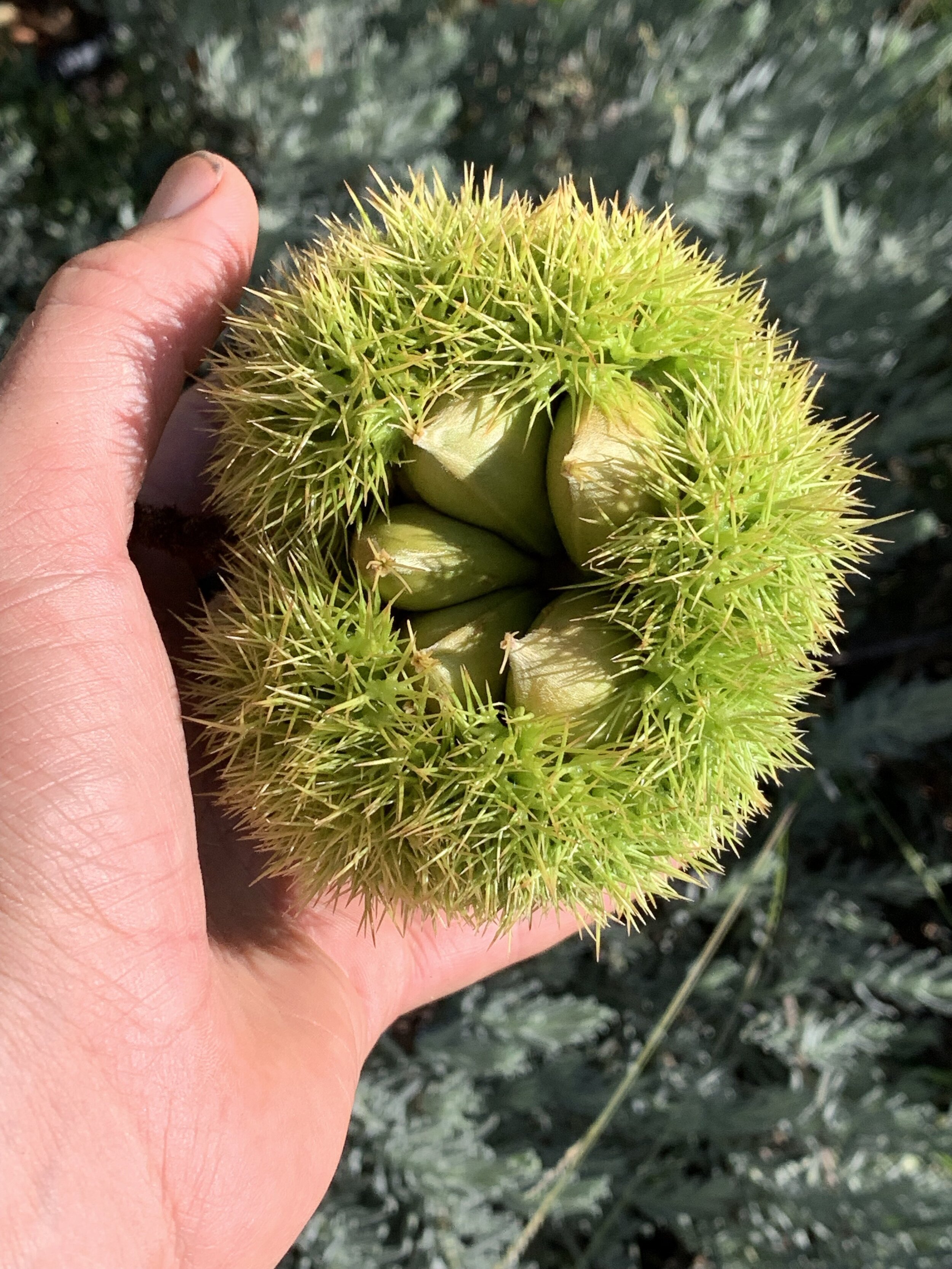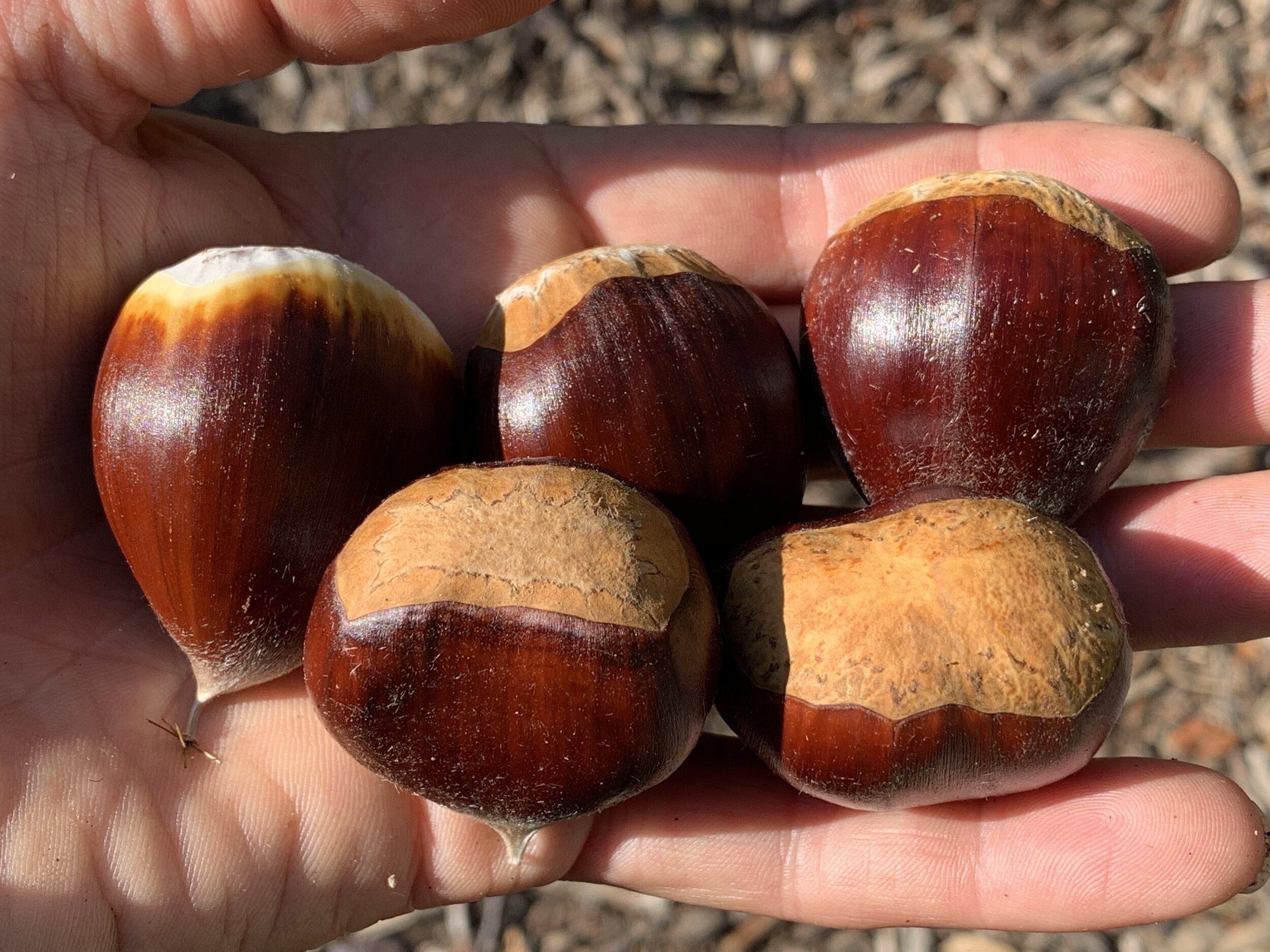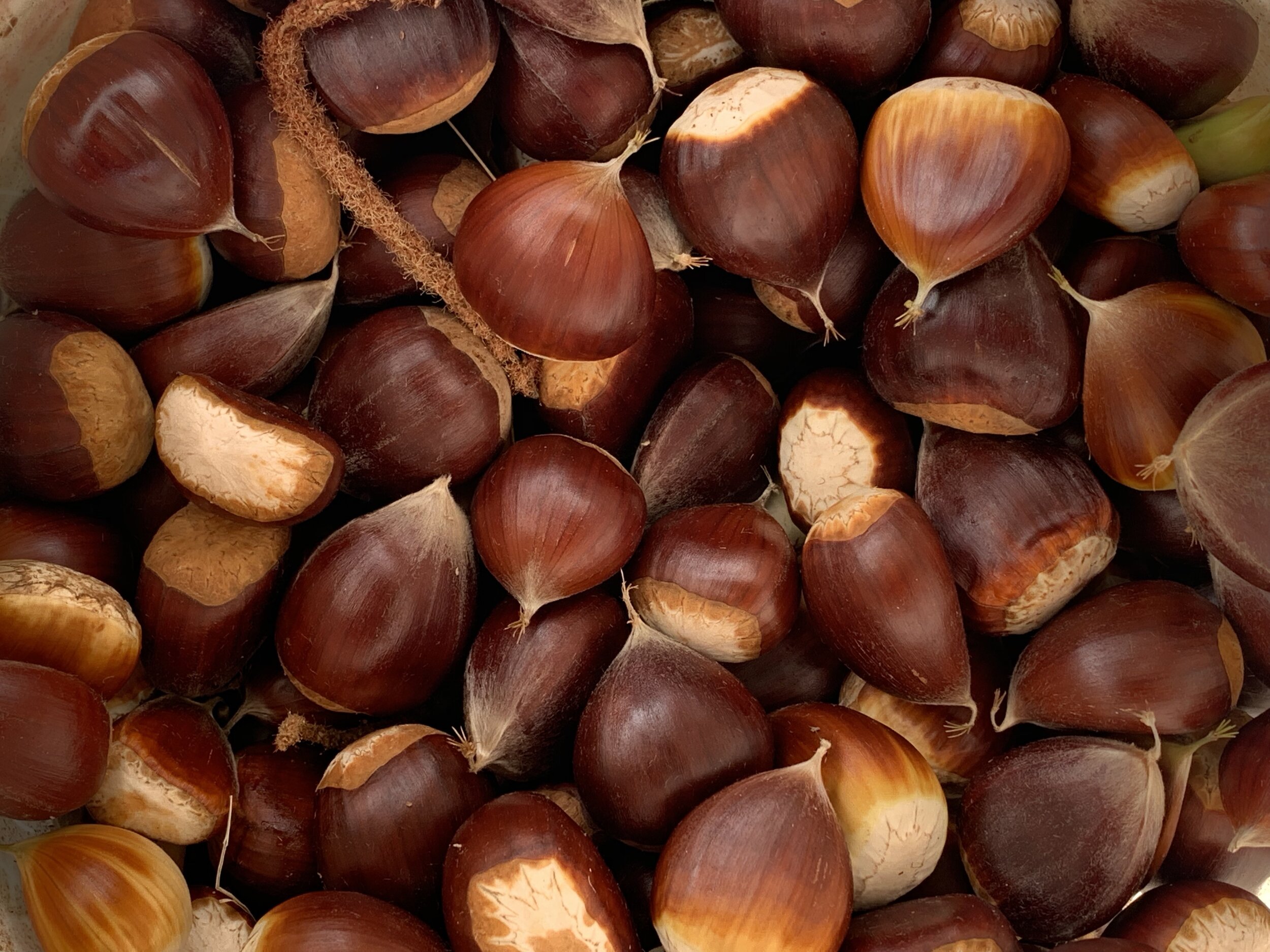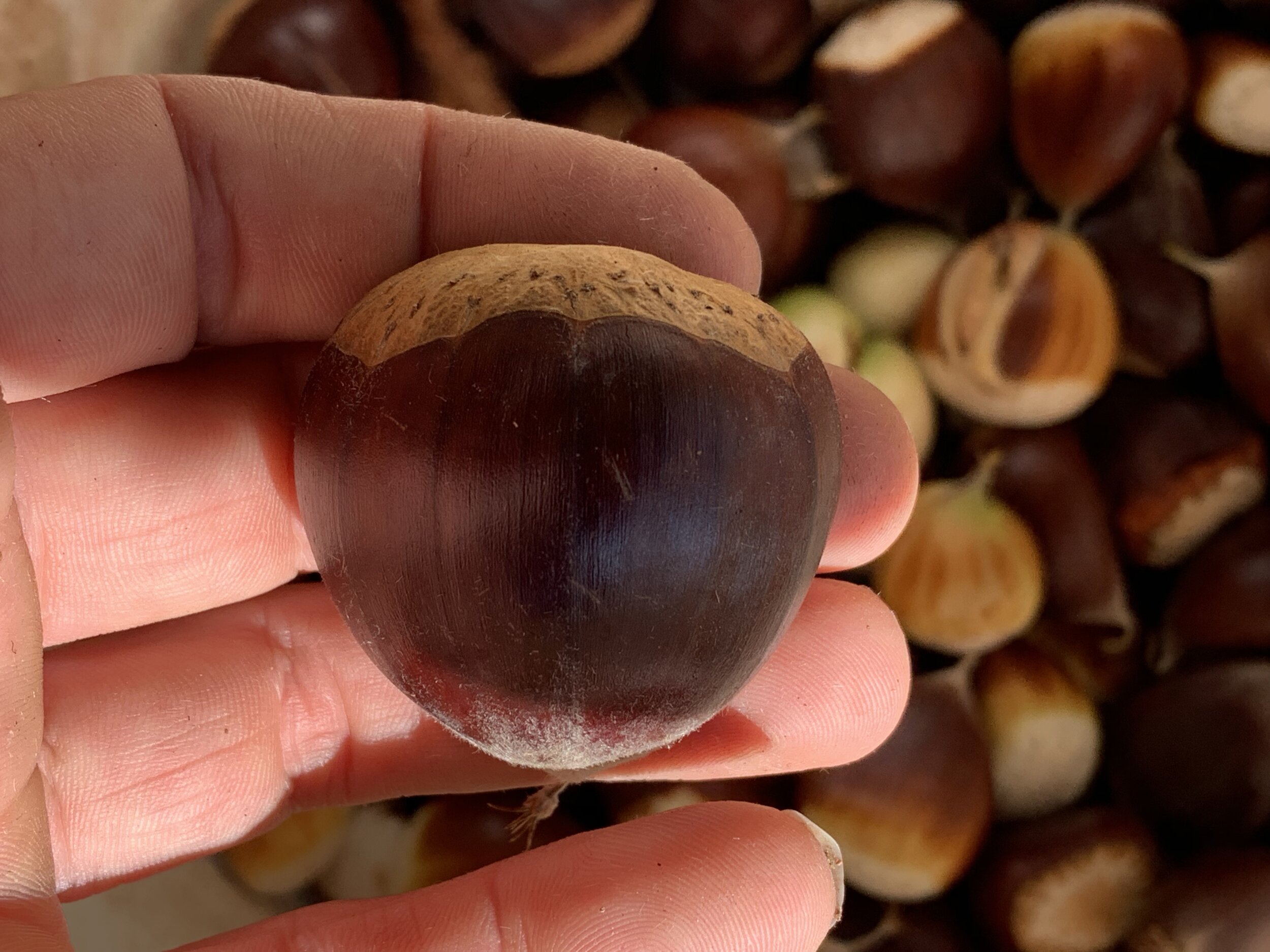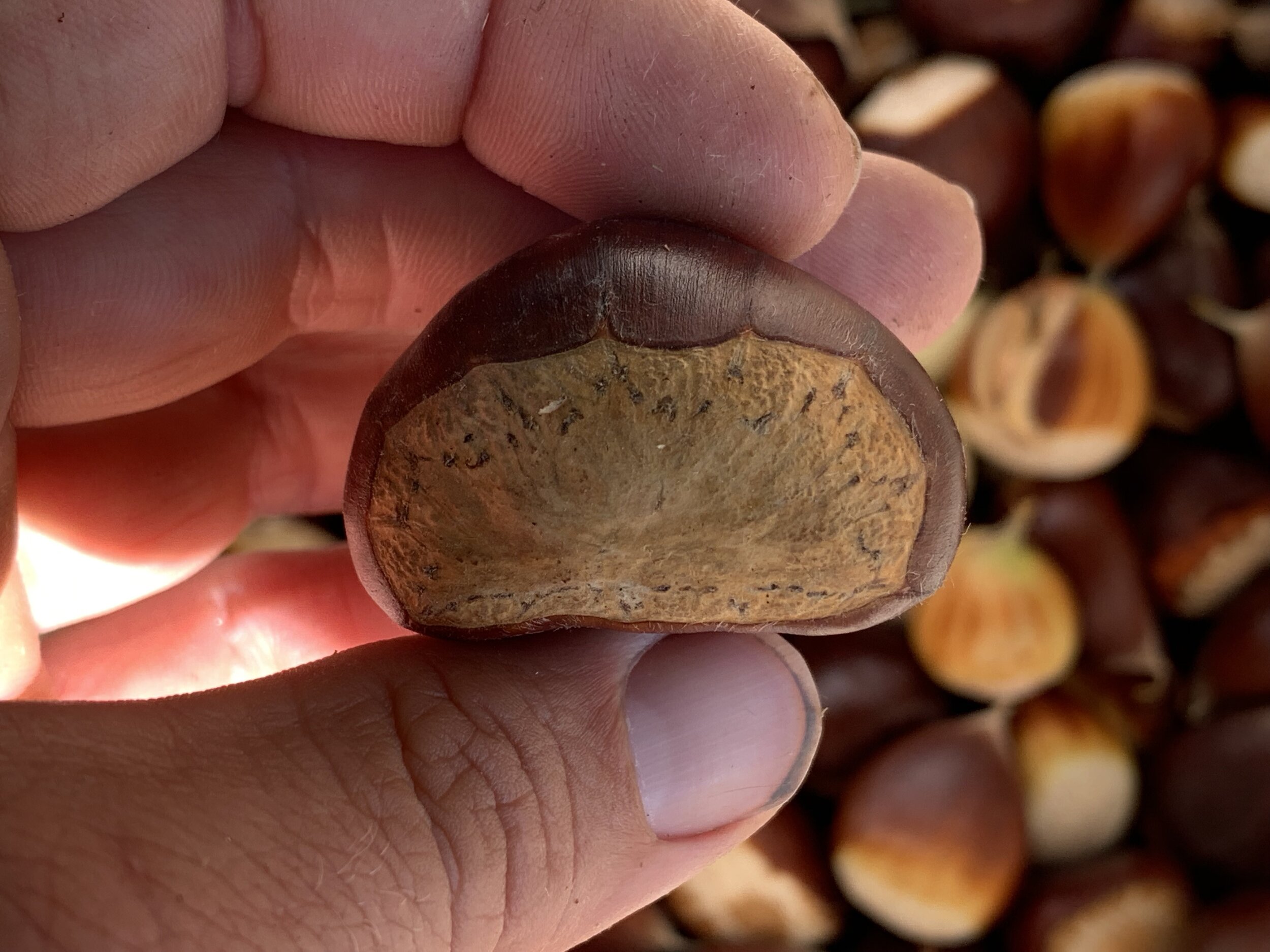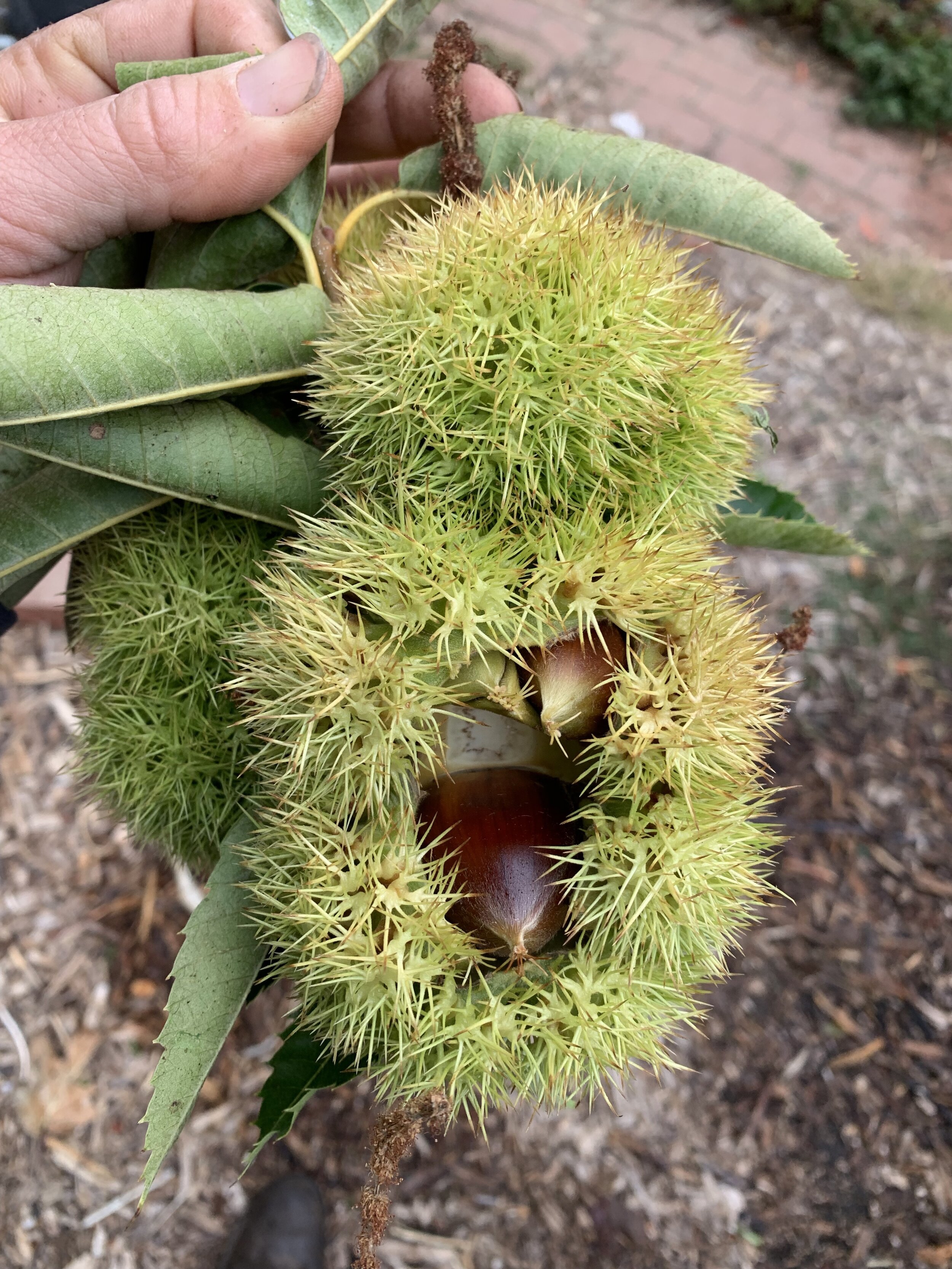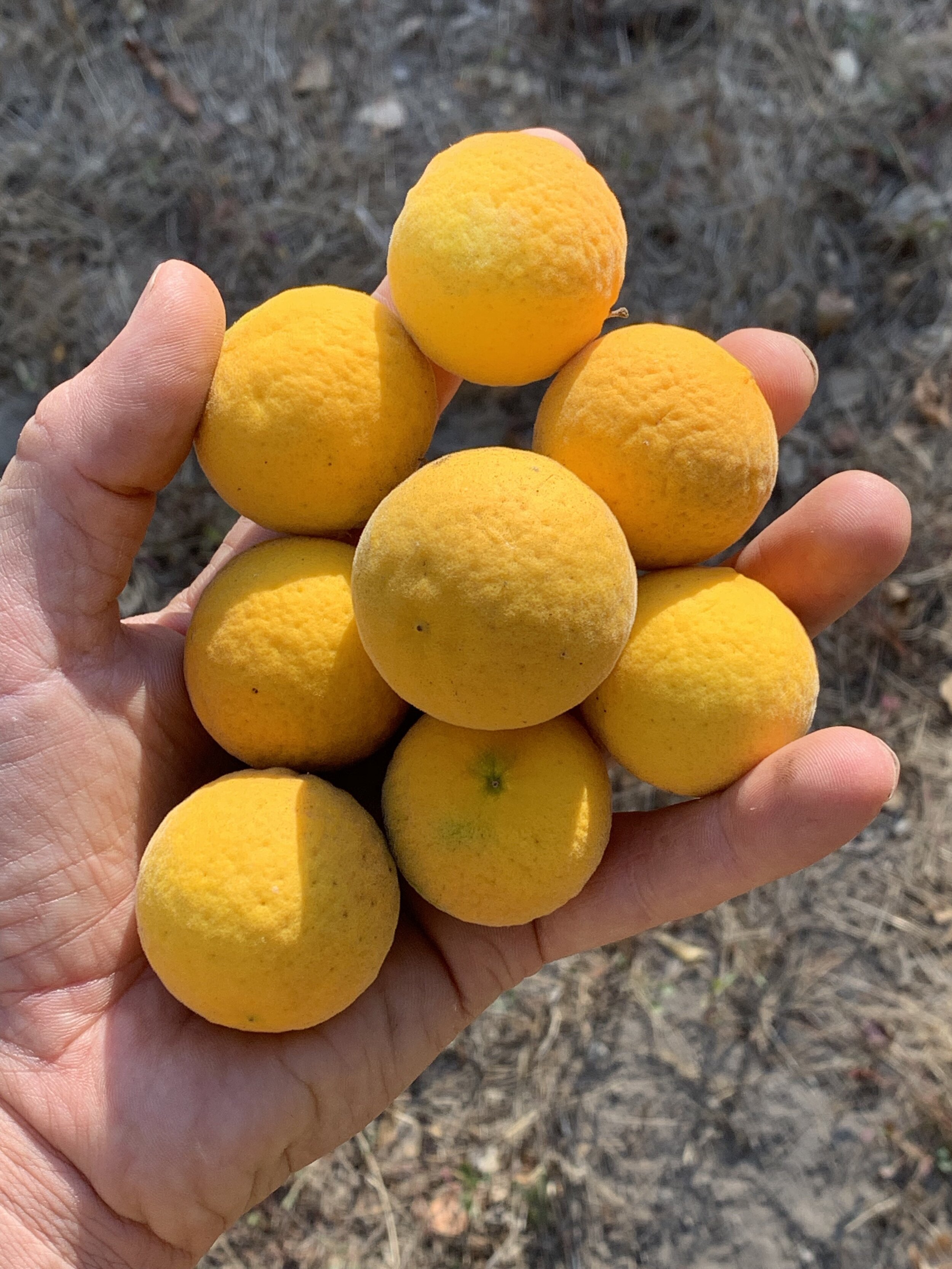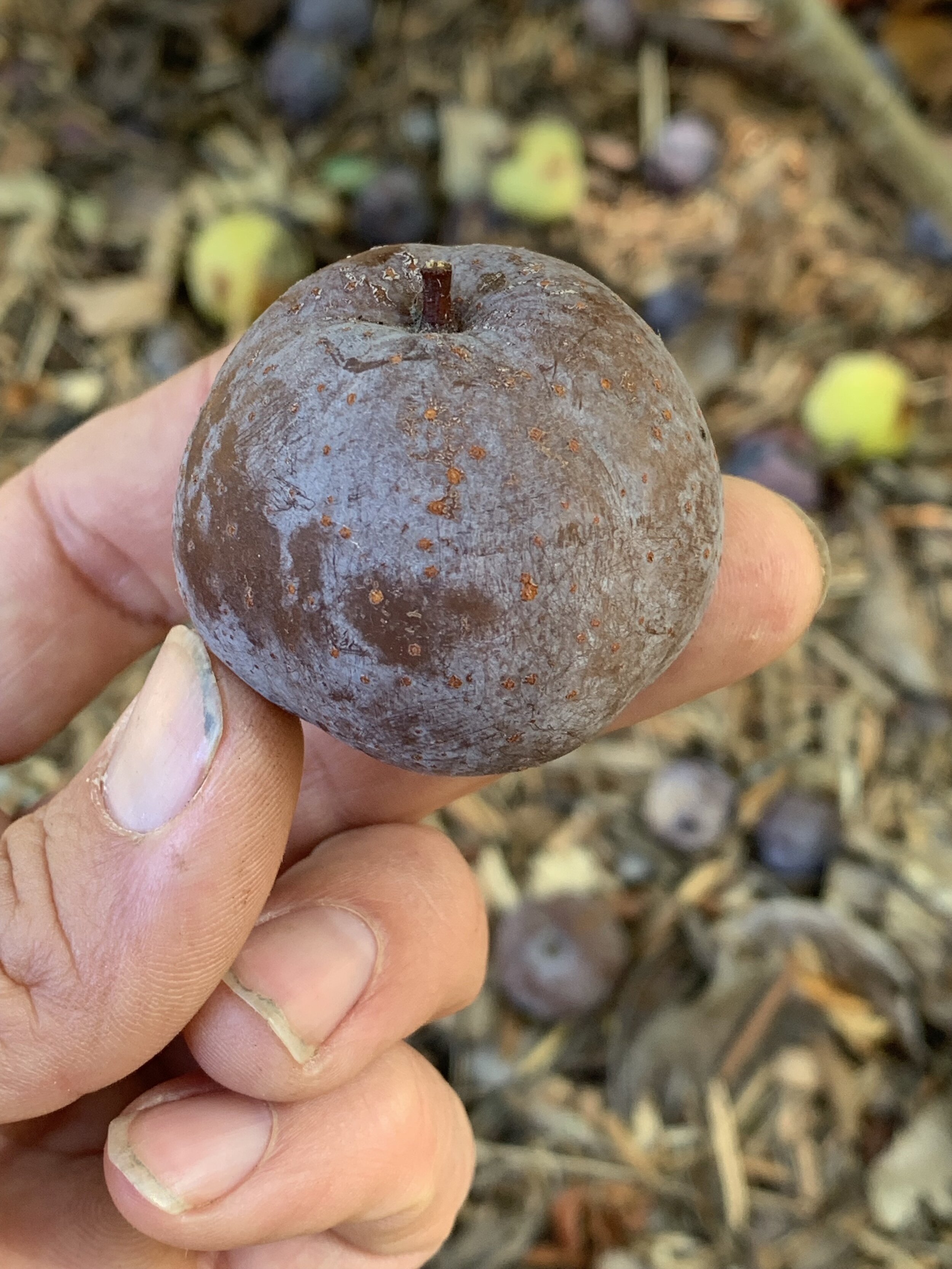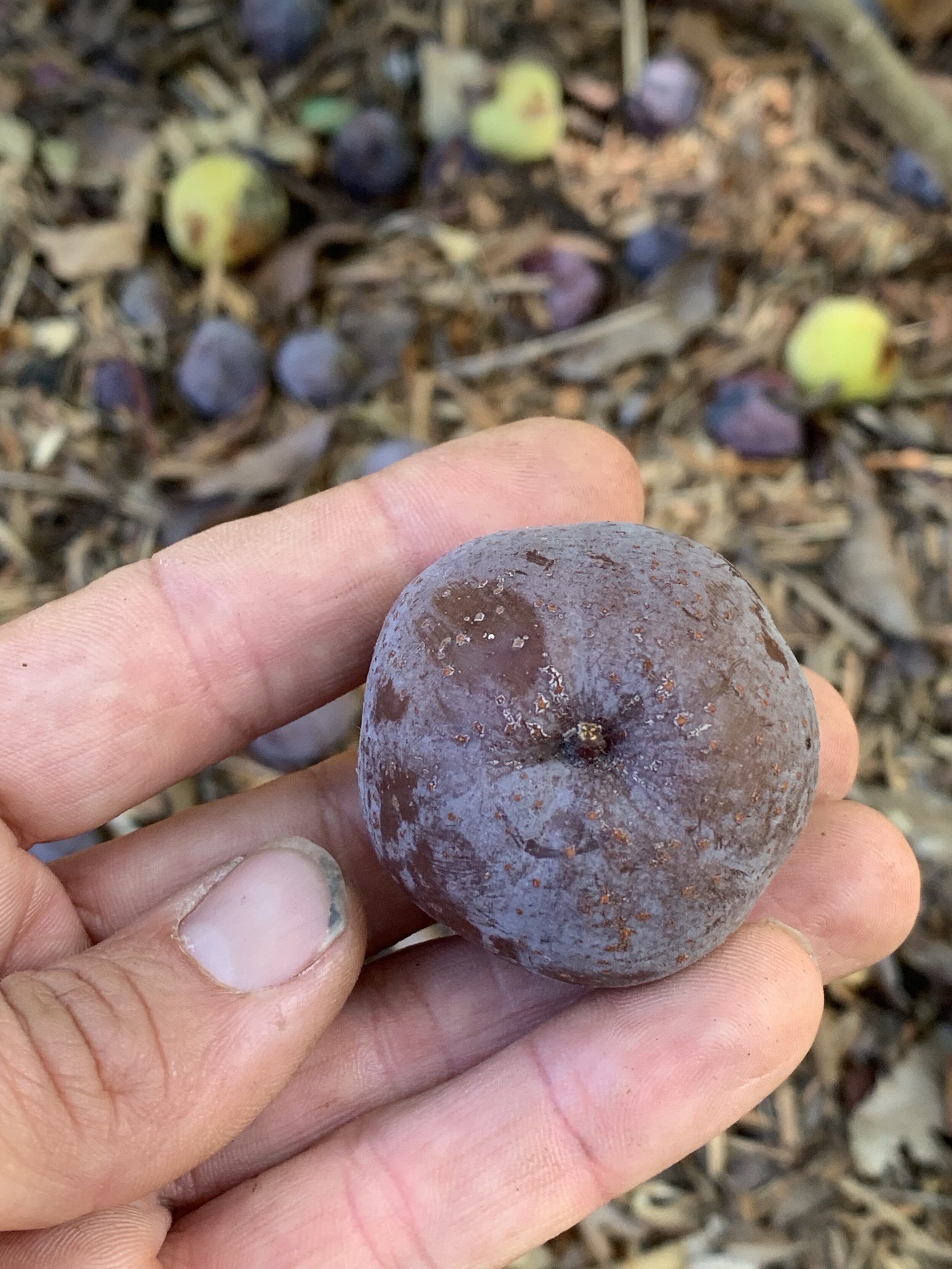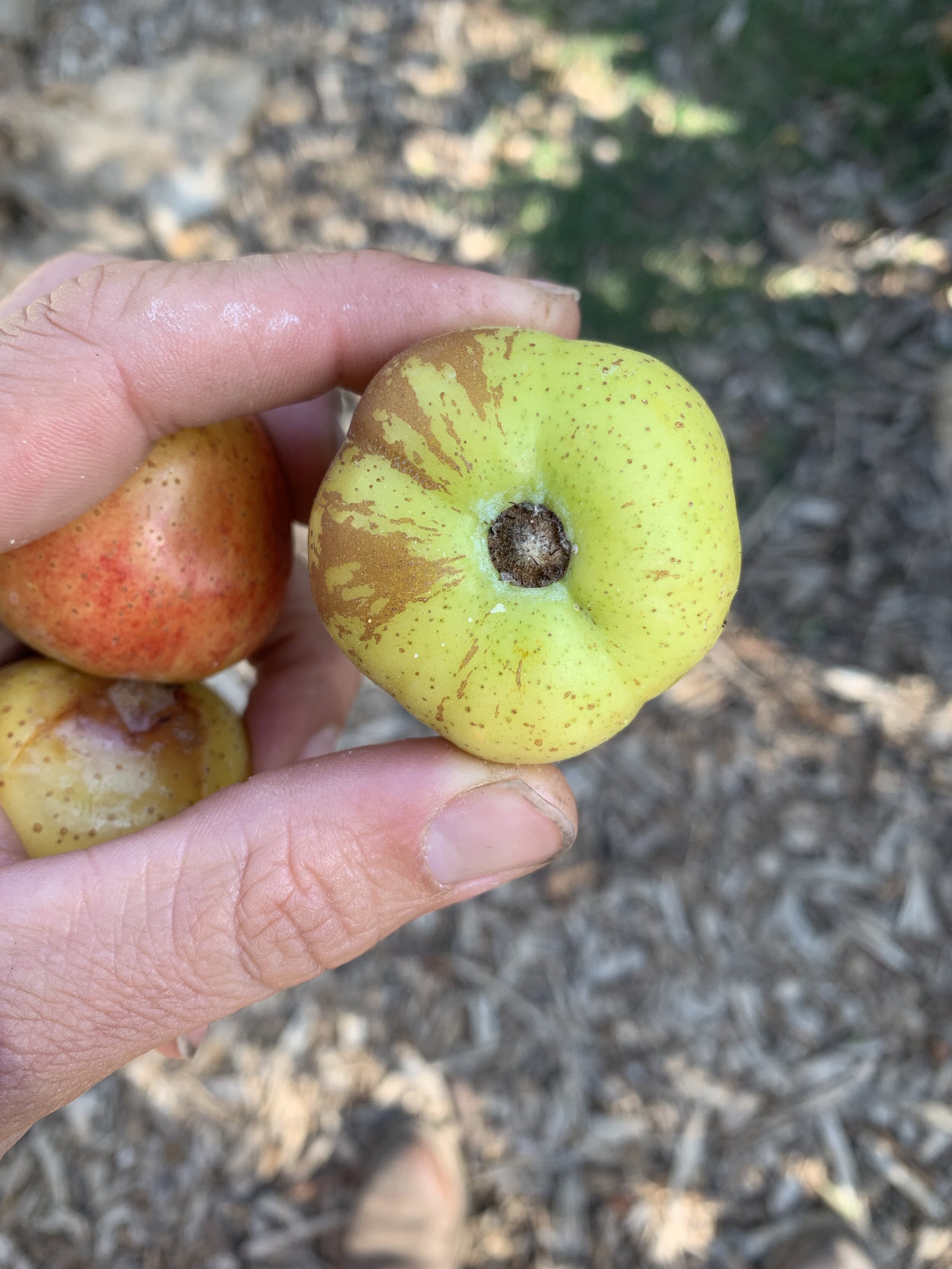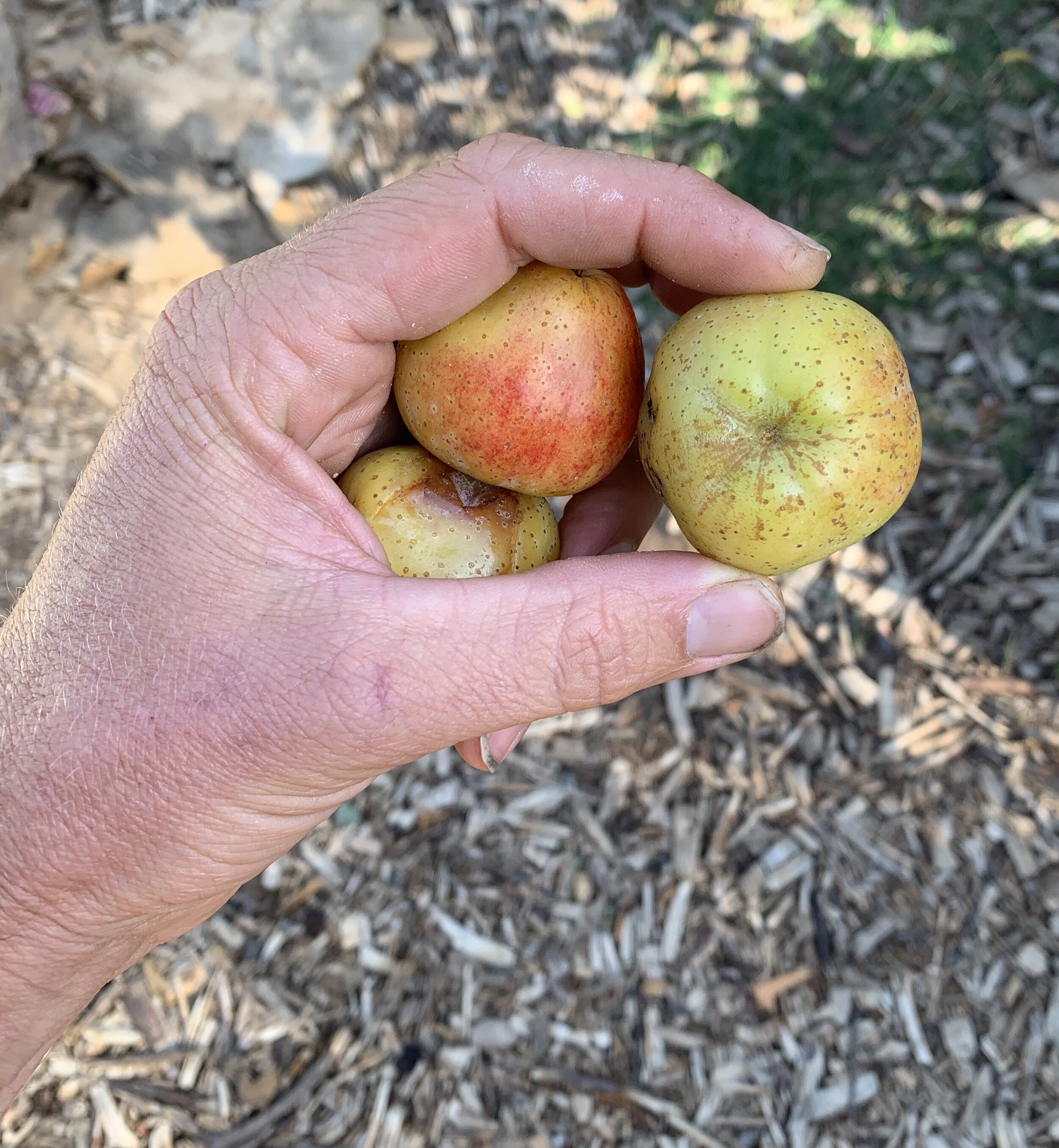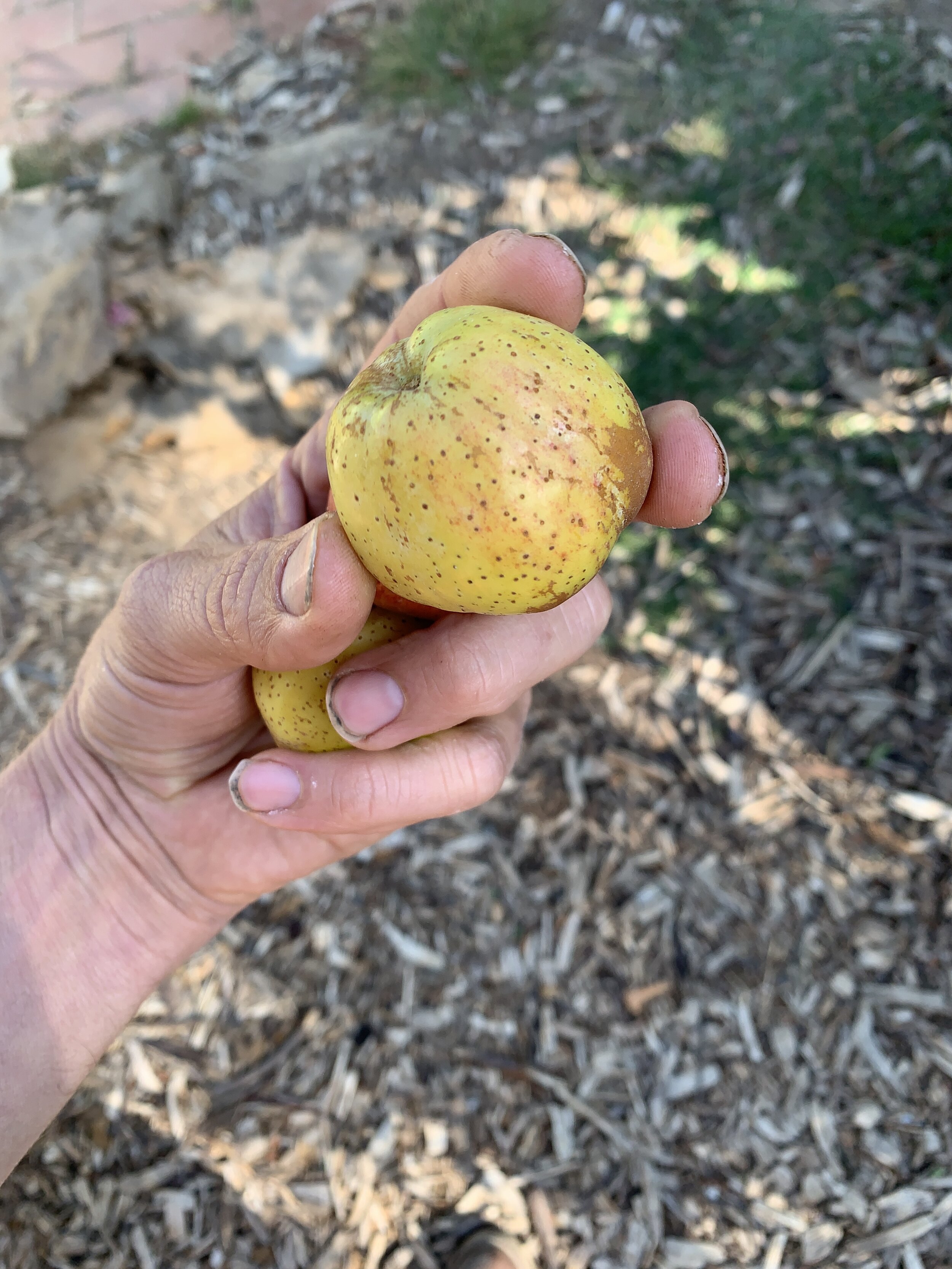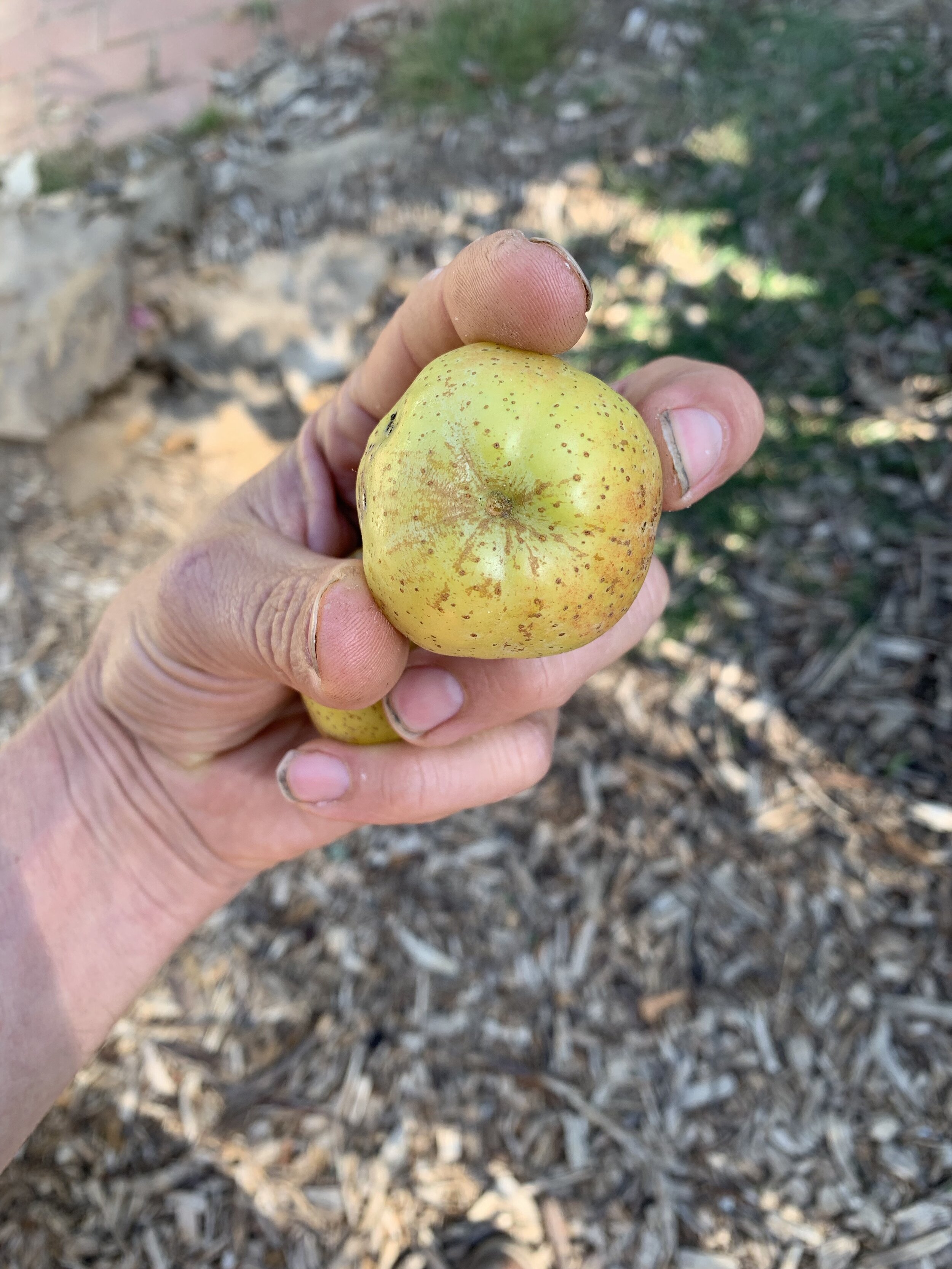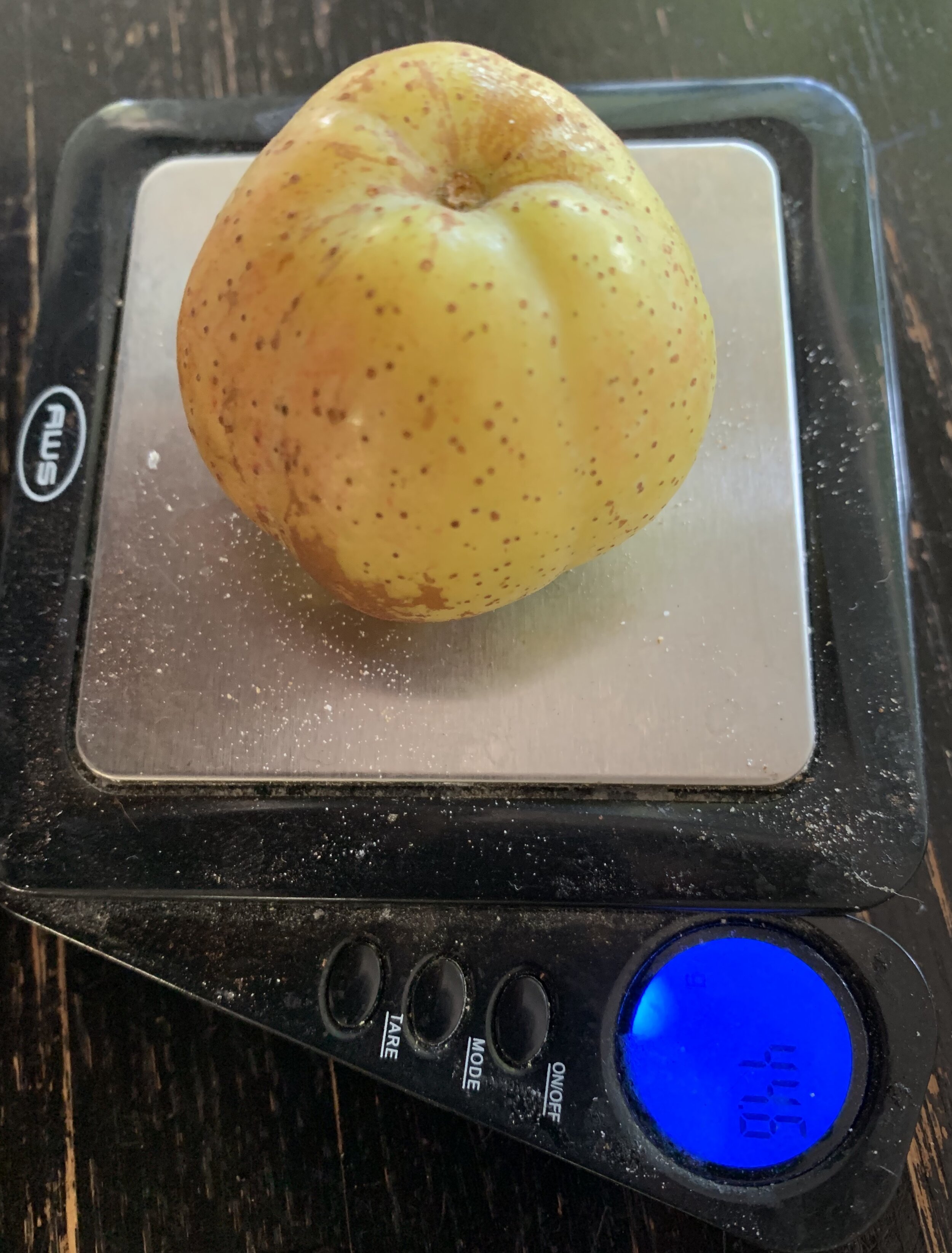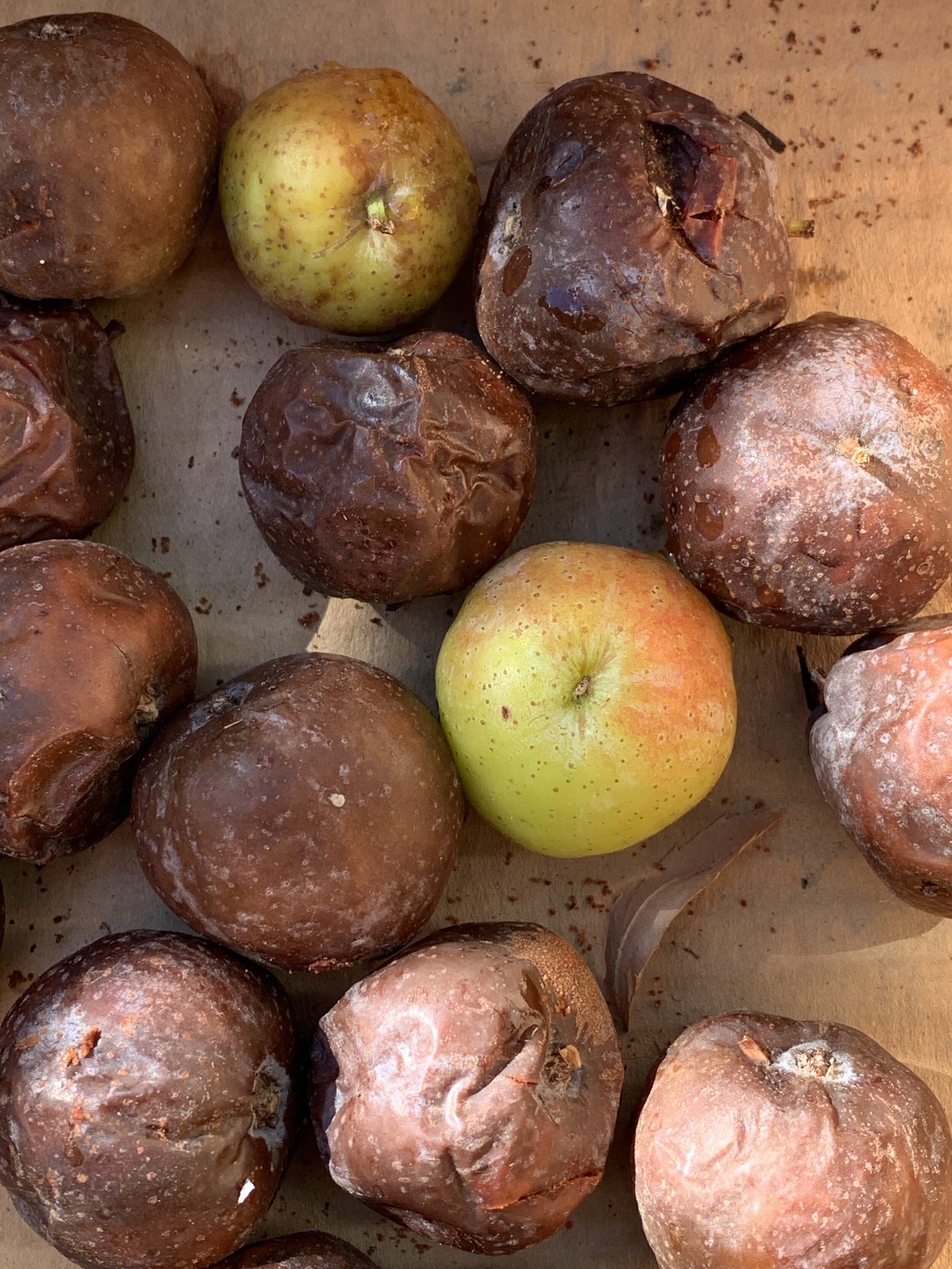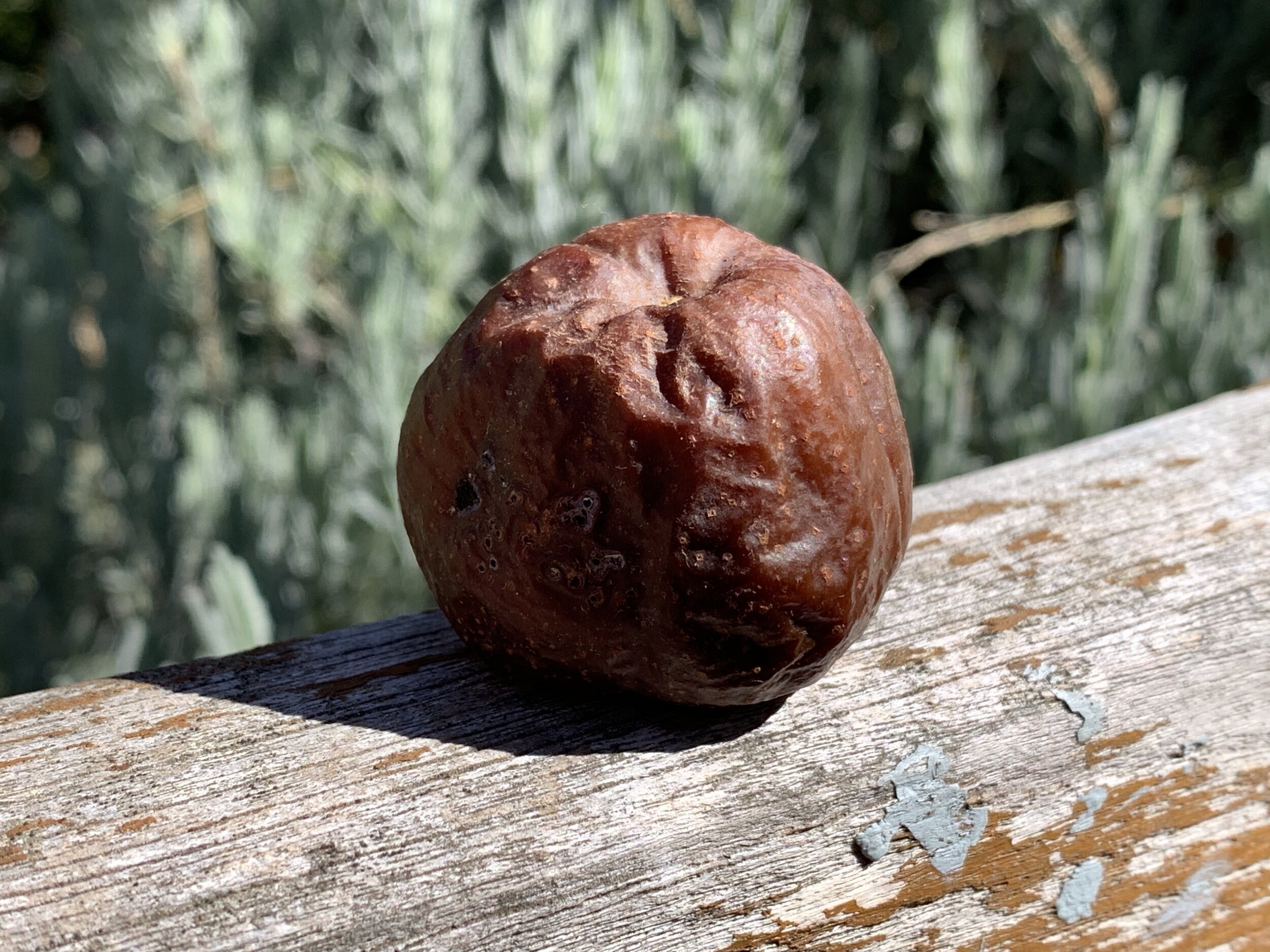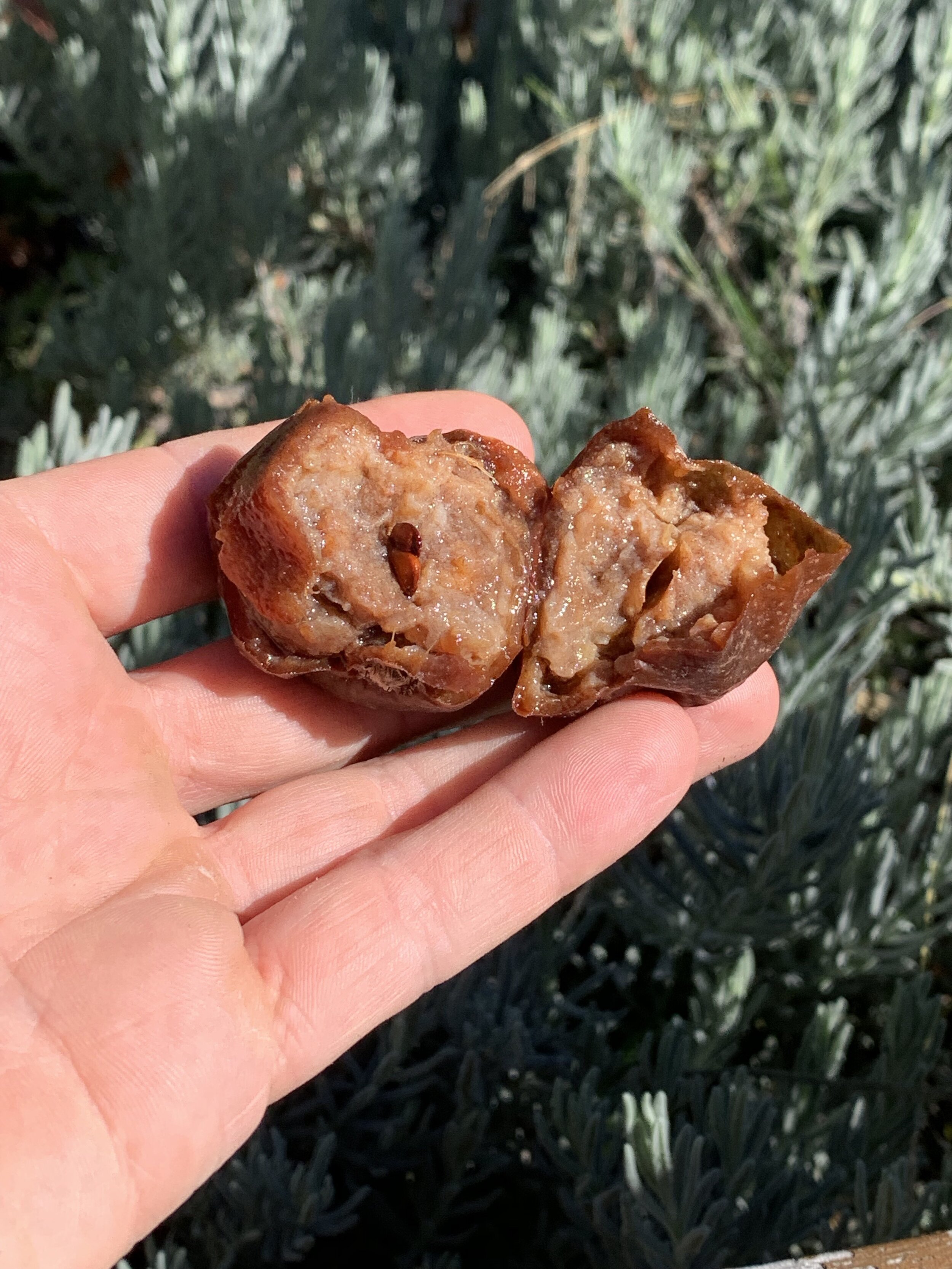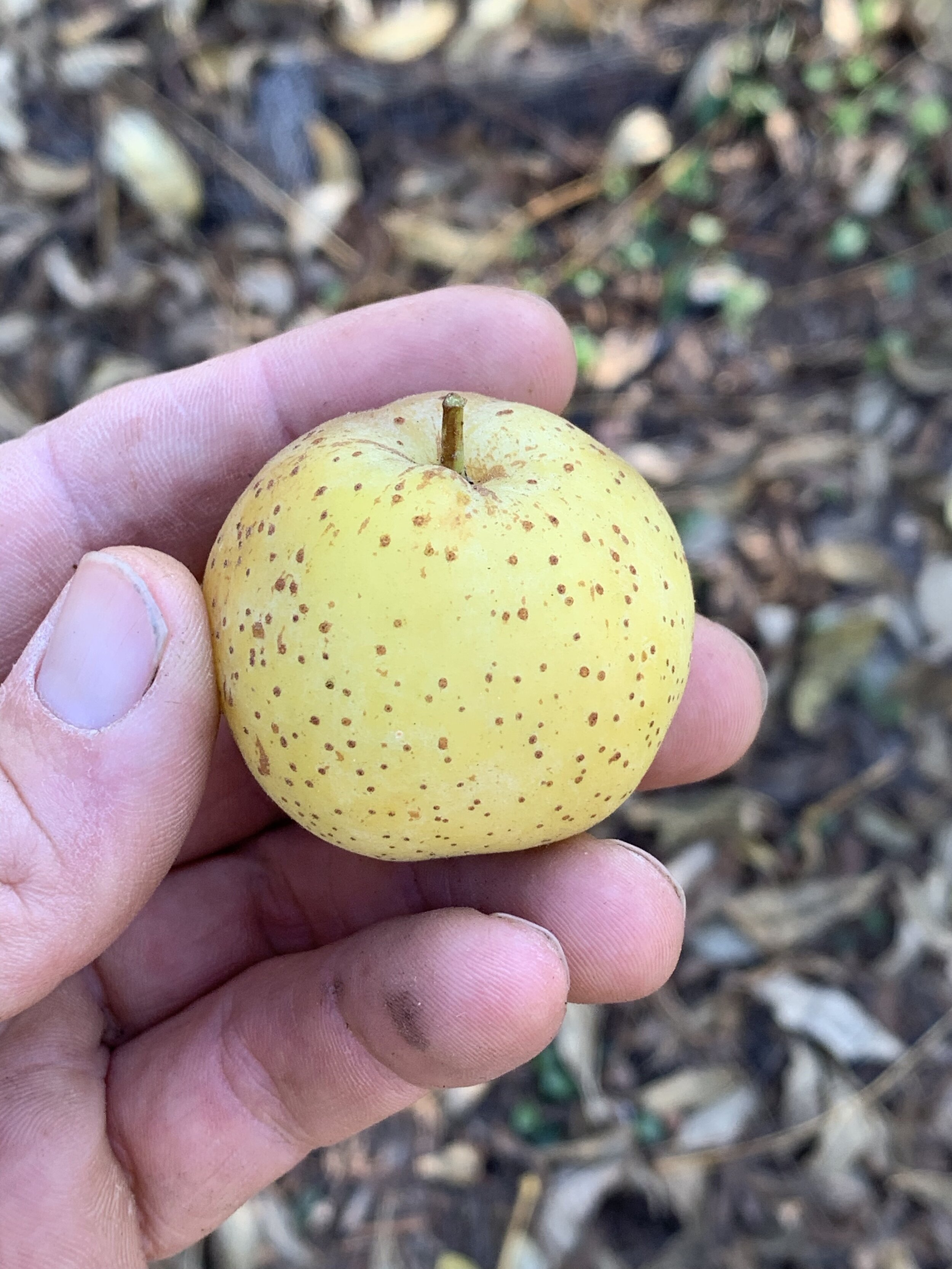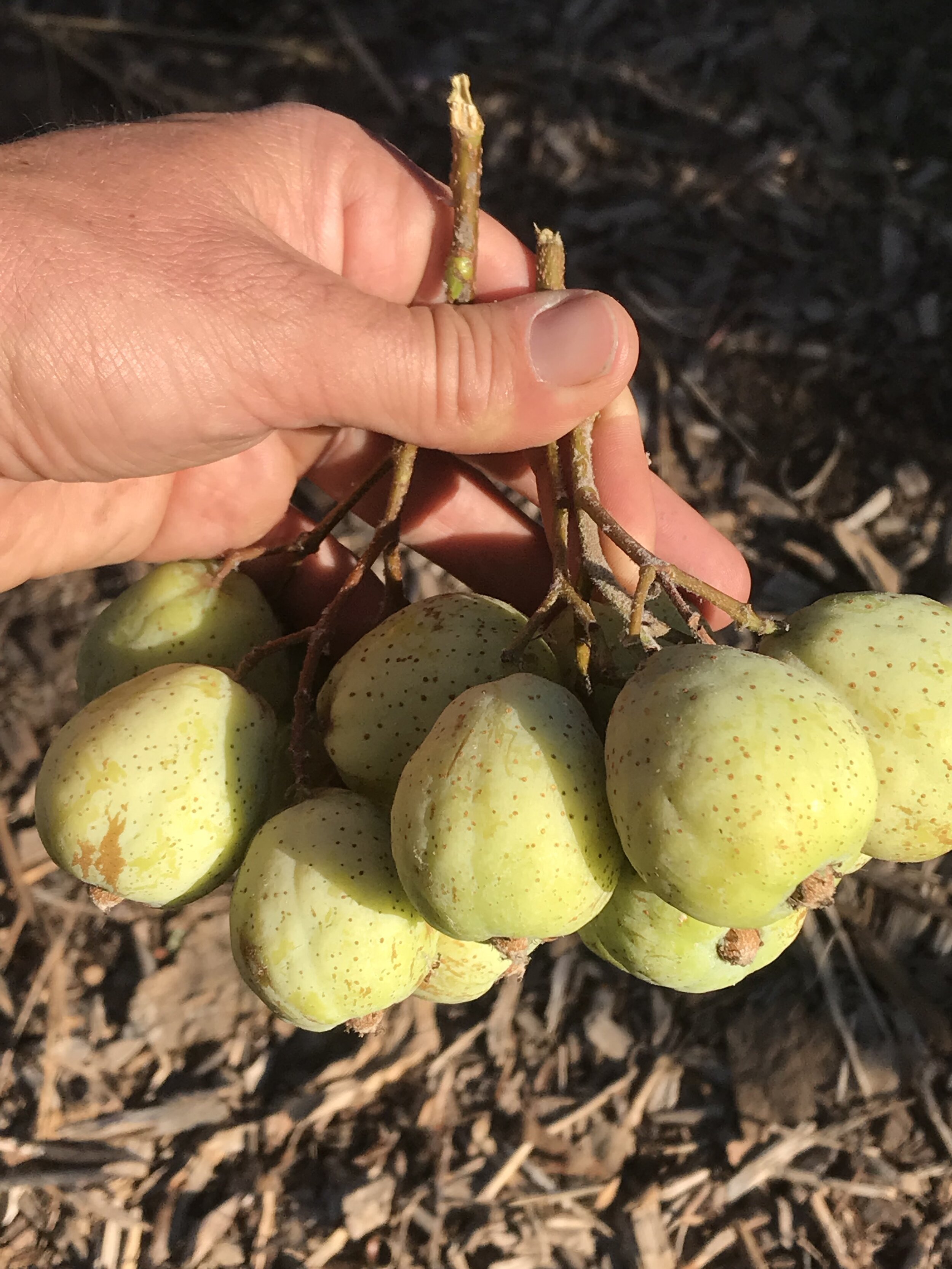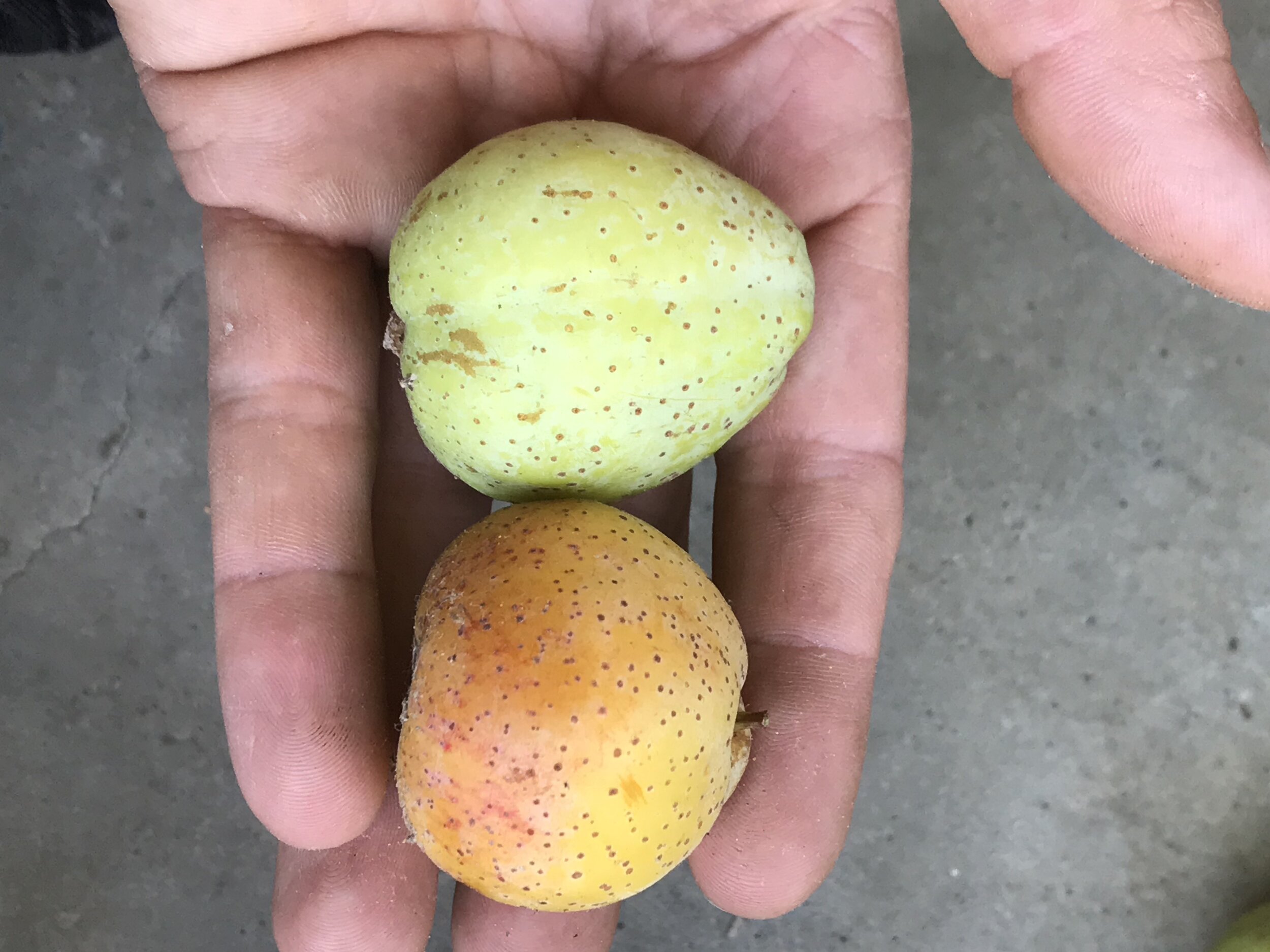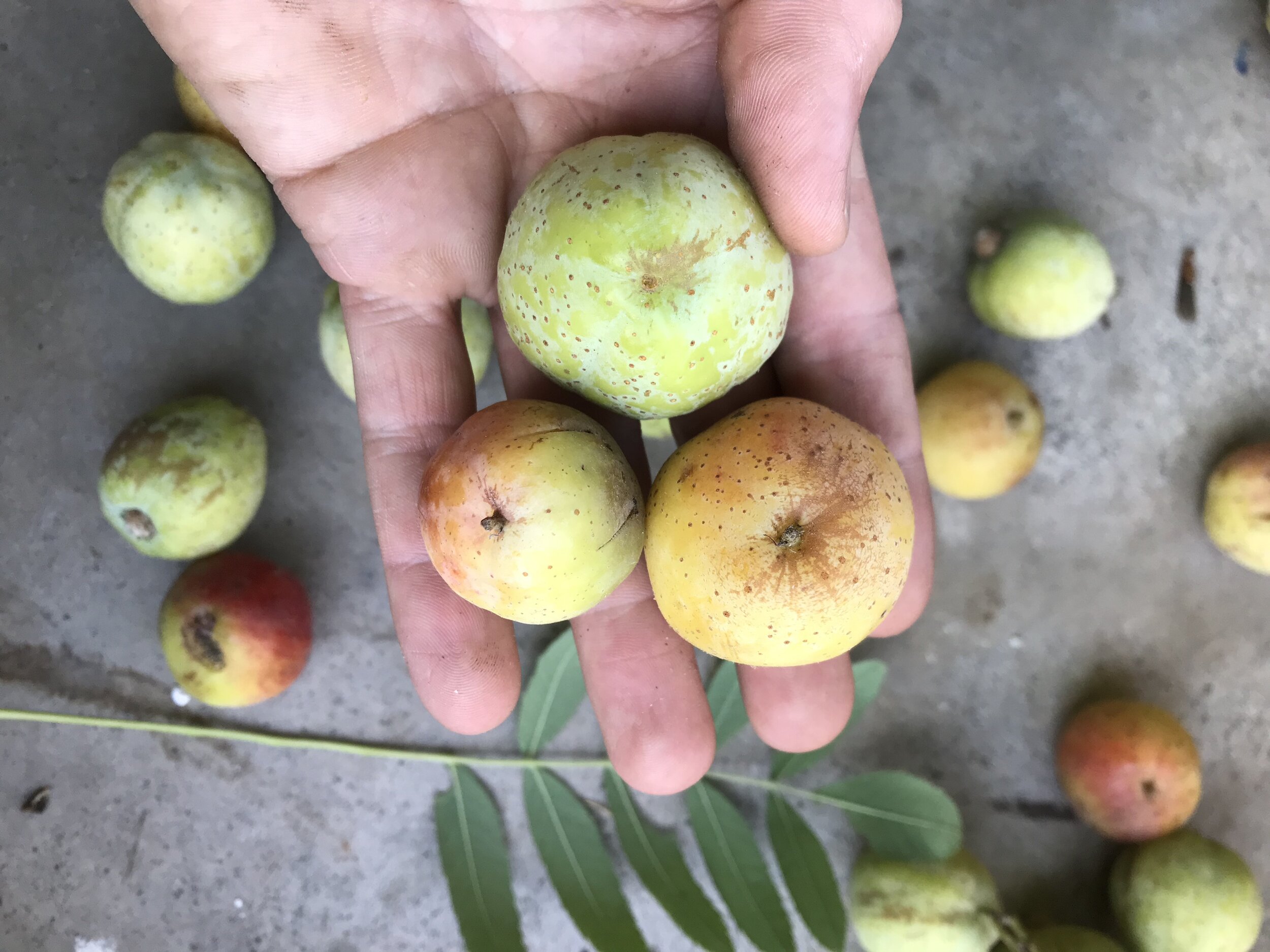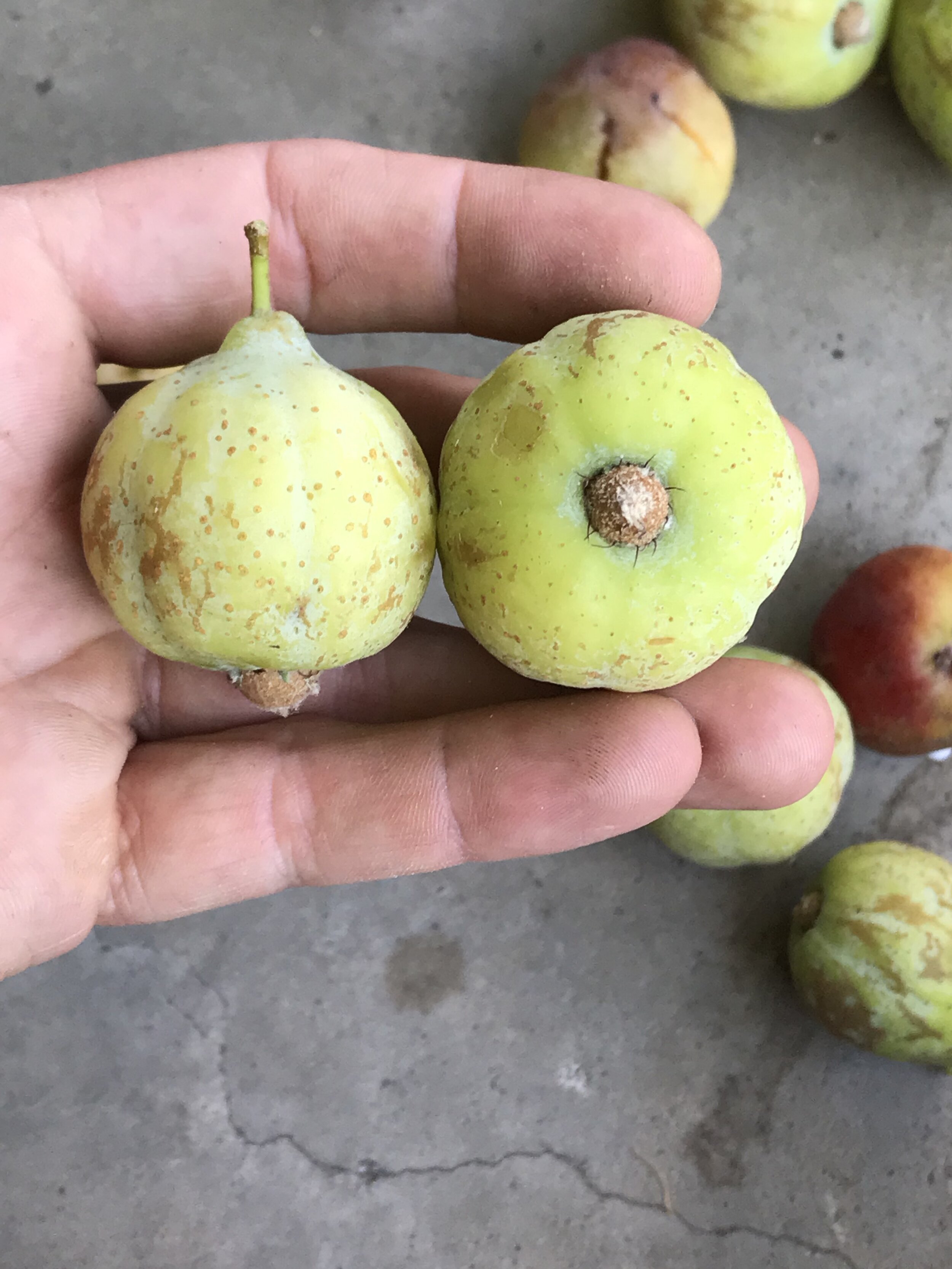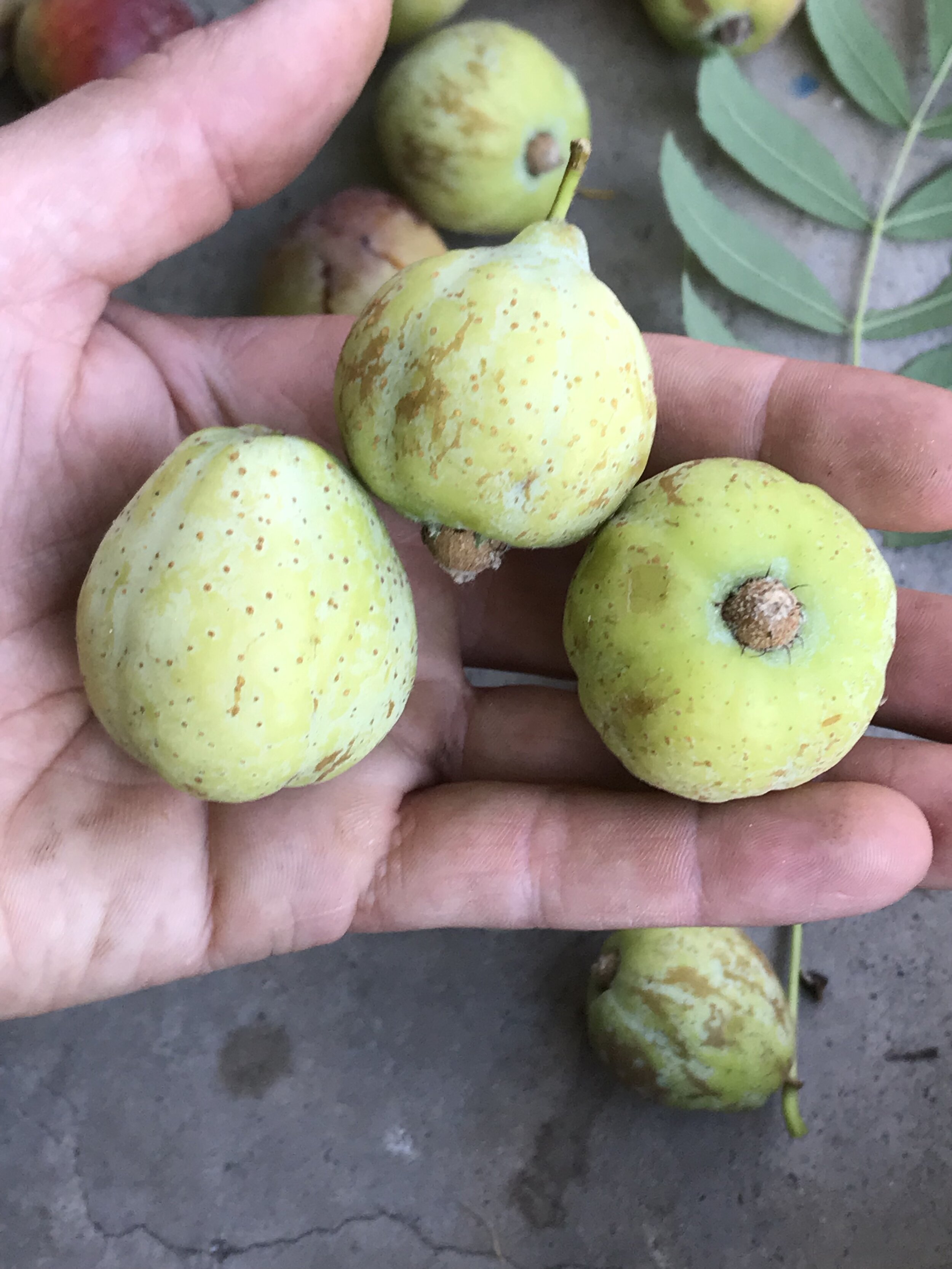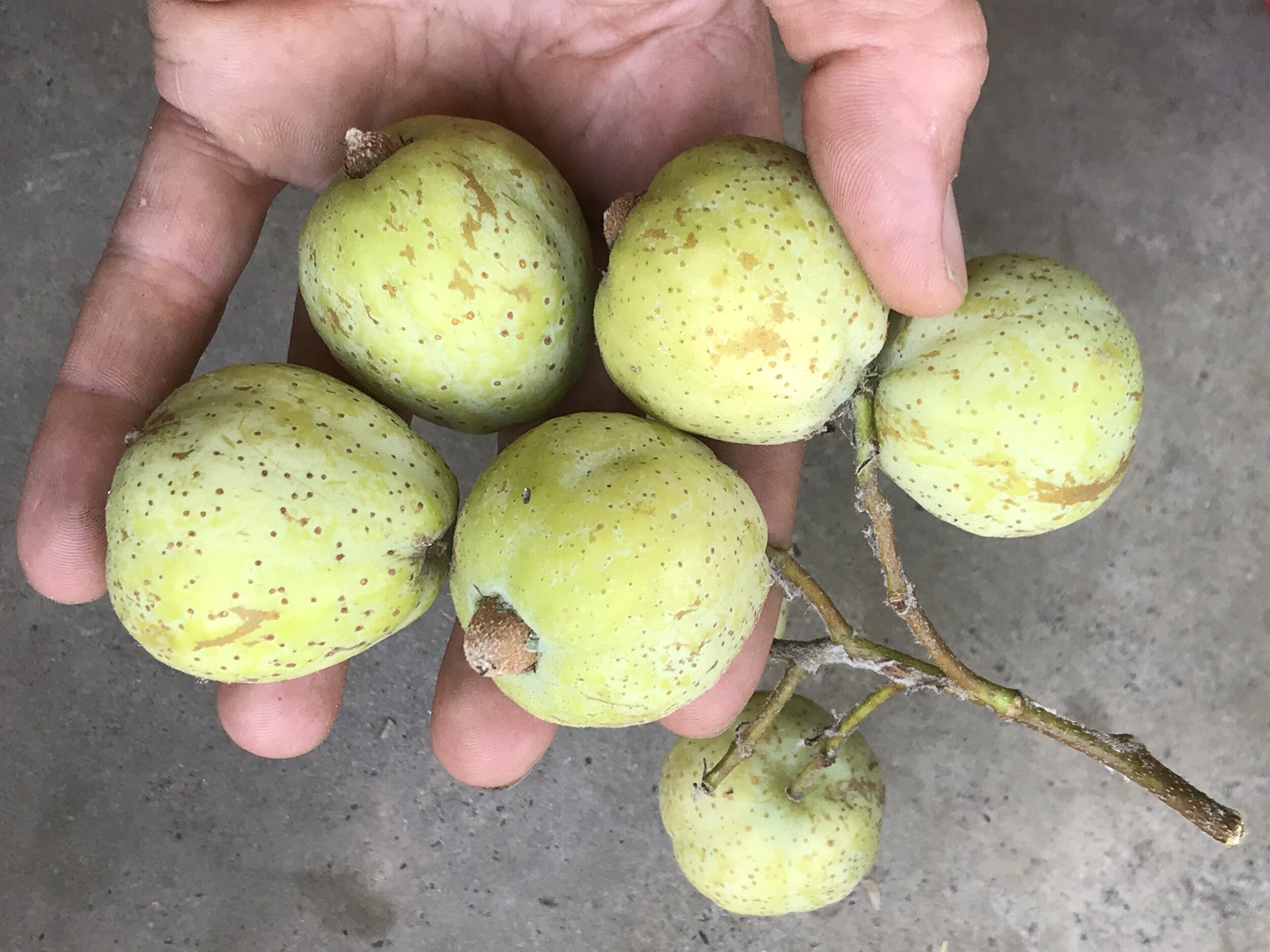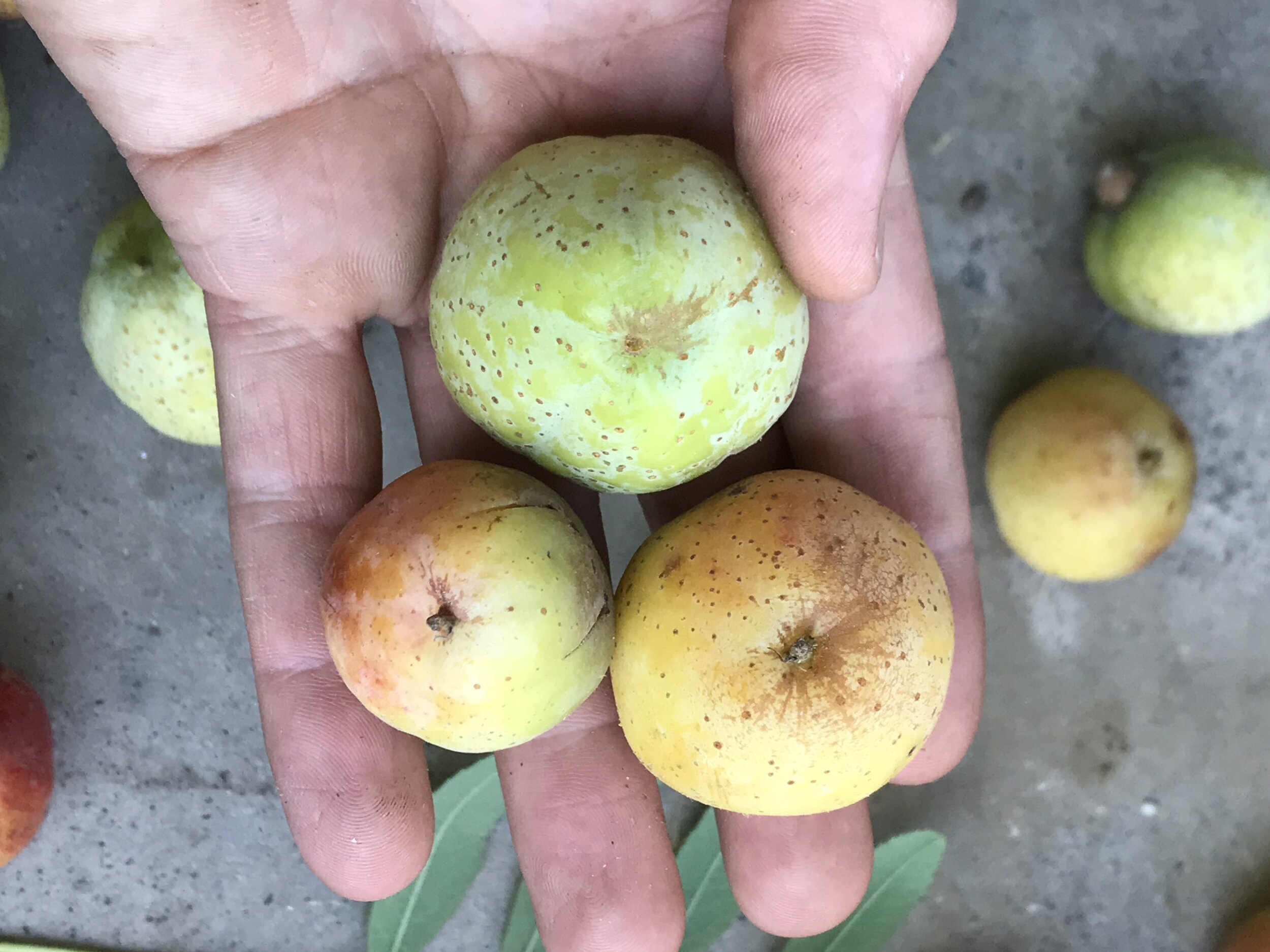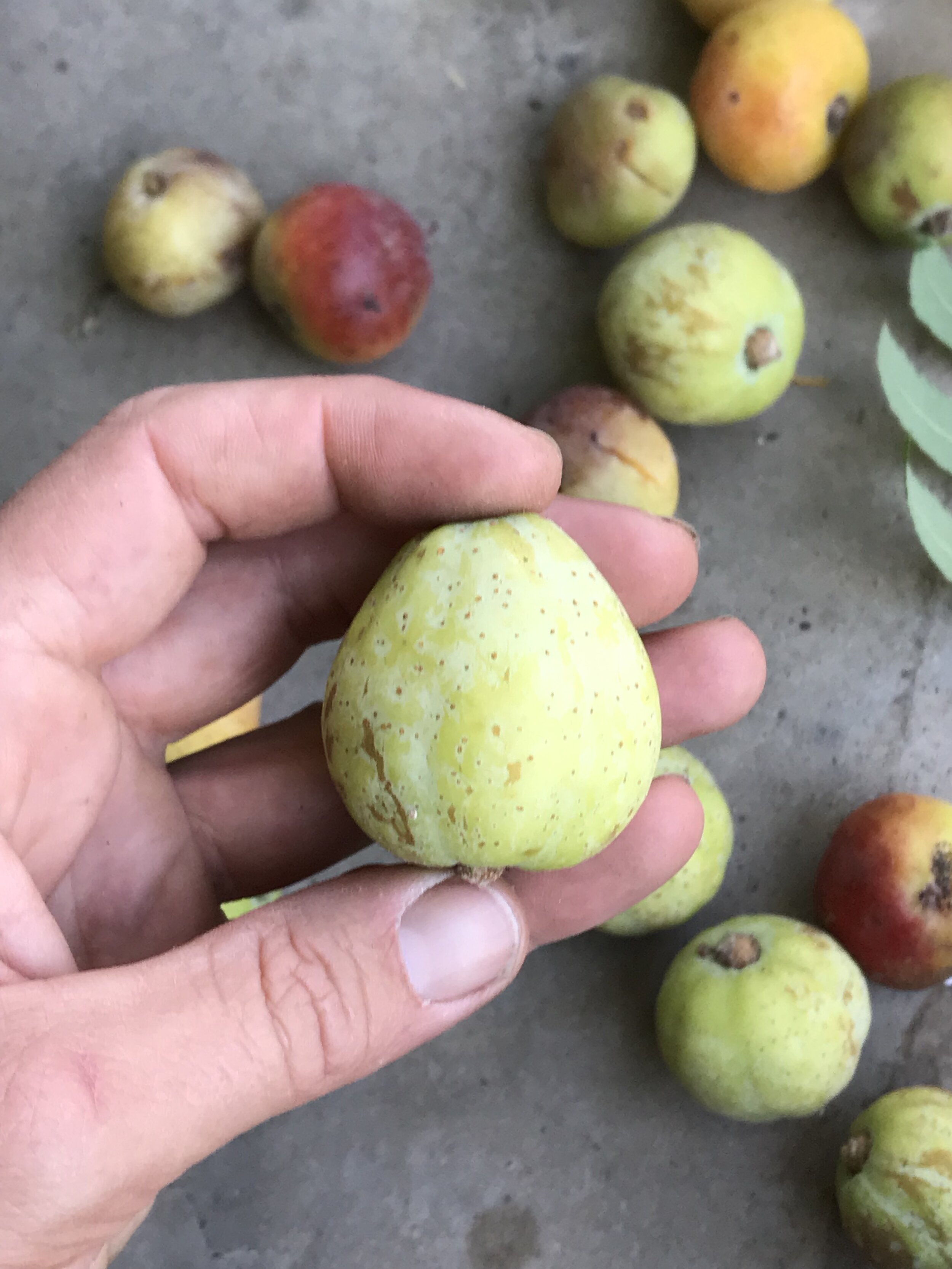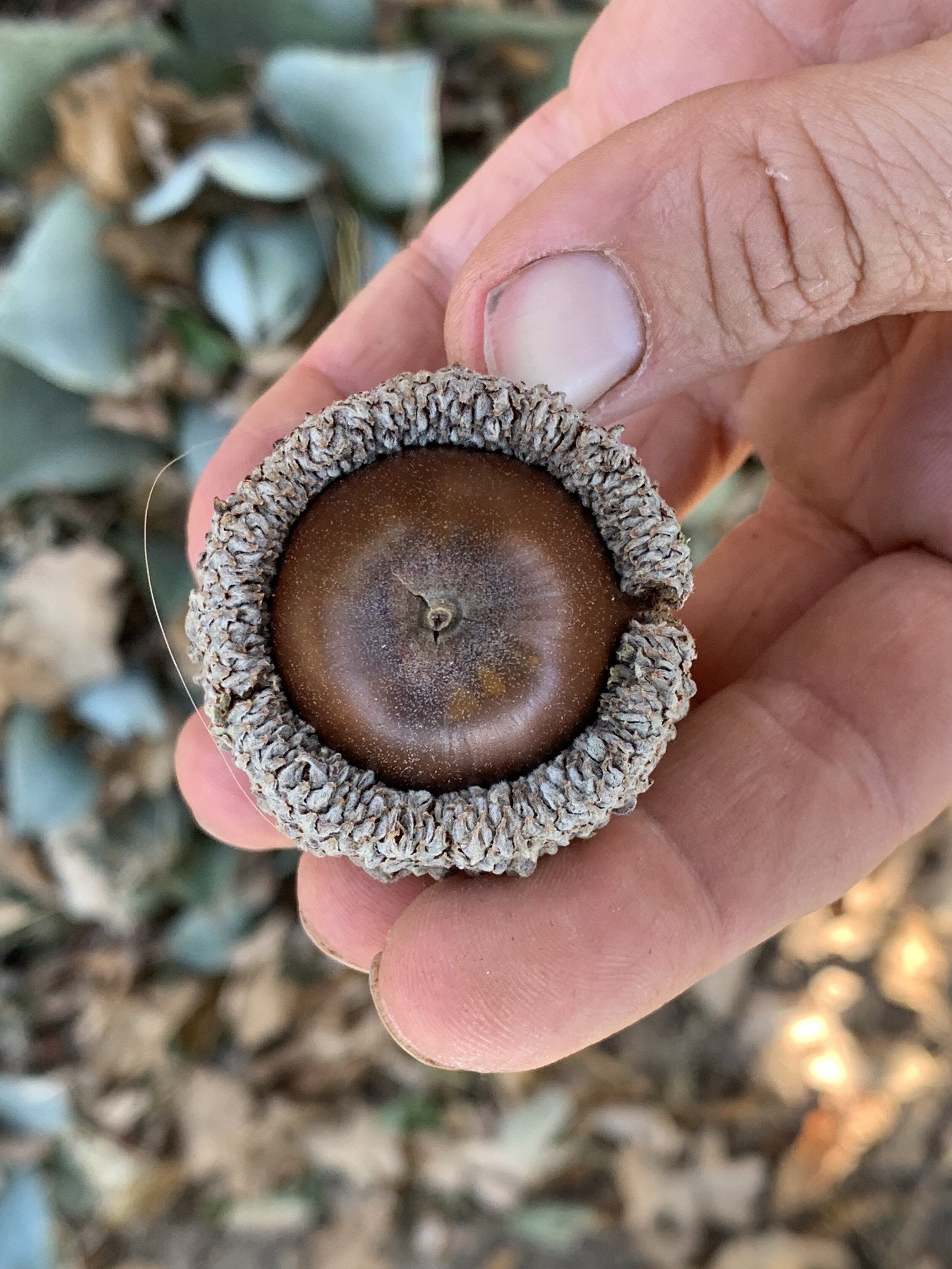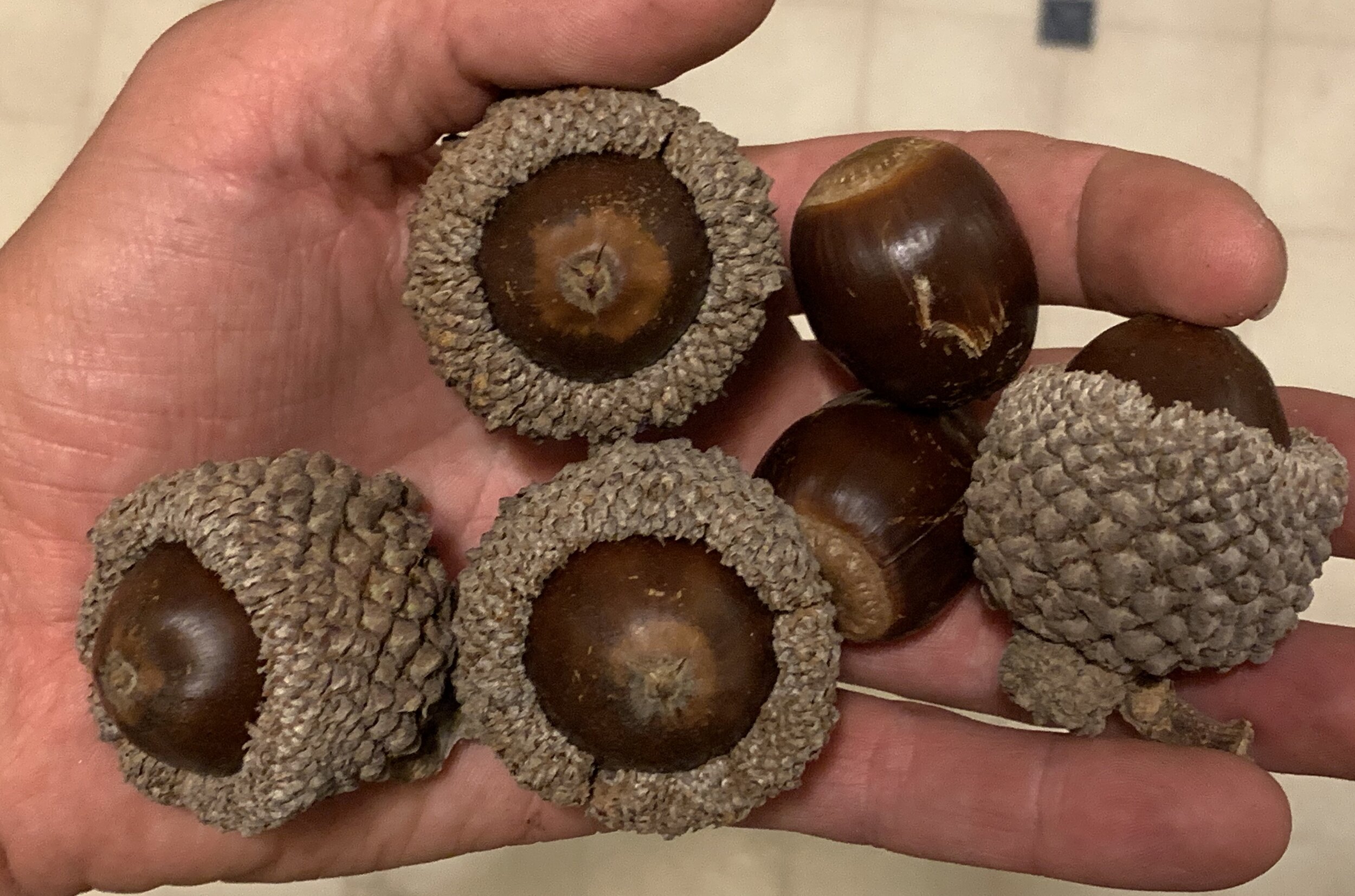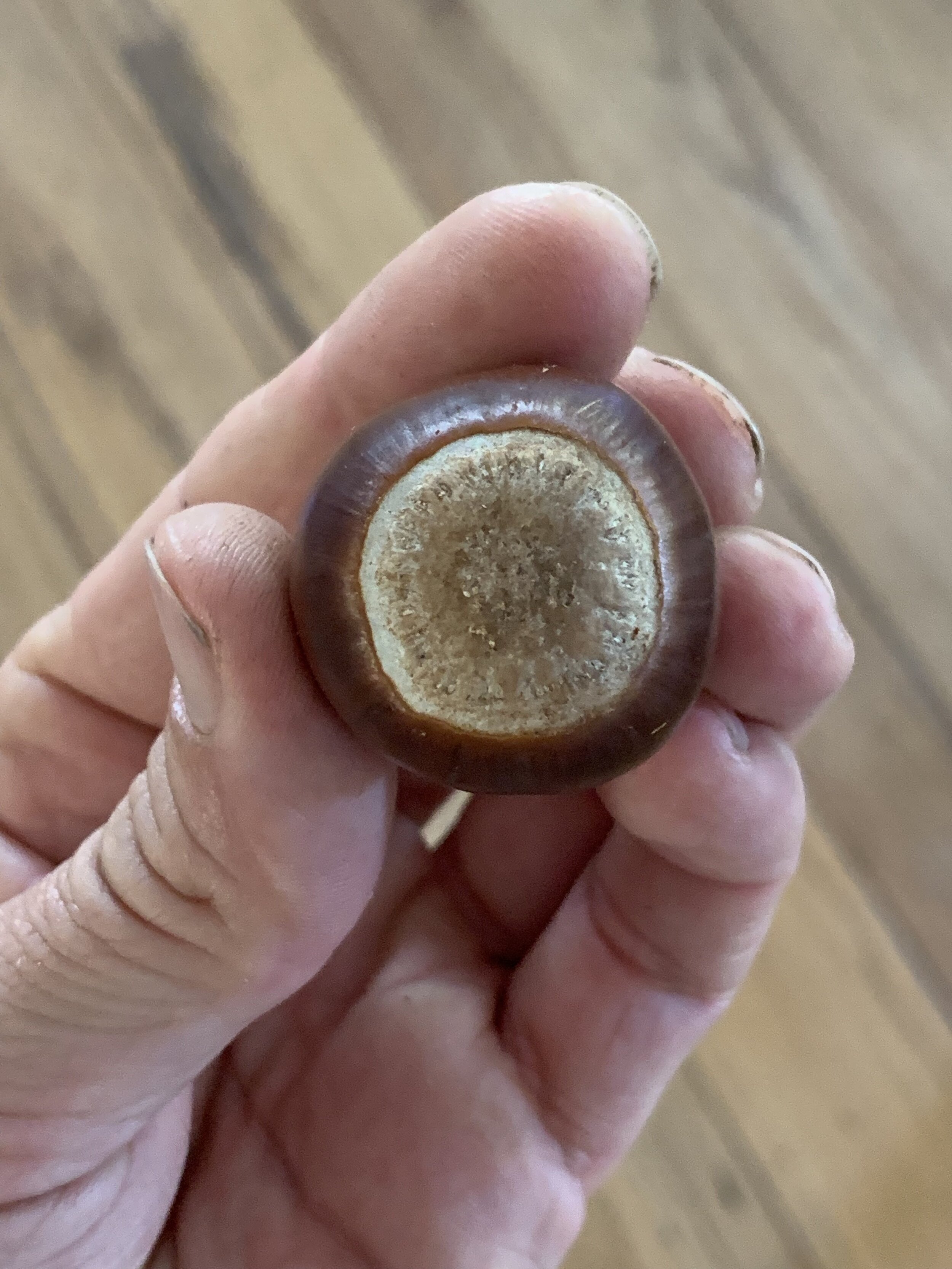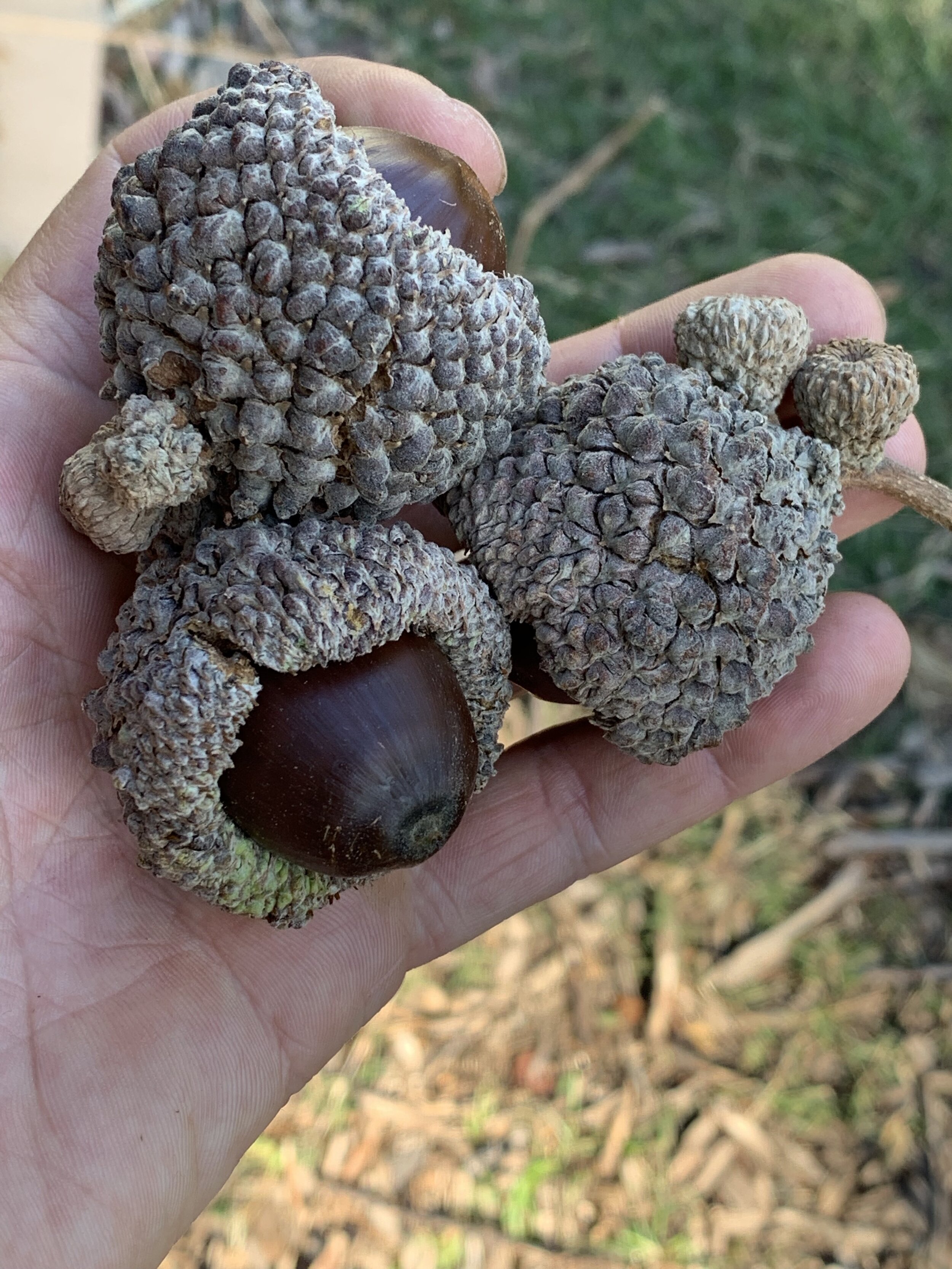Cornus kousa - Kousa Dogwood
Cornus Kousa - a beautiful small tree native to east Asia, Korea, China and Japan. Trees bear an edible fruit. The thin fruit rind is best discarded as it imparts a bitter taste. The custard-like pulp can be eaten when ripe or used in jams or sauces. The fruit is not widely eaten but can be seen used as a landscape tree, in botanical gardens, etc.
Chestnuts, hazelnuts and heart nuts....
Seeds
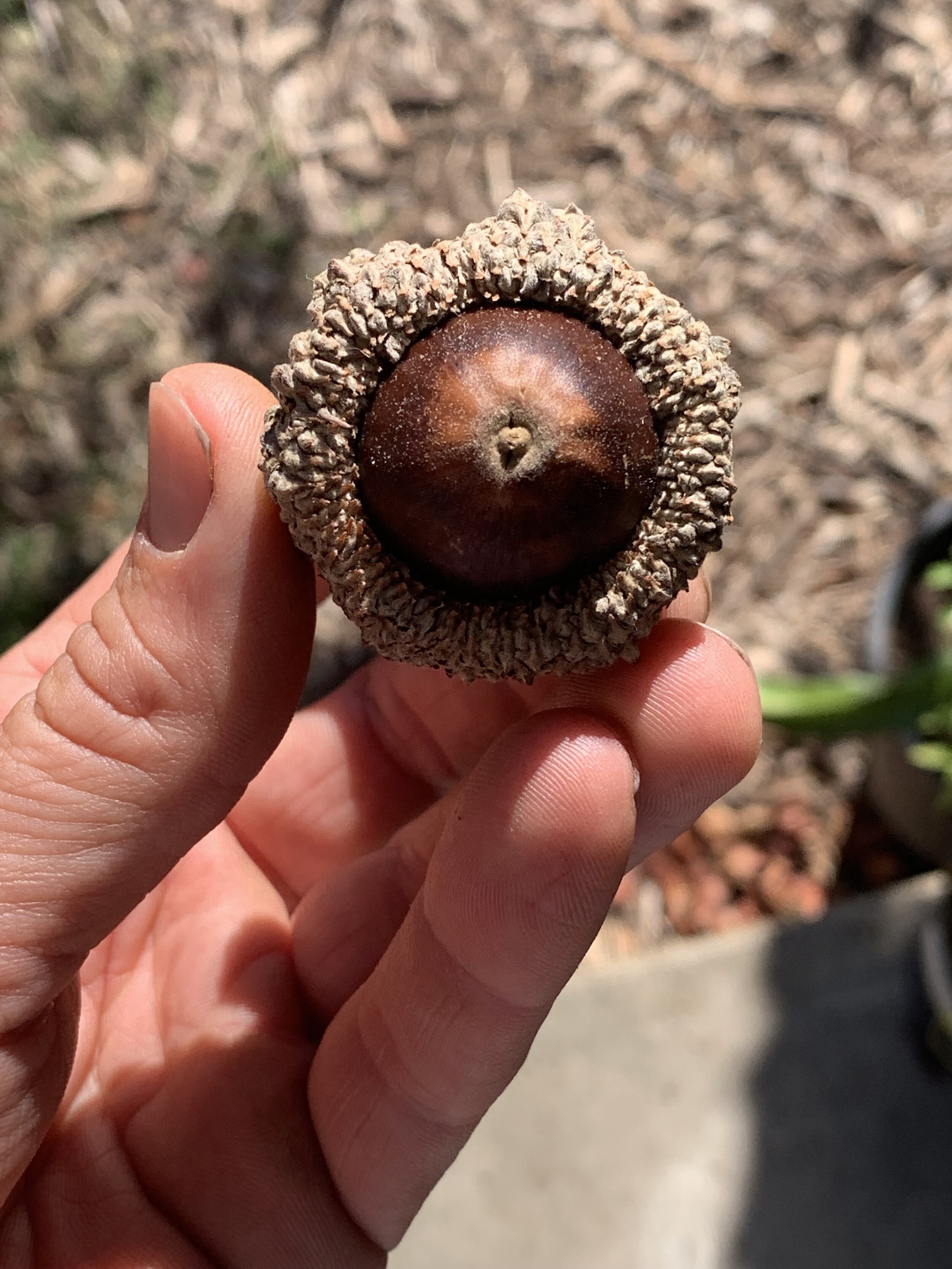
Trifoliate Orange - Poncirus trifoliata
Native to China and Korea, this is the most cold hardy
Trifoliate orange and various hybrids of this plant are widely used as citrus rootstocks. The plant is a fairly cold-hardy citrus (USDA zone 6) and will tolerate moderate frost and snow, making a large shrub or small tree 4–8 m tall. Because of its relative hardiness, citrus grafted onto Citrus trifoliata are usually hardier than when grown on their own roots.
Recent studies have revealed that the trifoliate orange contains aurapten at a high concentration, which is one of the functional components having immunity against citrus tristeza virus (CTV).
he fruits are very bitter, due in part to their poncirin content. Most people consider them inedible fresh, but they can be made into marmalade. When dried and powdered, they can be used as a condiment.
The fruits of the trifoliate orange are widely used in medical traditions of East Asia as a treatment for allergic inflammation.
Castanea spp. Luther Burbank hybrid chestnuts
Poncirus trifoliata - Trifoliate orange
Genetic diversity among Burbank Sorbus domestica seedlings. -Fall 2019.
An unusual variety of Sorbus domestica.
Quercus spp., Q. macrocarpa?
I found this unusual species of Oak the other day falling from a neighborhood tree.
The closest similar oak species I can find is Quercus macrocarpa, the Burr oak or Mossy cup oak. However Q. macrocarpa has a more hairy cup with clearly visible hairs along the cup margin. In contrast the cup of this acorn was extremely thick, hard and woody, almost like scales.
One possibility is that this is a hybrid of Q. macrocarpa and some other oak species and that this acorn is an one of many phenotypic expressions.
Quercus macrocarpa is one of the largest seeded oak species in the world and the largest in N. America. The largest is the neotropical Quercus insignia. The seed is notable for its massive size and considerably low tannin content when compared to other acorns.
Any thoughts on positive ID welcomed in Comments.
